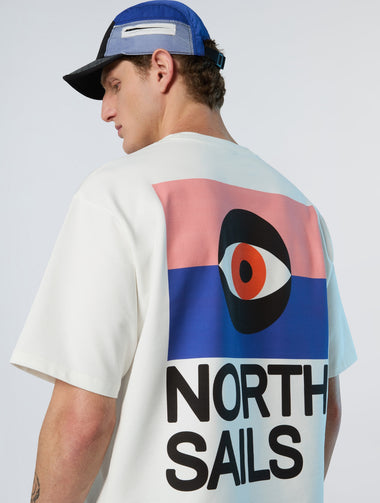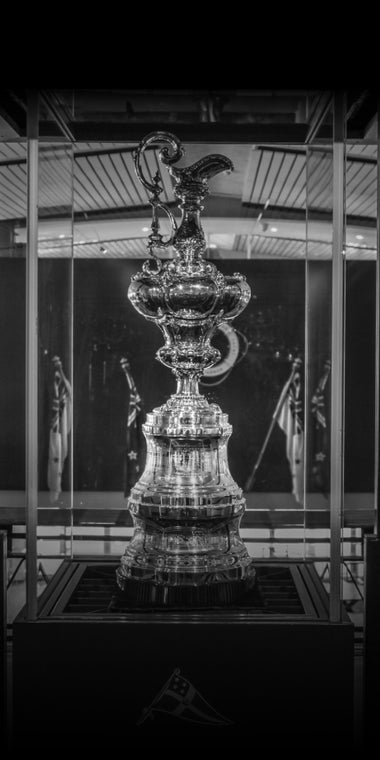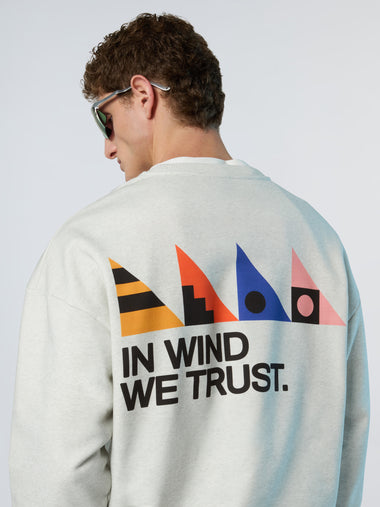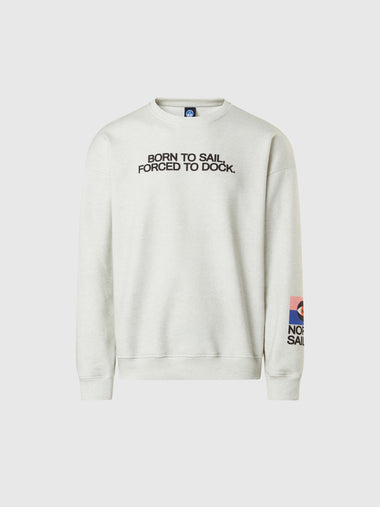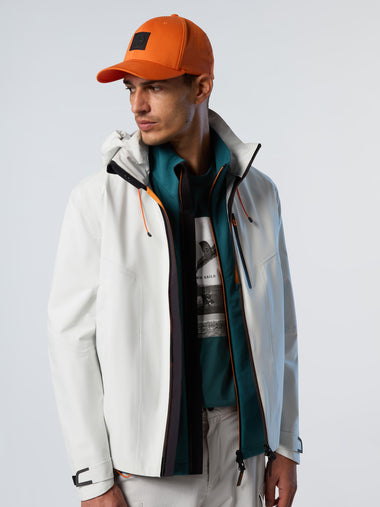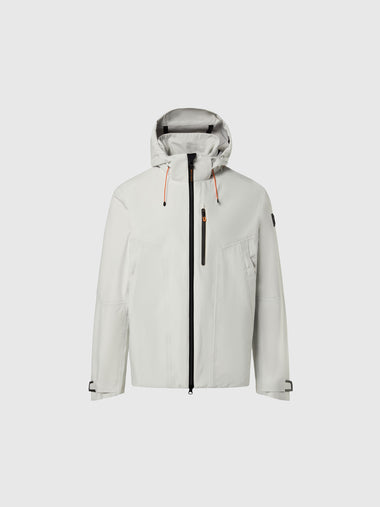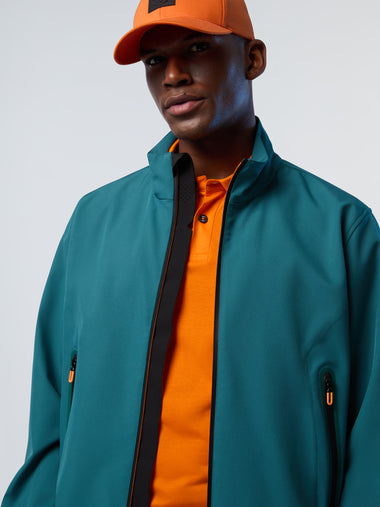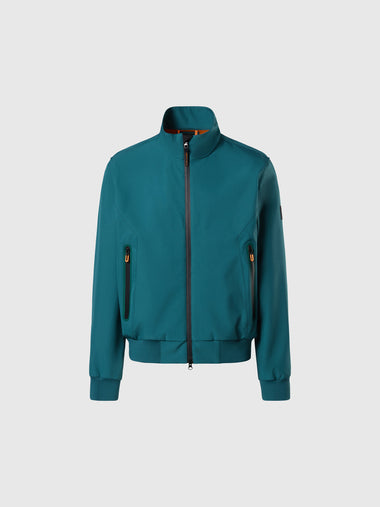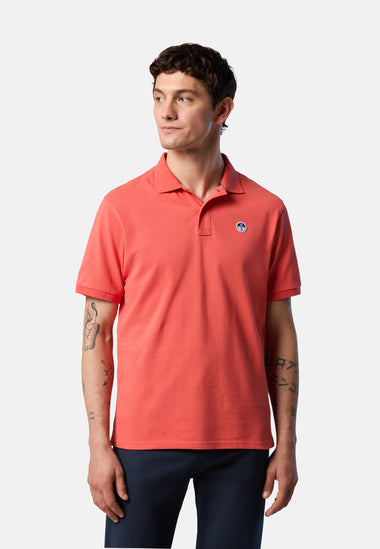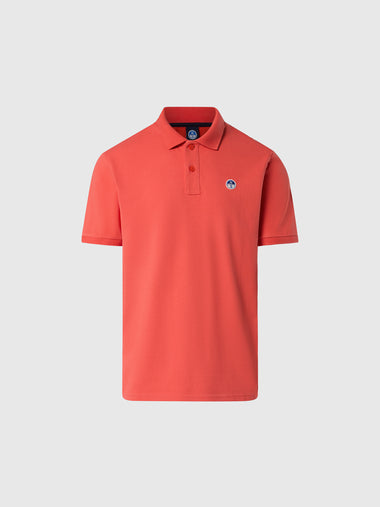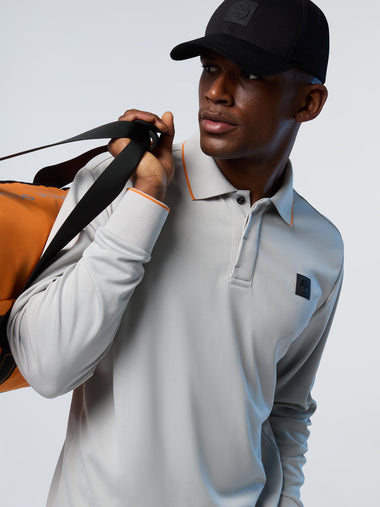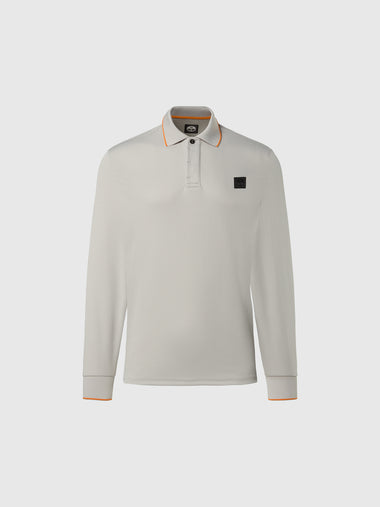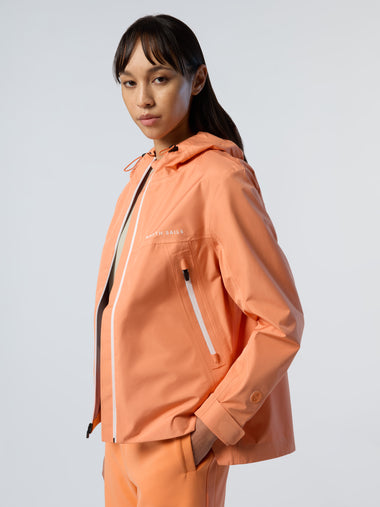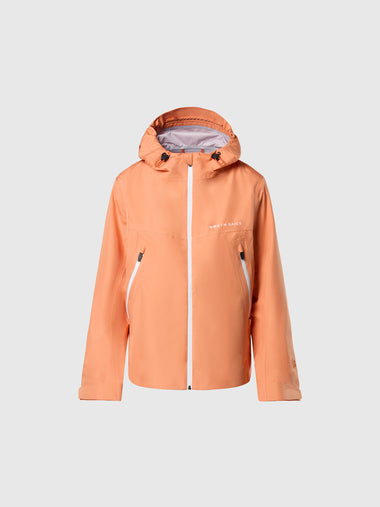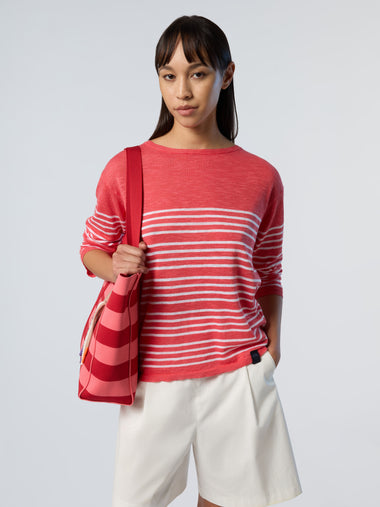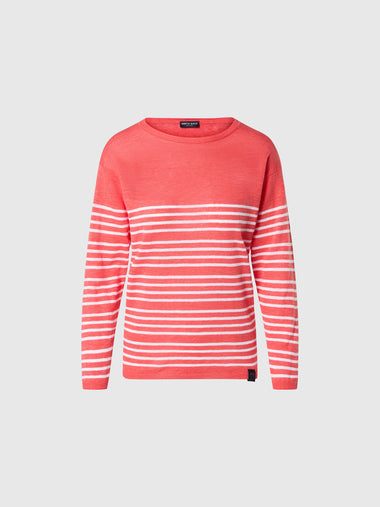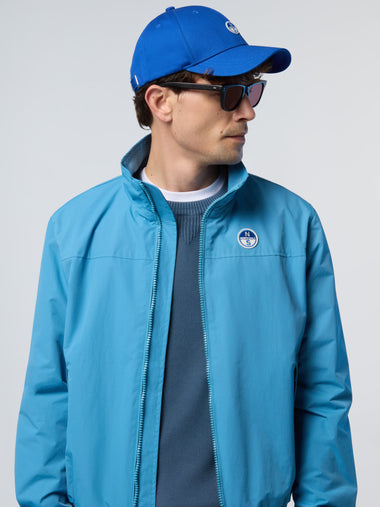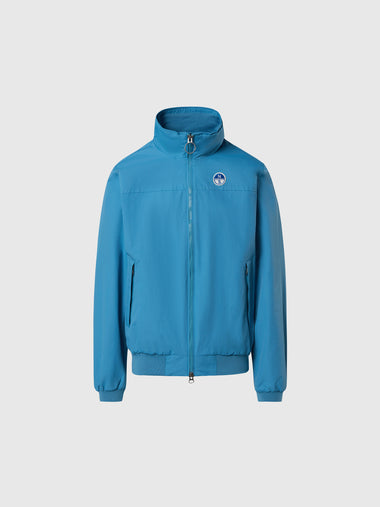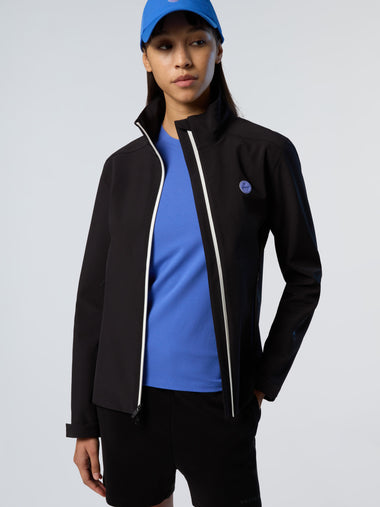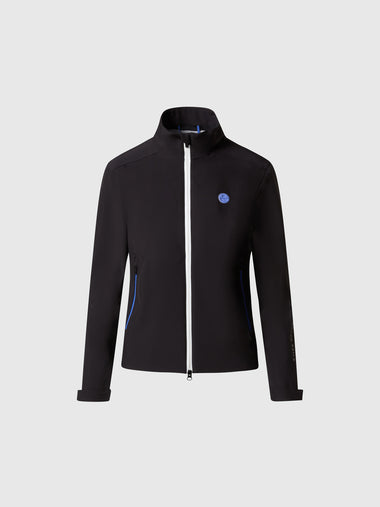NORTH SAILS BLOG
Tutto
Events
Guides
News
People
Podcast
Sustainability
Tech & Innovation
Travel & Adventure
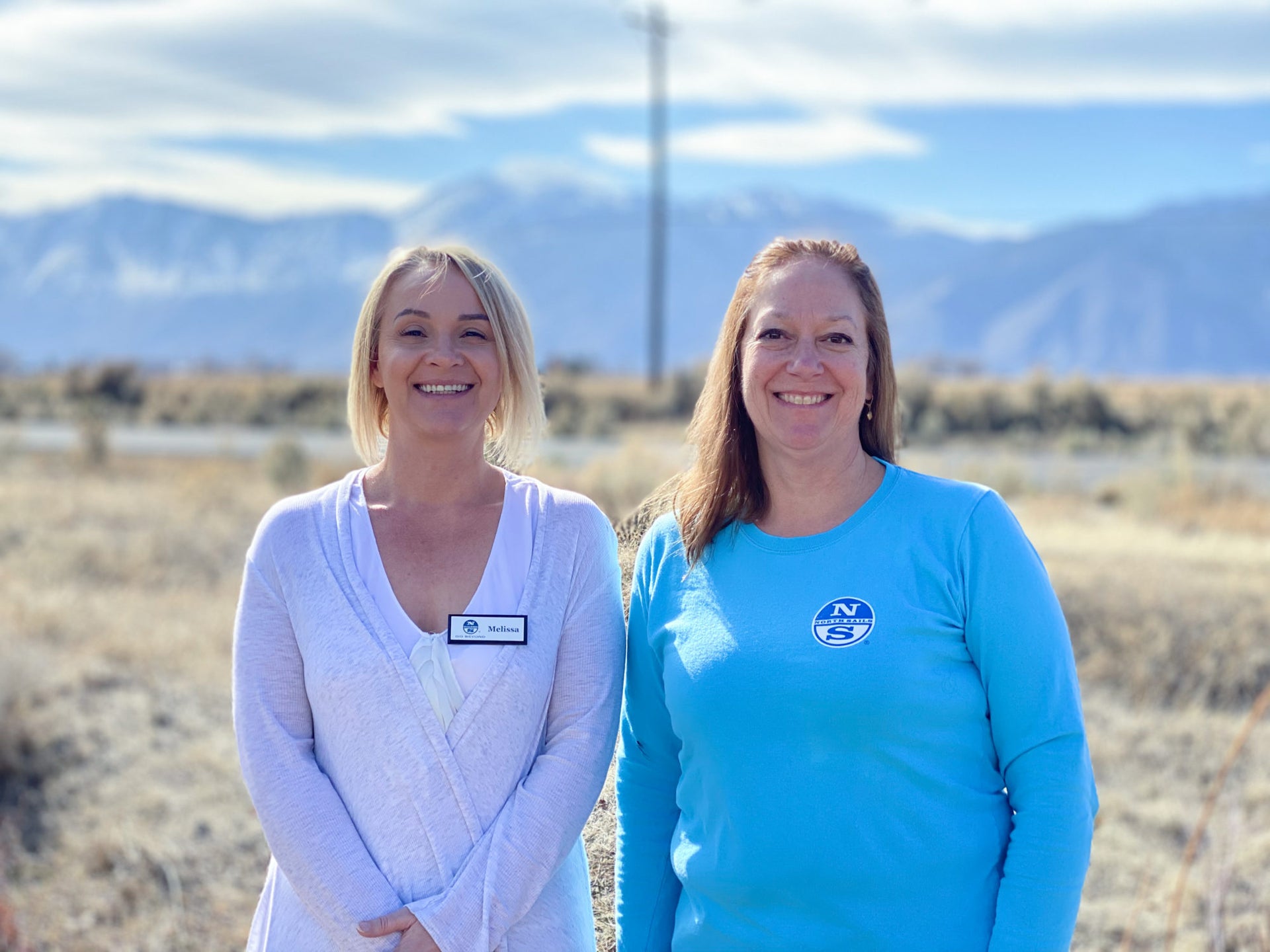
MELISSA WOODS & SHEILA VAN DEUSEN: HR ADMINISTRATION
INTERNATIONAL WOMEN’S DAY AT NORTH SAILS
Introducing Sheila Van Deusen & Melissa Woods: North Sails Human Resources Administration
In celebration of International Women’s Day, we introduce two women who make our company great. Both Melissa and Sheila focus on employee relations. Through their passion for each individual who is part of our global network, they play an intricate role in retainment and quality of life for North Sails employees. The HR department also provides essential regulatory compliance and fosters relationships with North Sails employees worldwide.
Sheila Van Deusen came to North Sails after a 28-year tenure in the casino industry. “I didn’t know much about the business or manufacturing. And working in sailmaking was something new, so I thought I’d give it a try.”
Though HR is similar across a variety of companies, Sheila loves it because there is never a set routine. “There’s always diverse responsibilities, and that is exciting. I like working with people, so this job suits me perfectly.” She also appreciates that the sailmaking industry is evolving. “The industry is continuously changing, which keeps people engaged and stimulated whether they have been here for twenty years or two months.”
Sheila believes it’s essential to work as a team, and transparent communication is vital. “One of my main goals is to support the employees and allow them to feel comfortable coming to me if they need help. Our employees need to establish long-term steady income and benefits so they can provide for their families. Both the employee and company benefit from the long term relationship. For newer employees, it’s our responsibility to get them to feel a connection to the company and our values.”
“Sheila dove into her HR position in a hurry and knew all the 110 employees by name within one week. If you ever feel stressed, step into Sheila’s office, and her calm demeanor will put you at ease within five minutes.”- Per Andersson, 3D General Manager
Sheila commented, “I’m thankful I had the opportunity to take on this role with North Sails,” Sheila adds. “My position helps create the vision and flow for the company, establishing core values, and helping employees understand just how important they are to the business as a whole.”
“My skills, experience, and background have brought a different perspective of how Human Resources can operate in Minden, NV. I feel I have the liberty to create a path into areas where I’d like to be more involved. The people that work here are amazing, and I feel fortunate to be a part of this group.
Melissa Woods is Human Resources Assistant and is approaching her five-year mark with North Sails. She enjoys working for North Sails due to the integrity and professionalism of the workplace. North Sails promotes an open and positive work environment, which in turn nurtures honest, dependable employees. Melissa handles all of the new hires, employee records, recognition, and offers her support with administrative time to time.
“Melissa makes sure Minden guests are properly greeted, have the best accommodations, and are taken care of in high order. She’s a great addition to the North Sails team because she’s always happy to help whenever needed, and she always does it with a smile!”- Per Andersson, 3D General Manager
“Working with Sheila has been great. She’s pushed me to become a better communicator and has also helped me to expand my viewpoints,” Melissa says. “She’s taught me different ways to approach our work and complements our team in many ways. I respect and admire how she can handle difficult situations with ease and composure. I look forward to learning more from her.”
Melissa signed on first as a temporary employee in September of 2015 and quickly established herself as a trustworthy and capable co-worker. She says North Sails provides a positive work culture, “and through training, we try to set up our employees for success right when they first get their foot in the door. We are always looking for ways to keep our employees and temps involved, motivated, and excited to be here.” Recognition awards, Christmas parties, and company picnics all make a significant impact, she adds.
Melissa enjoys working for the company and says, “the best thing about where I work is the people I get to work with here. We have a great team here in Minden. We spend a lot of time collaborating ideas, finding ways to make them happen. I am honored to be a part of a company that takes pride in their product and always looks for ways to stay ahead in an ever-changing industry.”
“A company like North Sails continues to evolve and innovate its product. That’s why we get the best at all levels. The amount of care that our team puts into what they produce can’t be beaten.”
READ MORE
READ MORE
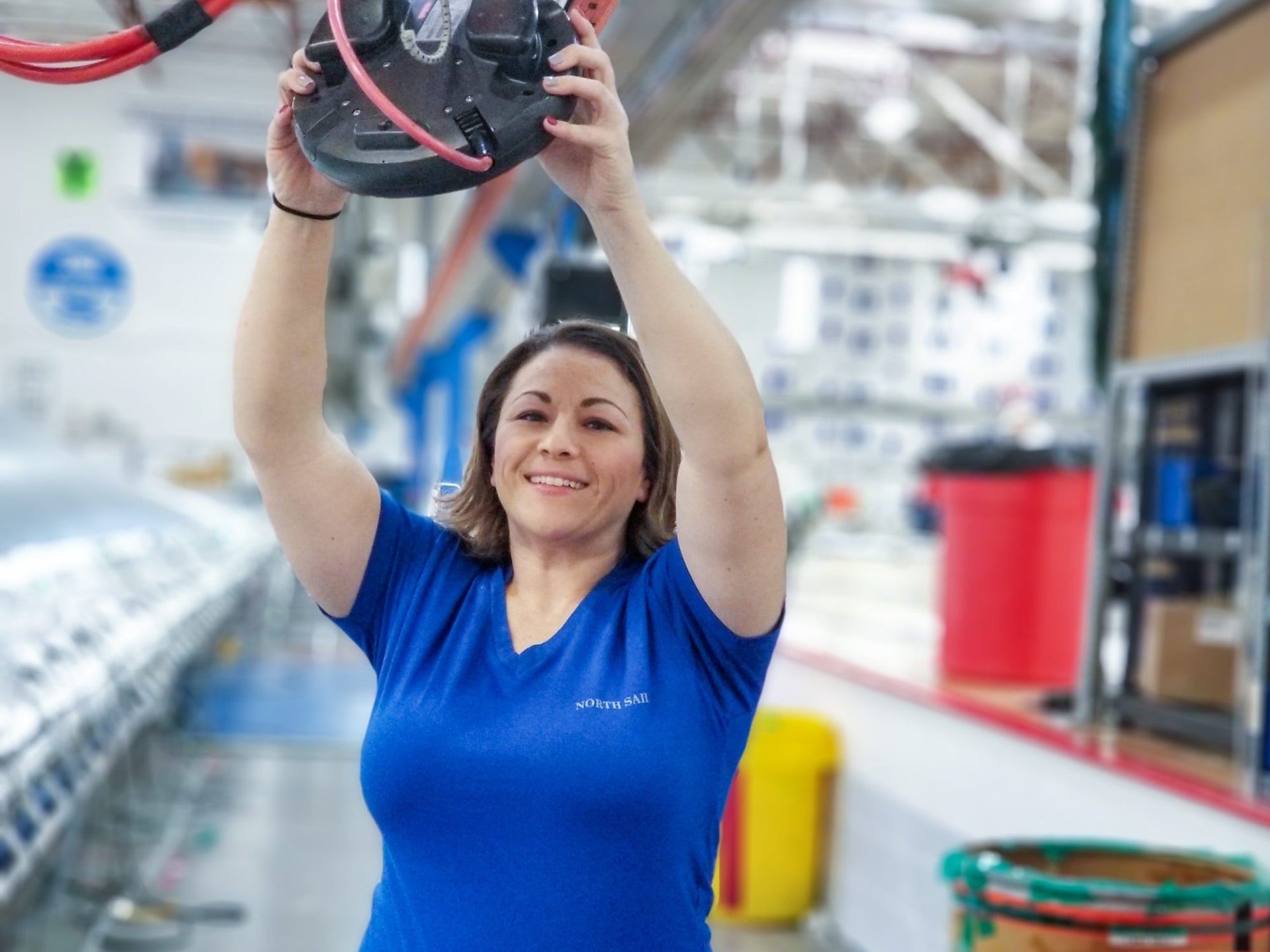
JESSIE BARNES: BUILDING ONE SUPERVISOR
INTERNATIONAL WOMEN’S DAY AT NORTH SAILS
Introducing Jessie Barnes, Building One Supervisor
In celebration of International Women’s Day, North Sails is proud to introduce Jessie Barnes. Barnes stands out in the Minden manufacturing facility for her passion for creating something unique not found anywhere else in the world, and role as a leader.
Jessie Barnes joined the Minden, NV team right out of high school. She heard about a job as North Sails films operator through friends and relatives and was intrigued about the idea of building sails in the desert, so she decided to give it a shot. Nineteen years later, she’s at the epicenter of Building One, where 3Di sails are molded and shipped out across the world. As the Building One Supervisor, Barnes is responsible for keeping three shifts on schedule and meeting shipping dates.
Barnes’s role has evolved throughout the years, because of innovations that moved production from 3DL to 3Di. She gets to be involved in all parts of production but works closest with the gantry and molding team. Each day is different, and even when working through the occasional production or employee challenge, she never hesitates to lend her employees an extra hand.
“Jessie runs a tight ship with the least amount of employee turnover of any department. We are trying to find out her management secret.” – Per Andersson, 3D General Manager, Minden, NV
“The Minden facility is great for long term employees because their knowledge and experience is essential to our process,” Jessie adds. “New employees have tons of opportunity for growth. In Minden, women fill many leadership roles and positions. I’ve had the opportunity to work with so many great people across the world in my time here.”
In her role, Barnes manages 25 people over three shifts and the daily production schedule, finalized each Thursday. When Jessie arrives at work, she oversees an in-depth debrief with the graveyard shift before rolling into a morning brief with the new shift. At this time, she reviews company-related briefings on safety or other topics, as well as a prioritized list of the Building One tasks to complete that day.
Making the molding to shipping process seamless is Barnes’s goal, and her prioritizing and skills in efficiency play a considerable role in the operations in Building One. She often is tasked with temporarily reassigning operators to other departments and helps avoid back up during the steps of production. “Meeting production deadlines and throughput requirements is tough, but we make it work,” she says. “Communication must be 110% because it’s a ripple effect when something is missed—it’s not just one shift affected, it’s all three, which could be many, many sails.”
Minden is responsible for molding some of the largest and highest performance sails in the world. Sometimes the sails are too large to move by hand and must be transported by a crane with 10,000 lbs load capacity. “When a sail comes off the mold and has all the hardware added, they are just massive.”
“North Sails is proof that a company’s greatest asset is the people it keeps.”
Jessie’s team is diverse, and she says everyone brings their own set of skills to the table. “I feel that each team member is focused on building quality sails, and they enjoy working together.”
Juggling individual personalities is the hardest, but also the best part of her job. “Communication is key. Everyone needs a clear understanding, so we can all collaborate and work together effectively.”
“I get to work with so many people throughout three shifts each day;” she says, “And we are all working towards one common goal –to build the best sails in the world.”
Jessie has plenty of great memories from her history with North Sails. One that sticks out the most is the implementation of 3D production in Sri Lanka. “Training and working alongside that team and having the opportunity to experience an entirely different culture and workplace is something I will never forget. The Sri Lanka team came to Minden first, and then I got to go there a few years later—an awesome experience.”
“North Sails technology has come so far from the older technology we use to build,” she says. “Our company is all about continuously improving to advance and stay competitive. Each day we are working to improve our sail building processes, testing the highest quality materials with the latest technology to ensure we provide our clients with the most premier product on the market.”
“I took this job because the company is unique, and the work is true craftsmanship. To me, the coolest part of this job is that we build incredible sails in a very small city here in the desert, and we can ship them all over the world.”
READ MORE
READ MORE
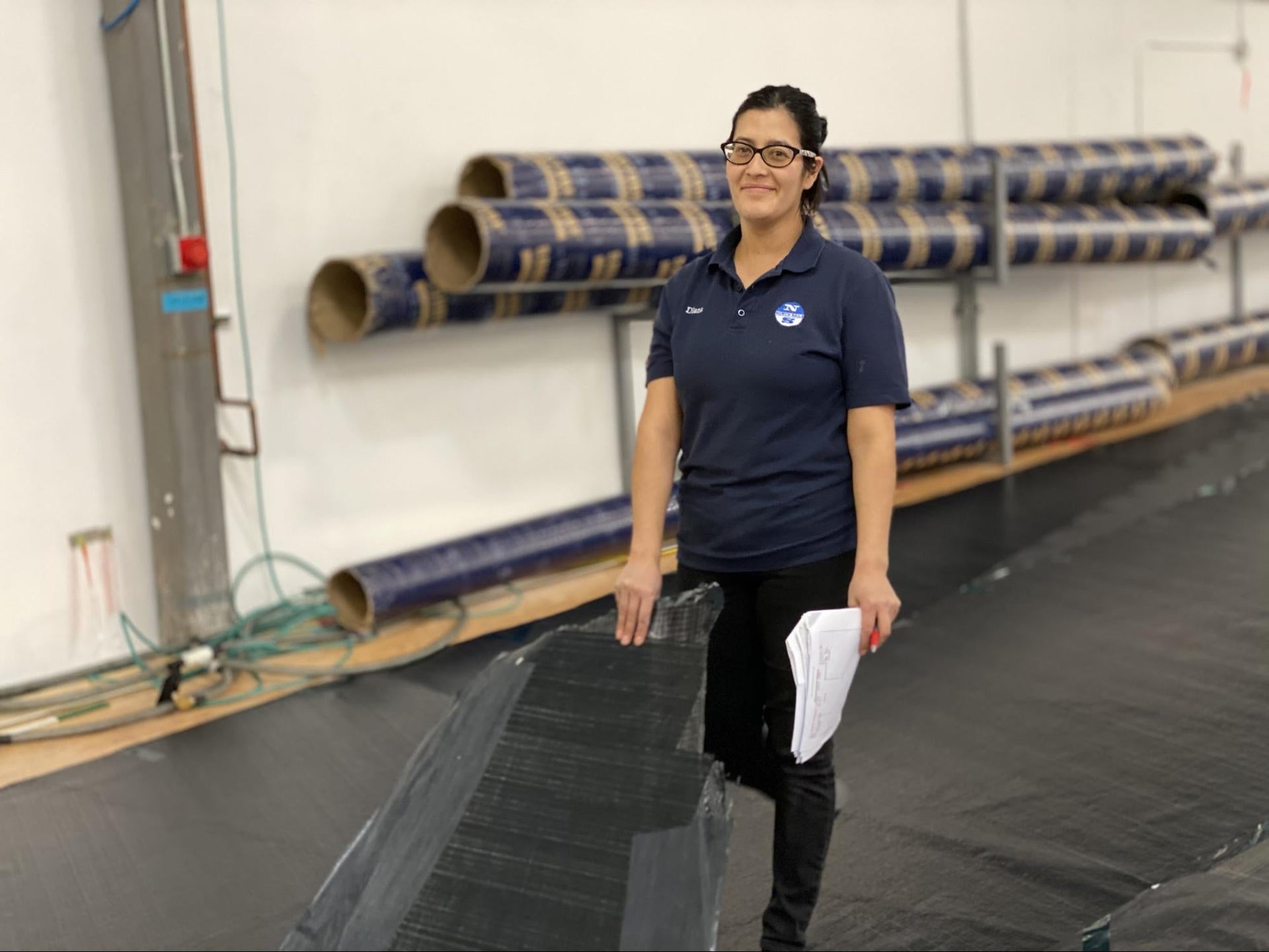
DIANA SEARS : UTILITY OPERATOR AND QUALITY CONTROL
INTERNATIONAL WOMEN’S DAY AT NORTH SAILS
Introducing Diana Sears: Utility Operator & Quality Control
In celebration of International Women’s Day, we introduce Diana Sears, Quality Control Utility Operator who spreads her knowledge of the 3D sail making process across all areas of the manufacturing facility.
What drew Diana Sears to working for North Sails? “Someone told me they were building sails out here. I said, ‘in the middle of the desert?!'” She’s been in Minden for 13 years, and has worked in various departments during her tenure.
Diana’s North Sails career began in Films during the 3DL days. Within a year, she moved over to the gantry team; the group responsible for flying over a sail to ensure it is smooth when draped on the mold. As 3Di came online, Diana shifted her role to work with the pregger, the machine that spreads the thin-ply-filaments needed to make 3Di tapes.
📸 Amory Ross
Her in-depth knowledge of the manufacturing process eventually landed her in the Quality Control department, where she is oversees the details of an entire project. Diana’s strength is her experience and versatility. In addition to QC, she is also a senior level Utility, meaning she can provide assistance throughout the entire manufacturing facility.
As a Utility operator, Diana had to adapt to the changes of the sailmaking process. “I have experience in many different areas of the facility, I can be sent anywhere to help out as needed. If someone calls last minute for extra hands, they know I can step in to help get the job done. Mastering the many different manufacturing operations is one thing,” but Diana says the hardest part is our attention to detail.”
Having a complete understanding of the 3Di manufacturing process plays a big role in Diana’s Quality Control responsibilities. As part of the QC team, Diana oversees the details of an entire project, starting with making sure the proper tapes are selected for the designated sail order. “Each configuration of 3Di it’s own recipe. From the beginning, things have to be accurate, and I make sure each detail is correct. For example, the pregger Department weighs every roll of material (tape) to ensure each meets the targets for consistency and accuracy. If weights, that will red flag the roll before we move into the next phase.”
“I feel like we are part of something way bigger than what we have here, and Minden is pretty big.”
Diana also rides the gantry, providing her with a bird’s eye view of the mold. The gantry is used to apply heat to kick start the curing process and once set, Diana has the ability to fly over the mold before the infra-red lamps heat up to ensure the sail is draped smoothly and then again after consolidation to inspect the sail membrane. Diana focuses on the details of each step to assure quality and consistency.
“My job is so different each day because I get to do many things, and that makes it exciting. It’s the best of everything, and I really like that!” Today, she might work with the pregger team for most of the morning, then takes her expertise to 3D in the afternoon.
“Diana is an expert in every 3D department. Pregger, tape heads and molding. She’s the mother of two beautiful daughters, and is an exemplary employee.” – Per Andersson, 3D General Manager
“I like working in different departments. The constant changing environment keeps it exciting and new. Each day is different than the day before, and it’s fun to be part of every aspect and see the entire process through to the finish line.”
During her time with the Minden team, Diana has twice experienced sailing firsthand. “They took us up to Lake Tahoe to go sailing on a catamaran. Seeing the America’s Cup races in person up in San Francisco was by far the biggest highlight for me.”
“There are many lofts around the world and it’s important to keep in mind how large our company really is. I feel like we are part of something way bigger than what we have here, and Minden is pretty big. This facility and management is very accommodating to employees; that’s just one of the many positives you have working at a place like North Sails.
“I feel like we are part of something way bigger than what we have here, and Minden is pretty big.”
READ MORE
READ MORE
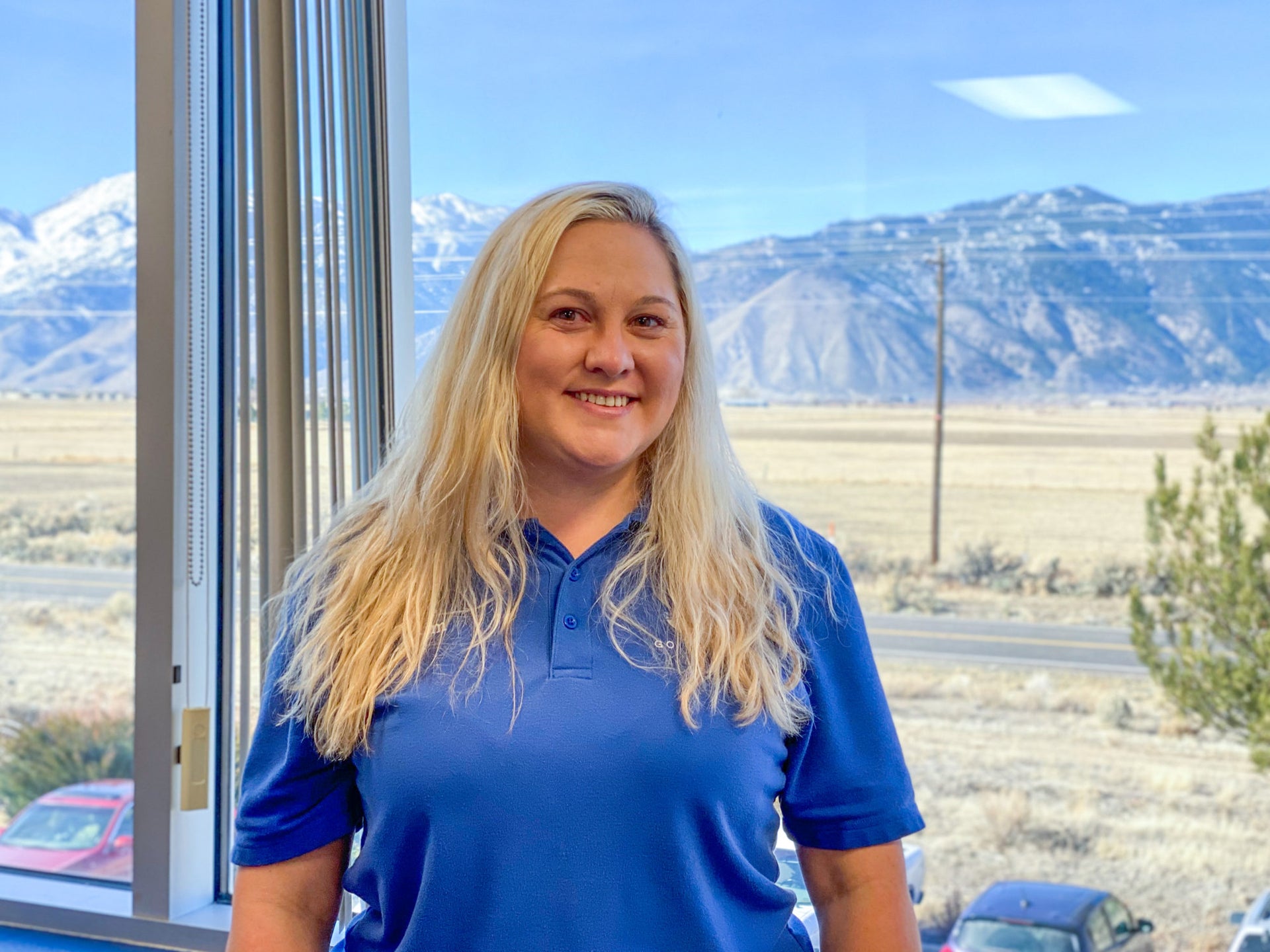
KIM DEPUTY: FILE PROCESSING
INTERNATIONAL WOMEN’S DAY AT NORTH SAILS
Introducing Kim Deputy: File Processing
In celebration of International Women’s Day, we dove into the brains behind the molding software to see what the role of file processing entails. We are proud to introduce Kimberley Deputy, who brings the sails from designs on the computer to life for North Sails customers.
Deputy is a File Processor at North Sails in Minden, NV, and March 31st marks her 17th year with North Sails. Throughout Deputy’s tenure with the company, her role has evolved along with the technology, and she now plays a major part in the production of 3Di sails worldwide.
In her role as File Processor, Deputy receives incoming sail design files and prepares them for 3Di build process. She works closely with the North design team to address any issues before the design is processed and built, utilizing proprietary software that produces sail production packages. Deputy is responsible for any adjustments made before the design files are finalized, and the sail enters production.
Image on the left is a headsail file that comes in from the designer. Image in the middle shows where the joiners are placed on each section of the headsail. Image on far right shows what the headsail looks like when placed on the mold.
Before Deputy’s role focused on file processing, she gained experience by working in other areas of the facility, which helped her develop an understanding of the entire 3Di production process. “I found sailmaking to be a unique process, and I was interested in learning more. I wanted to gain more experience, so I inquired about the file processing position; I am very pleased to be given that opportunity.”
Kim gives thanks to 3D General Manager Per Andersson, for his guidance. “He’s not only helped me to learn more; he’s given me opportunities to grow within the company. “Production Manager Brian Loshbough has also been a great supporter and facilitated my transition into file processing, which has been the highlight of my time here.”
Kim’s typical day consists of receiving sail designs and prepping their various file types for production. She does this using our North Design Suite™ (NDS) and a program called WARPS™. To begin, Kim applies a designer defined sail shape to a virtual mold (one of the large, wing-like structures used in the manufacturing process) in NDS, making sure everything is fair and fits appropriately. Next, she takes that same sail shape and runs it through Warps, telling it which product and associated options to apply: Tier (760, 780, 870, etc.), Exterior, (RAW vs. Endurance), DPI (amount of tape), Furl Style (different patch shapes). Using these inputs, Warps then associates the sail shape with its new tape “layout.”
Kim tests the clew section on the headsail design file to make sure it conforms with the mold. Each file is then placed into the nesting program, which then outputs the tape information and puts the design layout into the language the mold can understand.
This layout defines the types of tape applied and the precise location and orientation. Taping machines, or “Tape Heads,” can read the files produced, and then use them to lay the actual tapes on the floor. Once taped, they are then laid onto the physical molds by the films team that corresponds to the mold file that Kim set up previously, then vacuumed sealed and consolidated using the IR heat lamp.
Kim translates sail design data into software language the 3D molds can understand. She inspects every detail of the design and how it’s applied to the mold. “It’s important to test things out before they make it to the mold to make sure the mold can create the file as the designer has requested.”
“Kim is a design expert in her own right. She can weed out what would likely have been a serious mistake before it hits production. – Per Andersson, 3D General Manager
Sometimes file processing can be tricky, requiring rework or redesign when the original design does not relate to the mold correctly. “It’s not always easy for the sail designers either, but it’s my job to explain what needs to change to them, so the sail designer can adjust the design to make it work with our programs and our molds; making sure things run smoothly is how we avoid issues later on.”
The picture shows the file from our processing software. That highlighted green area is showing the gantry’s motor movements. The arrows on it represent the direction of what side the IR lamp will start from and how many passes each file has. 📸 Amory Ross
Overall her job can be complicated, she says. “The hardest thing is training someone new on how to shape the sail on the molds.” While Kim says it’s frustrating at times, she understands these details are an essential part of her job. “The ability to do a job correctly will set an employee up for success and growth within the company.”
Because Kim is involved in the pre-molding stages, watching it all come together on the production floor gives her the most satisfaction. “Sometimes, I get the chance to help drape the sails on the molds. That makes me feel like I am part of the process from start to finish.”
Although Kim’s on-the-water sailing experience is limited, she does have a good idea of what it’s like. One of her favorite memories was when Minden employees had the opportunity to travel to San Francisco to watch the America’s Cup World Series in October of 2012. Kim was also sent to Sri Lanka in 2018 to help align the 3D teams with up to date software. “How the sails are built is very special, and I enjoy all aspects of working here.”
What makes the Minden manufacturing facility a great one? “Our sails are a lot stronger and last longer than basic sail technology,” says Kim.
“The materials we use improve the overall product; that’s what makes 3Di so special. We take pride in what we build, and that is because we want to provide our clients with the best options in sail technology.”
READ MORE
READ MORE

NORTH COACHING AT THE J-CUP
NORTH COACHING AT THE J-CUP
Expert Analysis with Winning in Mind
North Sails' local experts will be on-hand to provide free expert analysis and coaching to all participants at the J-Cup, July 2-4 2020. Crews in any J-Boat will be able to take advantage of North’s coaching on Thursday and Friday.
Those who register for the complimentary coaching will receive analysis on boat handling and sail trim during racing. Crews can then follow this up with the coaches ashore or during the evening debriefs at the RORC where on the water drone footage from that day will be shown.
READ MORE
READ MORE

DN ICEBOATING: INNOVATING FOR SPEED
DN ICEBOATING: INNOVATING FOR SPEED
What does it take to go even faster than last season?
For Chad Atkins and Oliver Moore, winter means fast apparent wind sailing on their DN iceboats—whenever they can find ice and wind within driving distance of Rhode Island. We recently spoke with them to learn more about a recent speed jump made by North Sails clients. Chad finished third at the 2020 DN North Americans, his first time ever in the top five—and he was just “one bad leeward mark rounding” shy of winning the whole thing. (Tuning partner James “T” Thieler won the regatta.)
Oliver, who owns the Moore Brothers Company and builds iceboat masts, says it’s Chad’s tuning that makes him so fast. Chad, who worked with Mike Marshall to develop the North Sails DN inventory, says it’s those composite masts—and the sails designed to match them—that made his speed jump possible.
But both agree that the most significant speed gains are made long before the regatta starts, which is why iceboaters spend so much time developing and dialing in equipment to suit style, body size, and personal preference. “Most of this stuff is happening before we hit the ice,” Chad says. “Static deflection, bend testing, the development of the mast and the sails and the plank… that’s 75-80% of the speed right there.”
Oliver enjoys that part of the challenge; “It’s the most technical boat I’ve ever sailed, from a setup standpoint.” And he says Chad was the guy who got him into iceboating. “He helped set me up and got me close enough to right that I could be in the conversation. Then you can say, okay, ‘this is the effect I’m trying to achieve.’”
Mast pop
Mast bend characteristics are absolutely critical, and the goal is the same as soft-water sailing: to get powered up as low in the wind range as possible. The ideal look, though, is radically different; the mast is tuned to make it “pop” to leeward. That exerts downward pressure on the iceboat runners, acting (as Oliver puts it) “like a spoiler on a race car,” which makes it possible to push harder without losing control.
“When the breeze builds, the first to get the mast to pop wins,” Oliver says. “So at that point you want a super-soft mast. But as the breeze keeps building, you’re trying to restrain that overbend, because you’re losing power. The way you control that is all in rig geometry: adjusting your shrouds or forestay, and moving your mast.” Once you’re in the ballpark, he says, the entire range is only a couple of turns on the shrouds.
The fuselage (hull) on a DN can vary quite a bit in size and height, but both the length and stiffness of the plank (which runs athwartship and holds the shrouds) are critical. “People are measuring to make sure that when you stand on your plank, it’s bending to the exact millimeter that you think is correct,” Oliver explains. Sails are built to match each mast and plank’s combined bend characteristics, also factoring in other variables like wind strength, ice conditions, and sailor size. “Some people have four or five different sails—I’ve got two.”
Tuning up before Racing
Though the goal is to be in the ballpark speed-wise before showing up to sail, everyone fine-tunes rig tension and mast rake before each race. The mast step can move backward and forward on the fuselage up to six inches, Chad explains. “The farther forward it goes, that’s going to be a narrower triangle , so it’ll bend sooner. The farther back it is, it’ll be a little stiffer.” Though that sounds quite straightforward, Oliver points out that there are other considerations as well. “The farther back you have the rig, the less pressure there’ll be on the front runner. Which can be fast, but you don’t have as much control.”
With so many variables, it’s hard to compare one boat’s tuning to another. “It’s very easy to get completely confused about what’s doing what,” Oliver says, “so I try and simplify as much as I can. If you want more mast bend, ease the shrouds. If you want less, shorten your shrouds.”
Chad says that when he’s going the best, the boat “has some fight to it. I have to work pretty hard to get off the line, get the plank squatting and the mast bending, all the things that need to happen before you can really get going fast.”
If the rig tension is too soft, he says, it affects height. “You might have the same speed, but guys are going to be pointing higher. It’s a pretty noticeable difference.” If the rig’s too stiff, “people are going to be laying down and their leeches start twisting off and they’re just—gone.”
Once the boat is set up the way he wants, Chad gauges mast bend off the forestay, “to know whether to press more (shoulders back on seatback) and keep the boat lit, or ease sheet some and try to get some height upwind—or soak downwind with pressure and angle.”
Between races, sailors often swap out runners or sails to better match the conditions—which can change significantly throughout the day, as rising or falling temperatures affect the ice. “You bring all your stuff out,” Oliver says, “spares and everything, dump your toolbox on the ice. That way you can change things.”
Fast sails
Chad uses the All Purpose Power sail that he helped Mike Marshall design, or the Max Power if the wind is light and the ice soft. Oliver uses the APP as well; “I think the APP works further up the speed range and is more versatile” than older designs, adding that there’s always a tradeoff in DN sailing between versatility and optimization. “Because you can change between races, there is the temptation to have very specialized equipment for each condition—but you still need to figure out which is the right setup. I try to keep it as versatile as possible.”
What’s changed, and what hasn’t
Chad has been iceboating since he was seven. Only a year or two later, “My dad just pushed me off and I went out and didn’t come back.” He laughs. “He’s like, holy crap, I gotta build a second boat.” Since then, Chad has seen the development that used to take place in basements and garages migrate to professional shops like Moore Brothers. Composite masts are more predictable than the spruce or aluminum rigs he grew up with, making DN sailing safer—and a lot more fun. “The technology is really paying off, because you can drive the boat harder and just continue to accelerate another couple of knots.”
Oliver came to iceboating as an adult, and he admits that it’s a pretty crazy sport—especially when you factor in all the driving time that chasing ice requires. But it’s addictive, he says. “The racing at the top-end is insanely amazing—so close, you have one bad mark rounding and you lose the regatta. It’s everything that Laser racing is, but at 40 miles an hour.”
Another thing that keeps both of these guys hooked is the continuous innovation in search of ever faster speeds. “We’ve outgrown some of the smaller ponds that we used to be able to sail on,” Chad says, “because we’re going too fast. But we’re still working to go faster. The aero package part of it’s really starting to come into play, reducing that triangle between the fuselage and the forward top part of the boom… You’re never done, and it’s always fun. That’s what I love about it.” Or, as Oliver puts it: “It’s a radical thing to be going that fast, that low to the ice, crossing ten boats! One good day of sailing every three years—that’s enough to keep you coming back.”
READ MORE
READ MORE

2020 CARIBBEAN SEASON PREVIEW
SUPERYACHT CARIBBEAN SEASON PREVIEW
Mike Toppa Shares his Excitement on the Upcoming Season
📸 Carlo Borlenghi
While those of us up north wait for spring and pine for sunshine and warm trade winds, Superyacht owners from around the world are gathering in the Caribbean with family, friends, and crew. With three regattas (Antigua Superyacht Challenge, St. Barths Bucket, and Les Voiles des St. Barths) fit into two months, “they have a really healthy entry list,” North Sails Superyacht expert Mike Toppa explains, when we caught up with him just before he jumped on a plane. “They moved the dates for Antigua this year, so boats will race there, transit directly to St Barths, and pick right up where they left off days earlier.”Mike will be sailing onboard Rebecca for the Antigua Challenge, and he’s excited about the brand-new sails they’ll be using for the first time. “New 3Di ENDURANCE main and mizzen, Nylon A2, and 3Di RAW Helix genoa staysail. They’re the latest generation in terms of structure, engineering and design, so I expect to see a pretty nice performance gain.”
But he’s equally excited about stepping on board the 56m Perini Navi Zenji for the St. Barths Bucket, where Spectra paneled sails are still going strong. “I think they’re six or seven years old now. They’re regulars at the Bucket, and they like to race and compete. They have a great crowd on board, and it’s always really fun sailing with them.”
Well managed races and boats
When asked how many people will be aboard each boat, Mike chuckles. “It’s probably close to 25 on Rebecca. On Zenji, 40-50. There’s a lot of sailors. And then there’s a lot of crew. And there’s the owners and family and friends and guests, so the numbers add up pretty quickly. The boat is 198 feet long, with three decks. Racing it is really a management exercise; everything’s so big, and nothing is manual. So you get it to the line on time, point it in the right direction, trim the sails, make use of the shifts, stay out of the current, and hope for the best!” Both islands do a great job running the regattas, he adds. “Who doesn’t like to sail in Antigua or St Barths? The races are always well managed.”
📸 Carlo Borlenghi
Race all day, repair all night
North Sails Service will also be well managed, thanks to many months of planning. Overnight repairs will be provided to the entire fleet in both Antigua and St. Barths. “We have the full staff from the loft, and we also fly in a lot of our sailmakers,” Mike says. “We’ve been doing this for several years, and we’ve gotten very efficient at knowing the materials and machinery and manpower we need to handle a fleet of that size and sails of that size.”
A tear in a 3Di mainsail can be repaired on board, but the most common repairs are on spinnakers, and they have to be stitched back together at the loft. “It’s not an easy task, because the sails are huge and heavy and wet and just getting them off the boat and to the loft takes a lot of muscle and planning. We work hard at making it as easy as possible for the owners and the captains and the crews.”
Once sails get to the loft, the repair team works through the night to have them ready to go the next morning. “Even a 12 inch tear in a spinnaker that’s 1200 square meters in area is a big deal, because you have to move the sail through the machine and it might weigh 200 kilos. It is a big job.” Asked for an estimate of how many sails could be repaired in one night, Mike can’t give an exact number. “Oh, it’s hard to say. It really is approached by just getting it all done. That’s part of the planning process.”
There’s no permanent sail loft on St. Barths, so the North Sails team creates a “pop-up” loft. “We send in all the machinery and materials, erect a tent, and do all the sail repairs right alongside the water,” Mike says. “This year, Matt Smeaton is coming up. He has a particular interest to be part of the service team in St. Barths because for a lot of the boats, this will be their last stop before they head to New Zealand for the America’s Cup. We’re trying to make sure there’s a seamless transition for our customers.”
📸 Carlo Borlenghi
Heading west
After the Caribbean regattas end, several boats will transit the Panama Canal and then spend the summer working their way down to New Zealand, arriving in time for the 2021 Millennium Cup. “No one tries to get there quickly,” Mike explains. “It’s more of an opportunity to island-hop and see some new places.” The transition will be a little bit easier for the Superyachts like Rebecca that use their 3Di Endurance main and mizzen for both racing and cruising. “3Di Endurance sails can be raced with confidence,” Mike says, “because it’s molded just like 3Di RAW sails are, so the shape is locked in.”
Meanwhile, the North Sails Superyacht team will already be working to apply the lessons learned at this year’s Caribbean regattas to their service at upcoming regattas around the world. “Everybody in North America, Europe, New Zealand, and Australia will compare notes: what we could do better, and our successes. And then looking forward, what’s coming up and how to best plan for it, to make sure that we have the assets needed at each event to cover any conceivable need.”
And then it’s time to get off the phone, because Mike is flying off to Antigua to help bend on Rebecca’s new sails. That, too, takes “a little bit of experience in planning,” he says. “There’s a lot of people involved. First thing is to make sure you have the weather window, before it gets too windy to hoist. Next thing is to get them bent on, battens installed, and furled.” The reward? Trimming in state-of-the-art sails, and enjoying that performance jump.
READ MORE
READ MORE

KREĆE NOVA ORC SEZONA
Kreće nova ORC sezona
S ožujkom već nekoliko godina starta sezona ORC jedrenja u Hrvatskoj. Tako će biti i ove godine, a uvodno jedrenje će biti u organizaciji JK Uskok na Zadar ORC Cupu.
Ono što vjerojatno najviše zanima pratitelje ove izrazito sportske discipline u jedrenju krstašima je nastavak suradnje, odnosno nastavak pokroviteljstva CRO ORC Kupa od strane tvrtke D-Marin. Naime, trogodišnji ugovor koji je Udruga ORC jedriličara potpisala s ovom Turskom tvrtkom istekao je s krajem 2019. godine.
U međuvremenu su se dogodile promjene u vlasničkoj strukturi hrvatskih akvizicija ove tvrtke. To je donijelo jednu malu dozu neizvjesnosti po pitanju budućnosti, ali kako je menadžment tvrtke ostao isti, dogovor o nastavku suradnje je vrlo brzo postignut.
Nekih novosti u tom segmentu nema i ono što je najvažnije iz Ugovora je to da se nastavlja sponzoriranje regata koje za bazu imaju neku od D-Marin marina u 100% iznosu startnina ako je riječ o dvodnevnim događanjima, odnosno kad je u pitanju Prvenstvo Hrvatske kao trodnevni event onda će natjecatelji imati minimalni trošak startnine po članu posade. Naravno, u to ulazi i besplatan vez za sve sudionike.
Kalendar za ovu godinu izgleda ovako:
1. Zadar ORC Cup, 14-15.03.
JK Uskok & D-Marin Borik - Zadar
2. Uskrsna regata, 01-04.04.
JK A.N.A. - Hvar
3. Prvenstvo Hrvatske, 01-03.05.
JK Val & D-Marin Mandalina - Šibenik
4. Šibenik ORC Cup, 07-08.11.
JK Val & D-Marin Mandalina - Šibenik
5. Grand finale, 21-22.11.
JK Val & D-Marin Mandalina - Šibenik
Po pitanju formata natjecanja, nema nikakvih promjena, osim što je dogovoreno da se otvori mogućnost jedrenja navigacijskog plova.
Ranijih godina riječ je bila o isključivo tehničkom formatu regatavanja, odnosno o jedrenju isključivo oko bova u štap polju. Inzistiralo se na tom formatu je osim ovih nekoliko regata za CRO ORC D-Marin Cup, rijetko tko je organizirao regate koje su se jedrile oko oznaka. Kod nas se za krstaše uglavnom organiziraju navigacijske regate.
Međutim, na Europskim i Svjetskim prvenstvima obavezno se jedre i navigacijska jedrenja i ti rezultati se čak nesmiju odbaciti. S druge strane, jedan broj hrvatskih jedriličara stalno je isticao nedostatak navigacije i to isticao kao razlog zašto ne sudjeluju u Kupu, tako da im se s ovim potezom želi izaći u susret. A hoće li ovaj potez rezultirati povećanjem broja jedrilica na regatama vidjet ćemo već za desetak dana u Zadru.
Što se same flote tiče, desile su se neke promjene. Pod zastavom JK Uskok od ove sezone jedrit će se na Gringu 3 - Farr 40, jedrilici koja je do nedavno jedrila pod imenom Toto Travel. Nova akvizicija je i pod plamencom JK Val. Maleni First 34.7 - Ladies First više nema ORC ambicija, a posada je prešla na J111... trenutno bez imena.
Još ovu sezonu Murtersko-Biogradska posada će jedriti na X-41 X-Cite, a od iduće najavljuju da će i za Kup jedriti na jedrilici ClubSwan 36 čiji dolazak očekuju tijekom travnja.
U svakom slučaju, ORC dozvoljava da datum proizvodnje jedrilice nije presudan element u postizanju dobrog rezultata, već je najvažnije da se taktički i tehnički regata odjedri sa što manje grešaka i da se iz svoje jedrilice izvuče maksimum, a softver će to prepoznati i vrednovati na odgovarajući način. Zato, ako želite kvalitetno jedriti i puno naučiti, prijavite se u Kup i navedene regate ubacite u svoj kalendar!
READ MORE
READ MORE

1. Briva - kriterijska regata Optimista u Biogradu
1. Briva - kriterijska regata Optimista u Biogradu
U šest odjedrenih plovova u Biogradu Josip Tafra, Omišanin koji jedri za JK Labud, šest puta osvaja prvo mjesto i sa šest bodova prednosti odnosi pobjedu na prvoj regati koju je u svojoj kratkoj povijesti organizirao JK Briva.
Domaćini su se istinski potrudili da njihova prva regata ostane svima u dobrom sjećanju, tako da se može reći da su uvjeti za rad bili baš onakvi kakvi bi trebali biti na svim regatama. Ali definitivno je u tome ogromnu zaslugu imala jaka logistička podrška od strane roditelja i rodbine djece iz kluba koji su volontirali u svim segmentima organizacije.
Regata je bila jedna od kvalifikacijskih regije Jug, tako da je samim tim po bazičnim postavkama morala trajati tri dana i njezini rezultati se vrednuju za rang ljestvicu pomoću koje će se, zajedno s jednakom takvom ljestvicom regije Sjever, formirati flota koja će jedriti kvalifikacijske regate za sastav reprezentacija koje će nas predstavljati na Europskom i Svjetskom prvenstvu klase Optimist.
U Biogradu je imalo namjeru sudjelovati 71 kadet i junior, ali kako su uvjeti na moru bili vrlo teški efektivni utjecaj na rezultate je imalo njih 59.
Petak je obilježila tramontana koje se ponašala točno po vremenskoj prognozi. Ujutro je bila lagana do umjerena, a kako je dan odmicao puhala je sve jače. Startevi su išli jedan za drugim i jedina čekanja su bila zbog najsporijih koje se trebalo čekati da odjedre cijelo polje i kasnije stignu do linije cilja. Za njih je to definitivno bio vrlo naporan dan, pogotovo kad se uzme u obzir da je jačanjem vjetra rastao i osjećaj hladnoće.
Jedrilo se dosta brzo i najbrži su obilazili sve bove za malo više od 40 minuta.
Subota je bila jednako vjetrovita. Jedina razlika je bila što je odmah od početka puhalo jugo, pa je bilo zarotirano za 180° u odnosu na ono od dan ranije.
U oba ova slučaja Regatni odbor je flotu odveo u južni dio Pašmanskog kanala, dosta dalje od pozicije koju su očekivali treneri. Taj izbor RO-a u kombinaciji s uvjetima na moru većini trenera nije dao mnogo izbora, pa su morali odmah odlučiti da li će najmlađe natjecatelje voditi sa sobom u gumenjacima ili će ih poslati na jedrenje s nadom da će uspjeti završiti bar prva jedrenja.
Program predviđen za subotu se jednako brzo odvijao kao i dan ranije. Tafra i društvo s vrha bi odjedrili svoju regatu za malo više od 40 minuta i slijedilo bi čekanje ostalih. Jedino ponavljanje starta se desilo u posljednjem plovu nakon što je dobar dio flote uz brod RO-a prijevremeno prešao preko startne linije.
U svim plovovima scenario je bio približno jednak. Josip Tafra i najbržih 6-7 jedriličara bi povelo regatu i nakon bove od orce razlika između njih i ostatka flote se konstantno povećavala, a jednako tako i distanca između Josipa i njegove pratnje.
Najveća konkurencija mu je bio klupski kolega Marin Ljubičić. Njih dvojica su često bili vrlo blizu i u završnim etapama pojedinih plovova, ali svaki put bi se završilo na isti način. Tako da je na kraju Marin uknjižio četiri druga mjesta, te po jedno 3. i 5.
Na trećem mjestu regatu je završio Bepo Duplančić iz JK Zenta. On je također i pobjednik u konkurenciji do 12 godina, a jedini rezultati koje je imao su bila 3. i 4. mjesta.
Bod iza njega je završila najbrža djevojčica generalno i u kategoriji do 12 godina. Riječ je o jedriličarski JK Zvir, Nini Marušić. Ona je u posljednjem plovu čak uspjela završiti na drugom mjestu, a osim nje i Marina s tim mjestom se mogao pohvaliti jedino još Leon Njirić iz JK Orsan, na kraju petoplasirani.
FOTO: BRUNA MANDIĆ
Od domaćih predstavnika najbolje plasiran je bio Noa Šangulin na 8. mjestu. DNF u trećem plovu mu je najlošiji rezultat, a da je taj rezultat bio u stilu ostalih koje je imao ta dva dana postojala je realna šansa da završi bar jedno mjesto bolje. Inače, na 6. i 7. mjestu su Borna Krmpotić - JK Uskok i Damjan Jurišić - JK Orsan.
Što se tiče nedjelje, trećeg dana predviđenog za jedrenje, od nje nije bilo ništa u natjecateljskom smislu. Već od jutra puhalo je jugo s 30 i više čvorova, bez ikakve najave da će oslabiti. Zato je odmah izvješen kodeks alfa i vrlo brzo je napravljeno proglašenje pobjednika.
Rezultate možete pronaći na ovom linku.
Što se tiče najnovijeg izdanja rang ljestvice regije Jug, vodeći trojac je iz JK Labud... Tafra, Ljubičić i Cepić-Zokić, dok je najbolja djevojčica Aurora Palko - JK Split, na 6. mjestu.
Kompletno stanje prije iduće kvalifikacijske regate, koju će idući vikend organizirati JK Split, možete pronaći na ovom linku.
READ MORE
READ MORE

GIULIO DESIDERATO E GLI ONE DESIGN
GIULIO DESIDERATO E GLI ONE DESIGN
E’ uno degli uomini chiave del loft di Carasco per le vele dedicate agli one design. Sempre a bordo come tattico, randista o coach. Spiega il grande lavoro di North Sails e regala qualche consiglio agli armatori.
Giulio Desiderato è un ottimo velista che ha fatto della sua passione un destino professionale. Dopo una bella carriera con il 470 “il mio cuore resta li” di cui è stato campione italiano under 21 e poi assoluto e molti anni tra i probabili olimpici italiani, è entrato nella grande famiglia dei velisti North Sails come responsabile del settore one design del loft di Carasco, inoltre è l’unico italiano nel gruppo di cui fanno parte che hanno un ruolo nella strategia della veleria in riferimento al futuro. Laureato in economia ha svolto una tesi sull’industria nautica e un master in sport management. Come tutti i “tigers” è sempre imbarcato sulle barche che issano un guardaroba costruito da North Sails come velista professionista, alternando i ruoli di randista e tattico oltre a quello di coach. Come racconta: “amo i piccoli one desing che mi danno ancora le sensazioni di una barca dove è molto importante lavorare sul dettaglio, su come muoversi. A bordo ho sempre cercato di migliorarmi e di lavorare sempre con dei compagni diversi da cui ho imparato molto”. La sua dote migliore? Probabilmente sono la grinta e la determinazione, la volontà di non perdere mai di vista il traguardo finale anche nei momenti di crisi.
Come si svolge il lavoro all’interno di North Sails per quanto riguarda il settore monotipi?
“Noi lavoriamo sia a livello italiano che mondiale. Abbiamo una squadra dedicata al settore one design che io seguo direttamente. E’ composta da Andrea Casale, Stefano Orlandi, Riccardo De Felice, velisti ed esperti del settore. Inoltre contiamo sul confronto dall’estero con tutti gli specialisti NS con i quali abbiamo un contatto quasi quotidiano. Usiamo tutte le risorse possibili del loft, come può essere per Daniele Cassinari, AD di North Sails Italia e Sales coordinator di North Sails Europa, che naviga spesso sugli one design mettendo a frutto l’esperienza del suo passato. Conto anche sul confronto con Alessio Razeto direttore commerciale Italia che viene informato sullo sviluppo delle attività. North Sails è la veleria più presente in tutte le classi, e sono centinaia di classi. Ognuna ha una serie di ‘class specialist’ coordinati da un class leader. Pratichiamo sempre un lavoro di feedback tra velisti e disegnatori North per restare aggiornati e realizzare sempre il prodotto migliore. La vera chiave del nostro successo è proprio il lavoro di gruppo, la forza delle persone che danno un contributo concreto. Io seguo direttamente Melges 20, 24 e 32 e il J70”.
Come vi comportate per il settore olimpico?
“In questo settore c’è stato un innesto molto importante con l’arrivo durante l’ultimo anno di Riccardo De Felice, cui abbiamo dato come focus principale le derive piccole, dall’Optimist alle classi olimpiche passando per il Moth e il classe A. Riccardo sta seguendo il progetto Optimist che cresce e cui dedichiamo molte energie. Tra gli one design e le classi olimpiche cerchiamo di applicare tutti i vantaggi industriali che North Sails può esprimere, sia in termini di programmi per il progetto sia con i materiali, soprattutto dove è consentito l’uso del 3Di che si rivela un boost importante”.
Come si esprime questo vantaggio?
“Faccio un esempio, a livello tecnologico è da un anno che con Giovanni Cassinari e Michele Malandra sviluppiamo innovazione nel settore andando a usare risorse nate in altri settori, come la simulazione con programmi strutturali e VPP nati per le grandi barche. La forza sta nella possibilità di consultare e utilizzare diverse risorse nel gruppo nei feedback che diamo come velisti al disegnatore e allo strutturista. Questo si trasforma in un grande vantaggio per i velisti e gli armatori”.
Che consigli si possono dare a chi compra le vele?
“Dare valore alla parte invernale, la buona preparazione è quella che serve per costruire stagioni vincenti. La programmazione è la cosa importante. Iniziare già con un’idea precisa di quando e come bisogna raggiungere le massime prestazioni, esaminare la ‘regata obiettivo’ e un corretto calendario di acquisto per avere una situazione controllata. Bisogna parlarne molto con il velaio di riferimento per conoscere anche i progetti e i modelli nuovi previsti per la stagione. Chiamare uno di noi è come entrare in dialogo con tutta la veleria, perché le informazioni che abbiamo sono complete e il cliente riesce ad avere a disposizione un data base molto ampio”.
Una domanda d’obbligo è sui materiali?
“North Sails, qualsiasi sia il materiale da impiegare, Dacron o le nostre esclusive 3Di e Nordac fa della qualità un punto di forza importante e strategico. Scegliamo sempre il Dacron di migliore qualità tra i tre livelli di qualità in cui viene classificato. Le vele per 470 per esempio sono realizzate dalla veleria giapponese che ha fatto da anni della qualità un punto di forza importante. Lavora con meticolosità, dalle cuciture agli scanner per fare le foto e indagare le forme. Non tutti sanno che questo processo nato per l’America’s Cup si usa anche per queste vele. C’è sempre il velaio ma viene supportato da tutte le esperienze e le tecnologie che ci arrivano dai massimi eventi.
Il presidente di North Sails Ken Read ha partecipato recentemente a una regata in doppio con una barca di serie, uno Jeanneau Sun Fast 3300, è un messaggio? La ricerca di un contatto con un mercato medio?
“L’immagine di Ken Read che partecipa a una regata d’altura con un Sun Fast 3300 è un messaggio forte, che può far capire l’intenzione del gruppo North Sails, che vuole essere presente e vincente in tutti i settori. Come ho detto prima vogliamo essere i migliori dall’Optimist in su, con qualsiasi one design o comunque classe. Una classe simile sarà alle Olimpiadi di Parigi e North Sails, ovviamente, vuole essere protagonista”.
Parlaci del tuo rapporto con NS e come ti vedi tra 5 anni?
“Ho iniziato a lavorare in questo gruppo 5 anni fa e per le cose fatte e la fiducia che ho ricevuto mi sembra molto molto di più. Ricordo ancora quando Alessio e Daniele mi dissero che in NS ‘se non ti vuoi perdere devi avere voglia di correre’. L’anno scorso oltre ad alcune soddisfazioni sportive è arrivata quella di entrare a far parte del gruppo di management M2 che mette assieme tutti i giovani manager NS. Tra 5 anni? Ad ora non so rispondere. La mia vocazione rimangono soprattutto le regate e tutto il mondo che le circonda che sia OD o magari un giorno Gran Prix. Detto questo il maggiore coinvolgimento aziendale mi piace e spero di dare sempre un maggiore contributo”.
Dove ti vedremo la prossima stagione?
“Sarà un’altra stagione molto impegnativa. Sarò di nuovo randista sul J70 del team Petite Terrible e sul Melges 32 GSpot. Con il Melges 20 ho appena iniziato un nuovo progetto con il team Raya. Sarò coach del Melges 24 Nefeli. Infine non vedo l’ora di iniziare a navigare con il nuovissimo Swan 36 Sease della famiglia Loro Piana che mi vedrà impegnato con i primi allenamenti fin da aprile. Insomma, si continua a correre!!”.
READ MORE
READ MORE

ADMINSTRATÖR TILL VÄRLDENS LEDANDE SEGELTILLVERKARE
ADMINISTRATÖR TILL VÄRLDENS LEDANDE SEGELTILLVERKARE
Är det dig vi söker?
North Sails är världens ledande segelmakare och tillverkar segel till allt från optimistjollar till båtarna i Volvo Ocean Race och America’s Cup. Det är en global koncern med huvudkontor i England. North Sails Sverige finns i Stockholm och Göteborg och vi är totalt ett tiotal personer som arbetar med i huvudsak försäljning, service och reparationer.
Vi söker nu en administratör med placering i Göteborg. Vi har nyligen bytt administrativt system och en del i arbetsuppgifterna blir att tillsammans med huvudkontoret utveckla effektiva rutiner kring exempelvis orderhantering, inköp och frakter. En viktig del kommer också vara att stötta säljare och servicepersonal och avlasta dem från så mycket administrativa uppgifter som möjligt.
För att klara jobbet bör du ha lämplig utbildning eller relevant erfarenhet av liknande arbete med administrativa uppgifter. Du kan Excel på dina fem fingrar och det är en stor fördel om du har erfarenhet av Microsoft AX. Du kommer ha en hel del kontakter med huvudkontoret i England och behöver därför känna dig bekväm med att både prata och skriva på engelska.
Det skadar inte om du har intresse för segling men det är absolut inget krav. Vi som jobbar på North Sails är dock inbitna seglingsentusiaster och om du själv gillar segling lär det göra att du får ut betydligt mer av fikarasterna…
Tillträde sker så fort som möjligt. Det finns inget sista datum för ansökan men vi utvärderar de sökande i takt med att de kommer in, och träffar vi på någon som känns rätt slår vi till direkt.
Intresserad? Kontakta oss så fort som möjligt!
Kontakt
Henrik Ottosson, vd North Sails Sverige
Tel: 031-3880801
E-post: henrik.ottosson@northsails.com
READ MORE
READ MORE

EMBRACING THE SPORT WITH OPEN ARMS
EMBRACING THE SPORT WITH OPEN ARMS
One Sailors Journey into the World of Sailing
Dominique Laforest's avenue to sailing isn't your typical story: she didn't grow up sailing or being on the water or in sailing camp. She came into sailing when she met her partner Will. Fast forward to present day compared to when they first met and she is now a familiar face at their yacht club, Lakeshore Yacht Club. While there was no pressure or expectation from her partner Will to learn sailing when they first met, she explored it with an open mind and came out when she pleased. The lack of pressure or expectation is refreshing and an important lesson to those wanting to get their partner involved.
Her enthusiasm to embrace an entirely new sport or world is inspiring. She has taken to it like a natural, willing to expand her horizons and get her hands dirty. You can regularly see her at the helm on their Olson 911 SE and helping out at regattas or yacht club events. What is most impressive is her willingness to learn all aspects of the sport and boat ownership - not just on the water fun. She shares with us her story and perspective of joining the sailing world.
How did you get involved in sailing?
Girl meets boy. Boy is a sailor. And I didn’t want to spend all summer apart. Thanks, Will.
Tell us about your first impression of the sailing world.
I mean my first time on a sailboat, I sailed (or rather we attempted) the LOOR (Lake Ontario Offshore Racing) 100 miler double-handed in 30 knots of breeze ... so I thought you were all nuts! Then I spent a good chunk of the off season in the yard helping my partner with boat maintenance. I was shocked at how bewildered everyone was that I (*a woman*) was out helping with all that work. That was when I started to realize that it’s still very much a “man’s sport”.
What have been your biggest obstacles to overcome?
There are limited options to learn to sail as an early career professional, i.e not much time off). It can also be really expensive if you’re looking at taking courses. Lastly, folks aren’t always super welcoming to newcomers, especially in a race/regatta setting. Particularly as a woman. Especially in my first season on the water, I felt that most folks assumed I was on board as a “prop” rather than actually at the helm.
What are your favourite things about sailing?What keeps you coming back for more?
Being outdoors, on the water and stretching out every decent day of the season - there’s nothing better... well maybe if you throw a beer in there. The racing community, once they get to know you and see your commitment, can be really awesome. It often feels like one big family. The adrenaline rush and the constant challenge. My skipper likes to push my limits, which keeps me engaged and learning.
Where would you like to see the sailing world in 3-5 years when it comes to women’s involvement in the sport?
I would love to see folks seeking crew based on their talent and skill rather than their gender. There’s a position on the boat for every age, strength and size.
What is your advice for women looking to get involved in sailing?
Find a mentor. Take some courses. Find a boat looking for crew and do whatever job they’ll give ya. Take every opportunity your can to get on the water. Finally, don’t overthink it, just jump in and commit to showing up and learning - you’ll find a ride.
READ MORE
READ MORE

SHE CAN DO IT ALL AND MORE: KRISTINA GILBERT
WOMEN OF OUR LOCAL SAILING COMMUNITY
Nothing Can Stop Kristina Gilbert From Achieving It All
The typical story for most sailors begins with "I started sailing at a young age" or "I was put in sailing lessons" as a kid however that is not the story for everyone. We take a look at some of the leaders in our local community who have contributed to the growth of the local sailing scene. These women are simply athletes, we don't see them as women on the boat, they are just like everyone else - a sailor with a passion for adventure. They are individuals who enjoy the sport and keep coming back for more while continuously giving back to a community where they're outnumbered.
Meet Kristina. She is a certified Sail Canada mark setter and trained regional race officer (and all around bad ass) who has been doing race committee for 12 years. Her introduction to sailing began when her daughter Blake was in sailing school. She recalls, "I figured it was time to learn what she was talking about when she said things like boom and gybe. I had no clue what she was talking about." Kristina's story is unique and inspiring - she didn't start at a young age, although sailing was in her family, she didn't grow up around racing or the docks. She began later in life to connect with her daughter and better understand what Blake was doing. What really pushed her to get into sailing actively was when she got invited to do race committee and volunteer. She used to drop off her daughter at sailing school every morning; eventually she got invited to come out sailing and then do race committee.
© Michael Walker Photography
Recalling her first impressions of the sailing world, Kristina shares how it was really hard to integrate due due to lack of terminology and cultural norms/cues. It took her two years before feeling comfortable around the sailing scene, sharing "it felt like you had to give it time" and be patient. Her best advice? Volunteer, "Once I got involved with the volunteers it changed everything." The best way to integrate is to volunteer because it allows you to meet more people and for people to see your face and see you're involved; it opens up the whole community. Beyond this, Kristina's advice is to not judge a yacht club on your first season, explaining "the sailing community you need to give it time." It seems her patience and persistence has paid off as now you can't walk down the dock or through the bar without someone stopping Kristina to say hi or ask how she's doing. That being said, it is much more accepting of women now that it was says Kristina.
Joining the sailing world can be intimidating, there is no doubt about it, and some obstacles can arise. For Kristina though her biggest obstacle to overcome was her own fear. She says "my own intimidation and my own idea of what I thought I had to succeed at was my biggest obstacle. She gives the example of going out to a dance club. When you go out to a dance club everyone is their together whereas sailing you're in a boat by yourself in the middle of the lake - it can be daunting. Facing those fears though head on is the best thing you can do says Kristina. An important antidote to remember.
What keeps Kristina coming back for more? The love of water. Being out on the boat, be it race committee or keel boats, it's her happy place. She shares "the minute I hit the dock, all my stress is gone, I forget about what I was stressing out about on the way down in the car." Even though it's not always rainbows and sunshine on the water, Kristina believes "its beautiful even in the storms." Beyond the beauty and serenity of sailing, she wants to be a better sailor because of all the women she see's out doing it now - it looks attainable. She sites helms-woman Wendy Tuck, Liz Wardley and Dee Cafari as inspirations. Beyond this, Kristina details how the people and the whole community keep you coming back, "everything that intimidates you in the beginning is what keeps you coming back now."
Looking into the future and women's involvement in the sport, Kristina would like to see equal number of boats competing that are all women, an entire crew of women kicking it on the podium. Her biggest desire she shares is "have it not be written into the sailing rules that you must have one woman aboard." The barriers to achieving this is two fold says Kristina. We need to have "more women realize they can do it, take the lead more instead of letting others even when they know what to do." Secondly, we need to have our male counterparts look a little harder when it comes to having females on board. Kristina explains, "take the time to train a female that shows potential rather than taking the already trained male, aka the easier route." Investing in potential will help build good crew, as they aren't found, they are made.
When it comes to advice for women looking to get involved in sailing, Kristina says "if you love it, don't let anybody change that for you. If you don't have a good fit then change the group or boat you're on." A very good point is made here ; sometimes it's just the personality of people but that doesn't mean the sport or activity itself is wrong for you. Sometimes people don't teach the way you need to be taught. She also advocates for taking lessons and being hands on, don't be a bystander. "Learn what happens and then you know how to handle the situation" says Kristina but most of all "don't let anybody deter you."
You can catch Kristina on the water all summer long, you'll see her regularly setting marks and adjusting to ensure the best possible course for racers. You'll also see her pulling 200 feet of chain and line at the end of the day; a true inspiration to us all and example of how being hands on and tackling what scares you can make you not only a better individual but also sailor.
READ MORE
READ MORE

GROWING UP WITH SAILING
GROWING UP WITH SAILING
Amelia Leeksma Shares Her Transition From Junior Sail To Full Time Job
Amelia grew up sailing and transitioned her way to different boats while she transitioned throughout life. Her involvement from a young age with sailing led to her career as a sailing professional with the National Yacht Club as their programs and marketing manager. Additionally, she is a LF with Ontario Sailing and is on the CANSail Panel with Sail Canada. She also coached the Ontario Team 29ers at the last Canada Summer Games in Winnipeg and has coached at several Ontario Summer games.
How did you get involved in sailing, both as a casual hobby, but then how did you get involved in it in a professional manner?
I started sailing as a young person when I was 10 at National Yacht Club in the Sailing School Camp. The primarily the reason we joined was because my older brother was already in the camp and he really liked it; I think it was easier for my parents to send us both to the same place. The reason we found out about it was because my brother's friend's parents were members at National and his kid didn't want to go to camp without friends going to camp with them. So that's really how it all started. The reason why I kind of stayed in the sport and continued sailing was I kind of latched onto it. I mean the sport is one that you don't have to be the most physically fit person but, and it's also a mental game. I found the racing aspect of it was really both challenging and rewarding and I like to sail fast. So I got into like racing 29ers and Skiffs and that was really exciting and fun. When I kind of graduated out of the youth racing scene and I was at the University of Toronto, I did some collegiate racing and also some match racing, which was a bit of a different mindset. It was definitely more of a mental game then as well. But all my previous experience racing and in fleet racing and on skiffs was helpful because I had already a very good understanding of the rules. And that was crucial to understand how to match race at all.
In terms of getting into the professional side of things, I really finished school and I wasn't sure what to do. I had been, while I was in university, coaching. It started off at Etobicoke Yacht Club doing CAN Sail 1 and 2 and intermediate there. I enjoyed doing that and it was an absolutely wonderful way to both earn some money when you weren't at school, stay outside and stay involved in the sport. I really wanted to race coach, so the opening came up at National for the race coach position here and I was like, "I'm applying there and I want to coach double-handed." So I worked at National, the race team, primarily we converted the team to a 420 team and I did that for I think three summers. Once I finished school like I said, and I was working at National, they were like, "Well, do you want to work in the office in the winter until you figure out what you want to do?" I said like, "Sure, that sounds like fun." So I did a season as the receptionist and then they were like, "We'd like to make a position for you here." Amelia is the programs and marketing manager at National Yacht Club.
What were your first impressions of the sailing world from a professional lens? Now that you are on the professional side of it, do you think that your impressions of the sailing worlds have changed at all?
I think that honestly the experience I had as a youth sailor and as a racing coach very much prepared me for the politics, it is a male dominated industry. I think I grew up in it, I've just become sort of used to that. I think people appreciate it once they know that you have the history and you understand what you're talking about, it's easy for them to respect your opinions. There's sometimes the assumption that you might not know stuff about boats because you just work in the office and they don't necessarily know that you have a sailing background.
What keeps you coming back for more for sailing? What keeps you wanting to come back every day to work?
I think that especially here, we have a smaller office team, so there's lots going on. There's always challenging and there's always something different happening. I think I would go crazy working in an office building where I do the same thing every day. I think that's a good feeling to me. Also I just like being near boats and talking about boats and the programming side of things is really my favourite part. Figuring out educational programs for adults that the members will be interested in and then especially organizing the camp and getting kids involved in the sport and hopefully keeping sailing alive in Canada. I think that starts with having a good junior sail program. A lot of people have this misconception that sailing camps, it's really expensive and there's no way I can afford to do that for my kid; but you look at our camp compared to the costs of other types of camps, we're very reasonably priced.
Where would you love to see sailing in three to five years when it comes to women's involvement in the sport?
I mean I think in the ideal world, it would just everyone would be on an equal footing. Having more females in professional settings so that it doesn't seem odd to have a female GM at a yacht club. I think that would be ideal. I mean, I like the idea of females being congratulated and regattas and stuff like that but that should just be normal. The other thing I would say though is that last year, I think it was last summer or maybe two summers ago, I participated in the Women's Keelboat Championship at Mimico with a team from National. And it was so great to be in an environment that was ladies only competing against other women in the sport. Hopefully there's just more women on the boats.
What would be your advice for women looking to get involved in sailing?
I think don't let one bad experience turn you off. It's so easy to get on a boat with a crew of people and they say something offhand that's very offensive to you. Don't be discouraged by that. Those might not be the people that you want to continue sailing with. That's fine. Keep going out on different boats because there are wonderful teams out there and great skippers that appreciate having a female on the boat and they're not just going to make you rail meat. They're going to have you do something like tactics or give you an actual job to do. So I think it's important to be trying and not to be immediately turned off by one bad experience with one person.
Through her involvement in sailing as a coach and program level, she hopes through my coaching and mentorship as an LF she can demonstrate to future coaches and our younger sailors (both male and female) that there is a place for women in sailing. Amelia feels strongly that if we want to keep sailing relevant in the future we need to get more women involved and really listen to female sailors and try to analyze why women might feel alienated in our sport.
READ MORE
READ MORE

TP 52 SUPER SERIES PREVIEW
TP52 SUPER SERIES PREVIEW
North Sails Experts Dive Into the 2020 Circuit
📸 James Tomlinson
A year ago, just ahead of the 2019 TP52 Super Series, North Sails designer Mickey Ickert was already excited about the 2020 season. “With 3Di, I think we are still just scratching the surface of its potential,” he said then. Now, on the cusp of the first regatta, Mickey and Executive Vice President Paul “Flipper” Westlake are both equally bullish on the incremental gains the North Sails design team has made since their in-depth team debriefs after last year’s final regatta.
For 2020, North Sails improved the 3Di layouts again as the learning curve is still steep. Downwind sail inventories were refined to create specialist sails that are not too narrow in application. “The A2+ will be an important sail in Cape Town,” Mickey says, “if the venue turns- up its windy side.”
This year’s schedule starts off in that new location, as Flipper explains: “We’ve never been to Cape Town.” Two regattas will be sailed in this South African offshore sailing mecca, and the second is the World Championship. “So everyone’s really excited, but there’s a little bit of anxiety at the same time. Ten really good teams will sail a six regatta series. At 10 races a regatta that’s 60 races, with no drops. You just can’t afford any failures or bad results. And Cape Town’s going to be a challenge, because it should be pretty breezy.”
The sailors and sail designers aren’t the only ones who need to be ready, Flipper adds. “This is going to be a challenge for all the teams and all of the suppliers, everyone down to the performance guys. There’s going to be some stressful times for the weather forecasting guys, too. The weather in Cape Town can be extreme, and getting each day’s forecast as close as possible is going to be a useful key for performance setups and strategies.”
The TP52s can race up to 30 knots in flat water, a brutal test for any brand-new sail inventory. Fortunately, 3Di is known for its excellent durability, even though Mickey says that most of the 2020 sails are lighter than they were in 2019. He also points out that, after the Worlds in Cape Town, there are four more regattas in the traditionally lighter air of the Mediterranean. With only seventeen new sails allowed per team through the final regatta in September, “TP52 teams may ask themselves: ‘Do we really want to invest in a specific heavy weather jib?’ You may gain a little bit on the top end, but it’s an expensive exercise in the sail cards for such a long season.” North Sails Designers will be helping their teams work through that decision-making process.
📸 James Tomlinson
Backup inventory
This year, for the first time, the Super Series will allow teams to race with used sails without spending a sail button. “All the sails sitting in a team’s container that they buttoned last season in a Super Series event are available to race at no cost this season,” Flipper says. “I don’t expect to see a lot of 2019 sails on the race course, but it means a little bit more depth in your inventory to cover yourself, especially in a heavy-air event. It’s that comfort factor, that you’ve got a backup A4 on standby.”
Flipper agrees with Mickey that making the transition back to the Med will be a whole different challenge. “Scarlino, where the third event is, can be kind of light and moderate and it’s a bit choppy there, so we’re really going to have to change gears. By the time we get to Porto Cervo, which is the fourth event… if you don’t have everything looking good on the scorecard by then, you’re really going to struggle to pick points up against the good guys.” That’s why he thinks some teams might opt to use a few key pieces of 2019 inventory for the first two events. “If those sails can get you through Cape Town, you’ve got absolutely brand new, fresh Med-type sails, ready to go for Scarlino. Away you go.”
📸 James Tomlinson
Worlds Focus
With the 2020 Worlds as the second event, Mickey thinks some teams may simplify their sail choices by choosing to focus on results in Cape Town. It’s not a new strategy; Flipper will be sailing on Bronenosec, the only team that started 2019 with a brand-new boat. “Last year our goal was to do the best we could for the season, but absolutely focus on the world championships.”
There are no brand new boats this year, but Flipper says all the teams have been working really hard on fine tuning and eliminating weaknesses. “We’re starting to talk about very small incremental gains. If we do see big breeze and flat water in Cape Town, I think that you won’t see much difference in setup and sail choice. But I defer to Mickey, because he sees the design trends across the fleet.”
Mickey agrees, adding that with no drop races, teams can’t get too aggressive. “You can push the boundaries, but you need to be very careful not overstepping. Especially on rig tune. But people will try, because it’s not very satisfying for anybody to finish fourth, fifth, or sixth.” With differences between the boats being so small, even tiny mistakes could make or break a podium finish.
📸 James Tomlinson
2020 Inventory Updates
No fundamental changes were needed from last year, Mickey says. “We did a refinement to the 3Di RAW structures. And a few teams have done some additional design work with Helix, though the boat speed gains through minimizing forestay sag and projecting the jib luff using a Helix structure will be hard to come by in this fleet,” he predicts.
“The current TP52s are arguably the yachts with the highest relative forestay tension in the world,” he points out. “A 21 meter forestay that carries eight tons at the top end is already very optimized for upwind VMG. That said, being able to vary the sail loads along the jib luff will increase the range of achievable flying shapes. So for any jib, load-sharing will expand the performance window.
“The concept is out there, and teams are looking at it. It will be interesting to see if any sort of trim variations come through; people try to maybe push on the top end of jibs where there is still some forestay sag, to gain a little more range out of, say, a heavy jib.” Then he quickly backtracks from potential future improvements to what he thinks will be the winning strategy in 2020; “If you focus on the season, then you want to be very careful not to diverge too far from your overall inventory crossovers.”
One place where Helix has already proved quite beneficial is the spinnaker staysail, says Flipper. “Previously, no one really loved their staysail, but they expected it to be fast. With 3Di and Helix working together, you end up with a staysail that’s stable, projects well through the range, is tough, and can be built lighter than any paneled sail. Maybe 2020 will be known as the year of ‘Loving your Staysail!”
“We’re very demanding on every sail in the inventory,” he adds. “It’s because we want to push the weight, we want to push the shape holding. And we need to get performance longevity out of the sails.”
📸 James Tomlinson
Winning approach
When asked for his own prediction on what would win the 2020 Super Series, Flipper says it will be a combination of outright speed, team chemistry, and a sprinkling of good luck. Brononosec’s alternate helm from last year, Olympic Gold Medalist Šime Fantela, is “full on with his 49er Olympic preparation for Japan. So Morgan Larson is going to step in and share the driving with owner Vladimir Liubomirov. And we have Jonathan McKee joining as tactician.” Flipper expects to see a few personnel changes on other boats as well, though he admits that’s all hearsay until “we get to Cape Town and see who is wearing what shirt. And within the Super Series fleet, each team has shown winning performances at times in 2019. So it’s going to be full on, everyone fighting for those inches around the course to keep the score count as low as possible. This whole Cape Town thing is going to be an incredible experience.”
The keys to success, Flipper and Mickey agree, are to get through the two regattas in Cape Town without having what Flipper calls “a shocker,” and to make the transition back to the Med with positive team attitude and a solid strategy intact. As Flipper concludes, “It’s going to be a long season for not getting too down if you had a bad result, and not getting too excited if you had a good one.”
READ MORE
READ MORE
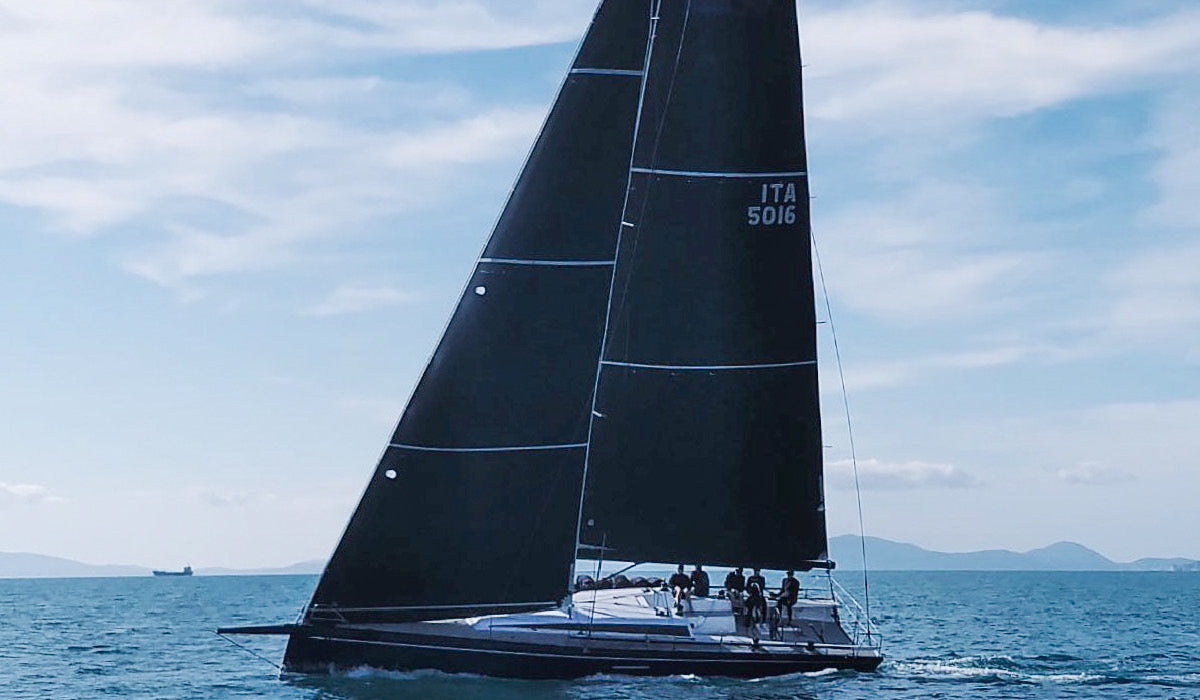
CLUBSWAN 50 WINTER TRAINING IN ITALY
CLUBSWAN 50 WINTER TRAINING IN ITALY
Experts Help New Clients Prepare for the Season Ahead
Last weekend, North Sails ClubSwan 50 experts hosted a clinic for two new teams in Scarlino, Italy. Conditions were perfect for practicing the basics, with 7-12 TWS. Expert Giulio Desiderato coached from the RIB, providing tips and feedback that helped build confidence. Sail experts Alessio Razeto and Andrea Casale each sailed onboard a boat, trimming and discussing tactics. Tuning discussions helped trimmers set reference points to figure out the best sail trim and make small adjustments to improve straight-line speed.
“Working together is key on the 50-footer,” said Giulio, “so the primary focus was to keep everyone communicating on what was happening with rig adjustments, and how to tune the rig correctly with given conditions. From there, each maneuver was broken down into steps to show how overall boat speed was affected.”
Each day the group set specific goals before going on the water. Teams started out focusing on starts and crew work; once sailors became more comfortable on the boat and in their crew positions, jibes and tacks were fine-tuned. After sailing, video and photos were reviewed to show the day’s highlights.
Both Hatari and Giuliana sported 3Di 870 and 3Di 780. Mainsail and leech twist, mast sag, and traveler positioning were all part of the onboard tuning discussions. Alessio is also a Swan 42 expert, and he commented on the significant differences between the 42 and the 50: “I have extended my focus from the 42 to the 50 to help manage the jib blocks and double backstay set-up. Jibes are a bit different, too, as the gennaker is much larger.
“Throughout the clinic, we improved a lot,” Alessio said. “One thing I noticed with the other team is that they have a strong team that is already competitive, and we could have more in-depth discussions about sail trim. Everyone has their way of trimming, and it was good to compare and contrast the differences and how the outcomes varied.”
Coaching from the sidelines, Giulio collected photos, videos, advanced sail analysis, and computer assisted design to check sail shapes and how they related to mast tuning. “One team was more focused on tuning, so they matched our output with the telemetry of their boat to analyze further according to performance. The second team was more focused on boat handling aspects, like timing the starting line so they could get comfortable with the boat and what it required to get up to full speed.”
Both teams, he said, improved throughout the training, “and as they progressed, the differences in their boat speeds got smaller. Maneuvers on the starting line, and time on distance practice was key. Each team had their own goals, and I think we were able to help them achieve them during our time spent on the water.”
“Clinics like this are a great opportunity to improve and prepare for the season,” Giulio explained. “It’s all about giving our clients the information and tools so they can perform their best. It’s not always about service and commercial aspects, it’s about working as one team and staying involved with the class and the sailors to help them achieve their goals.
“It’s also fun,” Giulio added. “I like to share what I am seeing, and I try to offer different points of view. We had talented sailors on each boat, and it gave everyone a chance to grow and learn from each other.”
Alessio agreed about onboard talent. “This season, the ClubSwan 50 fleet will include many experienced sailors who want to compete against 18-20 larger one designs. I believe this will be the beginning of the greatest circuit in the last ten years.”
READ MORE
READ MORE

WHY ARE RACING SAILS BLACK?
North Sails Expert Per Andersson explores fashion and function in the striking look of black sails on the water, and explains why sails may come in different shades of black.
📸Nico Marinez
Fashion, Function, and Material Composition
Black has not always been the fast look for sails, but lately more and more black sails are showing up on the water. Why? The simple answer is that many sails are now made with carbon fibers—the strongest load-carrying material in sails—and carbon is black. If some sails seem even blacker to you than they did a few years ago, you may be noticing North’s 3Di sails, a product that has gained significant market share since it first was introduced. Many sailmakers use carbon in their sails, but typically the carbon is laminated between layers of polyester or Mylar film, so it does not look completely black.
North’s 3DL sails fell into this category for many years, with variable densities of the carbon, depending on where it was needed to resist the heaviest loads. 3Di sails are darker because starting in 2013 with the introduction of 3Di RAW, we’ve rid our highest-performing sails of the cover layer and its associated parasitic weight.
We should point out that not all 3Di sails are black, because North has 3Di products that include aramid fibers, which are yellow, and Dyneema fibers, which are white. We also use black, white or gray taffeta or non-woven surface materials for durability on our 3Di ENDURANCE and 3Di OCEAN performance cruising products, for which the owner can choose the color of preference.
3Di RAW on Swan 42 one designs 📸 Onne van der Wal
Early on, to make a more consistent and solid look on our RAW product, we began to pigment the aramid fibers because they simply looked better black, mixed with carbon and Dyneema fibers. “Dyneema fibers are not available with black pigment but with only a small amount of Dyneema in our 3Di sail structure, a small amount of pigment in the adhesive produces a solid black surface.”
Many sailmakers have followed the trend toward black sails. Most add a “light skin” or taffeta on top of the film to achieve the black look! Others simply add a non-woven layer of colored polyester material to make the sails black.
North Sails 3D molded downwind racing sails are grayer and more translucent, especially when the sun is behind the sail. These sails come with our Helix load shearing technology luff structure. The 3Di molded downwind sails use
3Di Downwind
READ MORE
READ MORE

NORTH SAILS E GLI AC 75
NORTH SAILS E GLI AC75
Publichiamo questa bella intervista al velaio Marco Capitani realizzata da Michele Tognozzi per Fare Vela. E' particolarmente interessante perchè indaga la gestione delle vele degli AC 75, su cui per la prima volta viene issata la randa "soft wing."
📸Le foto sono di Caro Borlenghi/Luna Rossa
La nuova America’s Cup degli AC75 appassiona sempre di più. La massima sfida tecnologica e velica possibile, che è la sintesi stessa della Coppa, si realizza in questi monofoil dall’aspetto avveniristico ma dall’anima ancora indubbiamente velica. La pattuglia dei nostalgici dei monoscafi dislocanti si fa sempre più ristretta e c’è da scommettere che già dalle AC World Series di Cagliari vedremo delle sfide di altissimo livello sportivo e tecnologico.
Tra i settori dello sviluppo c’è anche quello delle vele e non potrebbe essere altrimenti visto che, pur con i loro foil e le linee aerodinamiche, gli AC75 hanno delle vere e proprie vele. Già, una randa (ops, sono due.. e la cosa ha un senso ben preciso come spiegheremo nell’intervista che segue), un fiocco e, in alcune situazioni, un Code 0. Si vele, con una loro forma e con infinite regolazioni, portate a livelli sinora sconosciuti nella vela contemporanea.
Ne abbiamo parlato a fondo con Marco Capitani, uomo North Sails che fa parte del Design Team di Luna Rossa Prada Pirelli con il ruolo di Sail Designer. Toscano di mare, Capitani ha preso parte con questa a quattro campagne di Luna Rossa e vanta un lungo curriculum della vela Grand Prix, tra l’0altro come performance coach di Azzurra nelle 52 SuperSeries.
Lo sentiamo da quella Cagliari che sta diventando in questo inizio di 2020 la capitale del mondo velico. “Una bella città dove vivere”, ci dice Capitani, “dopo che hai finito il lavoro o la domenica ci sono luoghi stupendi da visitare e sì, qui si sta bene”.
Fare Vela Iniziamo dal principio, se li aspettava così coinvolgenti questi AC75?
Marco Capitani: Beh, all’inizio quando sono stato chiamato da Luna Rossa per la campagna ero, come molti, un po’ nostalgico dei miei cari vecchi ACC5. Il mondo dei Tp52 è eccitante e di altissimo livello, ma il grado di ricerca e di sviluppo che si ha qui in Coppa è incomparabile con qualunque altro settore della vela. Se ti chiamano in Coppa America non puoi certo dire di no. E’ il massimo professionalmente parlando. Man mano che lavori nel progetto dici, però… Una volta viste le barche in acqua, seguito il grado di sviluppo, le problematiche e le sfide che si creano ogni giorno, viste le barche alzarsi in volo mi sono detto… “che figata”, questi AC75 sono impressionanti.
Fare Vela Come si approccia e quanto é difficile lo sviluppo del programma vela negli AC75?
Marco Capitani: L’adozione della soft wing (la randa doppia, Ndr) ha portato a nuove domande. Grazie ai software North Sails abbiamo avuto una buona base di partenza. Poi la continua sinergia con il Design Team in fase di progettazione, con la convalida delle intuizioni e delle idee, ci ha portato alle prime verifiche una volta che abbiamo messo la barca in acqua. E lì abbiamo usato quella che North Sails chiama la North Design Suite, quindi facciamo tutti i test di convalida su quanto ci dicevano i software.
Di pari passo con lo sviluppo della barca e delle vele, continuiamo a sviluppare anche il software, dato che hai un riscontro reale tra mare e quanto previsto dal software e quindi piccole modifiche fatte in mare, che so… l’angolo di attacco di una stecca, devono essere apportate anche al software. In questa fase è uno sviluppo parallelo.
Fare Vela Cominciamo dalla randa… o meglio dalle rande.
Marco Capitani: Venivo dalle barche normali e all’inizio mi sembrava abbastanza complicata. Ci facevamo anche problemi per come issarla e gestirla. Poi, lavorandoci tutti i giorni e imparando a usarla, abbiamo visto che non è poi così complicata come si potrebbe pensare. Pian piano la usi, ci esci in mare, come sempre diventa più semplice di quanto era all’inizio. Ricordo che la prima volta che l’abbiamo issata ci abbiamo messo un’ora, adesso impieghiamo solo venti minuti. E’ normale che sia così quando impari a usare qualcosa di nuovo.
Fare Vela Ci farebbe pensare a un utilizzo diffuso nel mondo della vela...
Marco Capitani: Mah, non voglio dire che si arriverà a un suo uso standard ma non sarebbe un’ipotesi peregrina, anzi. Piuttosto potrebbe essere un problema di costi, perché alla fine si tratta di due rande e quando devi pagarne due invece di una… per l’utilizzatore normale potrebbe essere un problema. Devo dire, però, che se non proprio il pacchetto completo, alcune soluzioni delle soft wing si useranno anche nella vela convenzionale. Se non proprio la doppia randa, sicuramente i sistemi che usiamo per manovrarla.
Fare Vela E quali sarebbero?
Marco Capitani: Beh, sono informazioni riservate, ma posso dire che dentro la vela ci sono una serie di sistemi che consentono di modificarne la forma in ogni situazione.
Fare Vela Dunque, vediamo, noi comuni velisti siamo abituati a un vang, un cunningham, una base, delle volanti, stecche. Cos’altro c’è?
Marco Capitani: Il bello dello sviluppo e delle vele in 3Di North Sails è che all’interno delle skin vi sono una serie di sistemi che consentono di adattare le forme. Il Regolamento di Stazza lo consente, dato che vi sono due zone libere in cui puoi fare ciò che vuoi. Sono gli ultimi quattro metri e l’ultimo metro e mezzo. Lì puoi avere dei sistemi che ti consentono di controllare il twist della parte alta o della parte bassa. Sistemi che ti possono far aumentare o diminuire la profondità. Il regolamento consente di avere nel resto della vela dei sistemi non attivi, detti tethering, sulle stecche di una lunghezza massima di 60 cm. Questi, legati alla rotazione dell’albero, consentono di variare la forma della vela. Ripeto, all’interno delle zone libere invece possiamo fare tutto ciò che vogliamo.
Nel resto della vela, fuori da queste zone, non puoi avere sistemi attivi, quindi non puoi avere sistemi all’interno della vela che riescano a muoverla. Puoi avere solamente sistemi passivi, ovvero che non puoi regolare in navigazione.
Fare Vela Quindi una struttura complessa, ma meno di quanto si pensi?
Marco Capitani: Alla fine sì, E’ come sempre una questione di abitudini. E’ tutta la vita che navighiamo nello stesso modo e ogni volta che c’è un’innovazione dici “oh che complicato…”, poi a forza di usarla sembra meno complicata di quello che è. Alla fine, rispetto a un’ala rigida, è più comoda. La issiamo, l’ammainiamo, la ripieghiamo dentro un sacco. Ovviamente stiamo parlando di due vele, una vicina all’altra, di 145 mq ciascuna, con stecche full batten.
Fare Vela Il livello di efficienza rispetto a un’ala rigida?
Marco Capitani: Beh, siamo molto vicini. Il bello è che puoi rendere il profilo asimmetrico tra sopravvento e sottovento, in un mezzo come gli AC75 che passa da momenti diversi, un po’ come in un aereo. Dalla fase di decollo, dove l’ala deve avere una certa forma, o una volta che voli, in cui il profilo deve cambiare velocemente e adattarsi alla nuova situazione. Grazie alla soft wing riesci a fare velocemente questa cosa e grazie ai sistemi al suo interno si riesce a ottenere la miglior regolazione delle due superfici, quella sopravvento e quella sottovento. Una volta individuati i target delle due superficie, nei vari momenti e nelle varie transizioni, riesci a fare ciò che vuoi arrivando agli obiettivi che ti sei prefissato grazie ai software North Sails.
Con l’aiuto di tutto il resto del team, CFD più specializzato e VPP ad hoc, arrivi a continui sviluppi. La collaborazione tra sail designer e responsabili dei sistemi è continua, lavoriamo fianco a fianco e alla fine arriviamo alla forma che cerchiamo.
Un lavoro di squadra, come sempre in Coppa America. Ognuno ha bisogno dell’altro. Se voglio trasformare la forma della vela, il responsabile dei sistemi mi propone idee su come farlo e i progettisti ci dicono cosa vogliono ottenere.
Fare Vela E i materiali?
Marco Capitani: A livello di materiali usiamo il top, che è il 3Di North Sails. Le vele sono modellate in Nevada. Mandiamo i nostri disegni a Minden… fortunatamente abbiamo un po’ di priorità visto che siamo in America’s Cup (ride, Ndr) rispetto a un programma normale. Minden ci rispedisce il mold on, ovvero lo skin come viene fuori dallo stampo, e poi i ragazzi in veleria qui a Cagliari rifiniscono la vela. Lo facciamo qui sia per una questione di riservatezza sia perché la vela viene attaccata a dei sistemi particolari che rendono più facile farlo qui. A volte, visto che può capitare di avere più vele in ordine, possiamo mandare uno dei nostri velai a Minden alla North Sails oppure alla sede italiana di Carasco.
Fare Vela Veniamo alla vela di prua.
Marco Capitani: Beh, alla fine si tratta di un fiocco simile a quelli che siamo abituati a vedere. Puoi regolare la superficie velica e la forma, modificando la testa o la base, ma alla fine si tratta di una vela abbastanza standard. Abbiamo visto in questa fase soluzioni diverse in tutti i team, magari quando arriveremo alla fase finale della Coppa America vedremo qualcosa di simile per tutti. Ripeto, questa è una fase di sviluppo.
Per regolamento puoi fare dieci rande, anche se alla fine sono venti considerando la randa doppia, e 29 fiocchi. Quindi c’è margine di sviluppo. Da tener presente che la vela appena viene navigata riceve un bottone ed entra nel conteggio, quindi non esistono più vele fatte solo per test come nelle passate edizioni della Coppa. Entro 24 ore dall’issata della vela devi dichiararla e riceve il bottone.
Fare Vela E quante ne avete fatte sinora…?
Marco Capitani: L’informazione non è pubblica, visto che tutti i team cercano di capire cosa stanno facendo gli altri. Ovviamente anche noi abbiamo i nostri file, basati su ciò che vediamo, e contiamo le vele che vengono usate dai tre team rivali. Dobbiamo cercare di monitorare ciò che fanno gli altri.
Fare Vela E appunto, cosa stanno facendo gli altri? Cosa avete notato?
Marco Capitani: Ognuno sta percorrendo strade diverse e ognuno ha fatto delle scelte particolari. Il regolamento è abbastanza aperto e hai grandi margini di scelta. Soprattutto nelle rande si possono avere forme geometriche assai diverse.
Magari non abbiamo visto neanche tutti i codici dei fiocchi. Quando saremo tutti a Cagliari sarà più facile avere un’idea delle scelte e dei range di ogni vela.
Fare Vela Le finestre di utilizzo delle vele di prua saranno ridotte, viste le velocità raggiunte…
Marco Capitani: Beh, tutte le vele sono messe con una zip in ralinga, quindi non è così immediato cambiarle. Il 3Di aiuta molto, perché consente di avere dei range di utilizzo un po’ allargati. Alla fine devi avere vele specifiche ma non ti puoi neanche limitare a range minuscoli, perché devi poter avere margini elastici di utilizzo. Non ti puoi permettere di avere… che so… quindici codici diversi, non hai proprio il tempo di fare troppe scelte.
Fare Vela Veniamo ai Code 0.
Marco Capitani: Sì, il regolamento obbliga a stazzare almeno un Code 0. La regola è abbastanza libera e si sono già viste scelte diverse, più o meno grandi, più o meno corte d’inferitura. Il regolamento dà margine anche di sfruttare la fantasia e alle prime regate vedremo forse scelte assai diverse per poi avere una standardizzazione ad Auckland. Ovviamente i Code 0 li useremo con vento leggero, stando attenti a individuare bene il crossover tra Code 0 e fiocco, ovvero quando e dove finisce il vantaggio di usarlo e inizia invece il drag.
C’è tanto da fare. Siamo molto impegnati e le giornate sono molto lunghe. In questa fase iniziale il margine di guadagno o di perdita può essere più consistente e quindi in questa fase ci impegnamo al massimo, come fanno i ragazzi che studiano i foil e tutto il resto del team.
Fare Vela L’interazione con il design team sarà fondamentale…
Marco Capitani: Certo. Continua e costante. Le varie fasi del decollo, la transizione al foiling e il volo hanno sempre bisogno della forma ottimale delle vele. Il vento apparente all’inizio sarà largo, poi nel volo diventerà molto stretto e le forme devono poter cambiare radicalmente ed è quanto cerchiamo di fare. Al di là del fatto che devi accoppiare la vela al tuo foil, poi devi anche abbinare la vela al flusso per cui deve cambiare in maniera drastica la forma. La soft wing ti permette di farlo, grazie alla sua forma asimmetrica e ai sistemi di controllo di cui parlavamo prima. La soft wing consente di fatto di modificare in modo veloce ed efficiente la forma della vela ed è un gran vantaggio. Profili assai diversi a seconda della fase che stai facendo.
Fare Vela Lei ha una lunga esperienza nella vela Grand Prix, soprattutto nei Tp52 con Azzurra. Sono paragonabili i due mondi?
Marco Capitani: No, qui siamo a un livello ancora più alto. Nei Tp52 una volta che hai sviluppato il piano velico e hai fatto una settimana di test e target, alla fine, sei a posto. La Coppa ti assorbe completamente, non c’è tempo di fare altro. Qui ogni giorno vai a cercare qualcosa per guadagnare qualche secondo e attorno a noi vi sono altre trenta persone che nei loro settori cercano di fare altrettanto. Il confronto è continuo. Progettisti, sistemisti, velai, siamo tutti a contatto quotidiano, fianco a fianco, il feedback è continuo.
Fare Vela Ma, così per sapere, i cinquanta nodi li avete già toccati…?
Marco Capitani: Non si può dire (ride, Ndr), ma certo andiamo veloci… A livello di sicurezza i cockpit per tutti a bordo sono fondamentali, così come limitano il windage al minimo, che a queste velocità diventa decisivo.
Fare Vela Quando tornerete in acqua?
Marco Capitani: Presto. Ormai siamo quasi pronti. Abbiamo approfittato della pausa per l’albero per fare qualche altro lavoretto che era comunque in programma. Ai primi di marzo dovremmo navigare. Siamo vicini.
INEOS lo abbiamo qui. Siamo curiosi di vedere Emirates Team New Zealand, che è già in viaggio. American Magic fa un po’ più il misterioso e navigherà ancora un po’ a Pensacola. Crediamo che a fine marzo lo vedremo comunque qui a Cagliari.
Alla fine tutti hanno fatto scelte diverse ma comunque interessanti. Pensavamo di essere più lontani ma la sensazione è alla fine ci ritroveremo tutti molto vicini e in aprile dovremmo avere le prime risposte. Va detto, però, che ciò che vedremo a Cagliari potrebbe essere diverso da quello che vedremo in barca due dopo la prossima estate. Non solo pretattica, magari si tratta di un piano di sviluppo particolare già previsto dai team. Sarà un mese eccitante.
Fare Vela Non c’è dubbio, non vediamo l’ora di essere ad aprile.
Con Marco Capitani nel settore vele di Luna Rossa Prada Pirelli lavora il coordinatore sail design Juan Enrique Garay. I sistemi della soft wing fanno capo a Gwenole Bernard e Bruno Guilletat.
Nel Sail Loft lavorano Michele Bella, Fabio Corsini e Maximiliano Valli.
READ MORE
READ MORE

LE VELE DEI SUPERYACHT?
LE VELE DEI SUPERYACHT?
Così ha lavorato North Sails per i 40 metri Kauris IV e Canova
Pubblichiamo un approfondito articolo realizzato da Michele Tognozzi per Farevela che intervista il sail designer Paolo Montalbani del loft di Carasco, che ha gestito le vele dei due “super” maxi Canova Baltic 142, dotato anche di DSS, e Kauris disegno di Frers di 144 piedi.
Due superyacht in prima pagina, prima il Baltic 142 Canova (progetto Farr) e adesso il Wally 144 Kauris IV (progetto Frers), varato pochi giorni fa dal costruttore Persico Marine a Marina di Carrara per l’armatore Marco Tronchetti Provera. Uno degli aspetti più interessanti su barche di queste dimensioni è quello delle vele, davvero enormi, in entrambi i casi progettate e realizzate da North Sails Italia.
Come si realizzano vele per barche che misurano oltre quaranta metri di lunghezza, con carichi di lavoro elevatissimi e con tecnologie (Canova usa i DSS) particolari? Ne abbiamo parlato con Paolo Montalbani, esperto North Sails per il settore di superyacht che ha seguito il programma vela sia per Kauris IV sia per Canova.
Fare Vela Che tipo di approccio segue North Sails con barche di queste dimensioni?
Paolo Montalbani Innanzi tutto devo dire che l’esperienza North Sails nel settore dei superyacht è capillare. Abbiamo invelato quasi tutti i Perini Navi degli ultimi vent’anni, molti Wally e i top di gamma di diversi cantieri.
L’approccio tra team manager, progettisti di scafo e alberi, disegnatori della coperta e delle sue attrezzature è completo e inizia sin dalla fase di ideazione del progetto. Segnalo il coinvolgimento di Michele Malandra nel progetto, mio collega d’ufficio ed esperto di strutture 3di e simulazione Flow, Membrain e VPP (programmi di proprietà di North Sails). In questi progetti lavoriamo sempre come squadra. Usiamo un software per avere una predizione dei carichi sull’attrezzatura e per un primo bilanciamento dello scafo sull’acqua. Il supporto a project manager e disegnatori delle strutture rig in genere o attrezzature di coperta è molto importante, così come il progetto dei dettagli delle finiture delle vele in modo completo fino al volume di stoccaggio (per nulla secondario). Il tutto con l’obiettivo di contenere i pesi e avere i necessari margini di sicurezza di tutto il sistema velico.
Per dare un idea dell’ accuratezza dei software di simulazione basta dire che il RINA ha utilizzato il nostro output per la certificazione del Baltic 142.
Faccio un esempio, c’è un Perini 56 metri che non è ancora in costruzione su cui stiamo già lavorando in fase di ideazione usando questo approccio tra tutte le componenti progettuali. Si comincia da lontano…
FV E nel caso del Canova e del Kauris IV?
PM: Nel caso del Baltic 142 Canova abbiamo collaborato con l’alberaio Rondal, visto che loro avevano la necessità di verificare i loro sistemi di calcolo con i nostri. Alla fine ci siamo trovati dopo alcune verifiche iniziali che risultavano differenti. Su barche di queste dimensioni le specifiche progettuali dell’albero sono fondamentali. Per esempio il furling boom, ovvero il boma che ospita al suo interno la randa avvolta con le sue stecche e carrelli, risulta determinante.
L’albero del Kauris è invece Southern Spars e la randa è tradizionale, mentre il Canova ha una square top. Il sistema del furling boom offre la possibilità di ospitare la vela con tutte le sue componenti (carrelli e stecche) all’interno del boma. In più vi sono sistemi innovativi per la gestione del tesabase e dei passaggi delle tre mani di terzaroli.
Si va a capire, di fatto, quali saranno le problematiche reali. Le superbarche hanno smesso d’ingrandirsi e stanno diventando sempre più vere barche a vela, seppur di dimensioni enormi, per navigare. O almeno, questa è la tendenza che registriamo negli armatori. Ognuno ne fa un utilizzo specifico e da tale esigenza nasce poi la nostra progettazione delle vele.
Barche navigabili. Gli armatori vogliono andare a vela, non vogliono solo la barca grande. Nel caso del Kauris IV, una barca davvero bellissima che dimostra come l’Italia sia sempre all’avanguardia nei superyacht, l’armatore desidera magari uscire al mattino, fare una pausa per un aperitivo e poi andare di nuovo a vela il pomeriggio. Per un utilizzo comunque di qualità, in cui estetica e prestazioni contano. Una vera barca da prima pagina. Il Canova, invece, è un blue water, richiesto e realizzato per le lunghe crociere d’altura, anche oceanica, per cui ha bisogno di soluzioni diverse, orientate al blue water. In entrambi i progetti ci sono interessanti soluzioni per lo storage sottocoperta delle vele, come il sistema di arrotolamento su un cavo di un code zero. Tale soluzione era già stata realizzata sul My Song.
FV E per i materiali delle vele?
PM: Sono tutte, intanto, vele in 3Di, perché crediamo che sia la tecnologia adatta. Anche qui, però, non è 3Di e punto. Il 3Di è una tecnologia per costruire vele, il materiale che si usa è differente a seconda dell’utilizzo e delle forme. Canova usa il 760, più adatto al blue water e che abbiamo testato moltissimo sulle barche delle ultime Volvo Ocean Race. Il Kauris IV usa invece il 780.
Il 760 è un prodotto spectra/Kevlar, mentre il 780 è un misto spectra/carbonio.
Per il 760 cito l’esempio di Puma con Ken Read due edizioni della Volvo Ocean Race. La barca disalberò nella prima tappa (quella della celebre sosta a Tristan da Cunha, Ndr). La vela recuperata fu utilizzata, con ottime prestazioni, per tutto il resto del giro del mondo e solo per le ultime due tappe venne usata una seconda randa stazzata. Se si pensa agli stress a cui vengono sottoposte le barche del giro del mondo si può comprendere l’affidabilità di tale materiale.
FV Il Kauris IV che gioco vele avrà?
PM: La funzionalità è la variabile principale. Ovvero l’utilizzo che ne vuol fare l’armatore e l’equipaggio che ha a disposizione. Per questo il gioco è abbastanza basilare: una randa tradizionale con tre mani, un fiocco headsail rollabile, un inner jib armato sullo strallo di trinchetta e un COD 1 da 1.050 metri quadri in 760 per le portanti. Tutto di facile gestione, anche in equipaggio ridotto e per più issate al giorno, quando ve ne fosse la necessità. Il tutto sempre nella massima ricerca delle prestazioni.
FV E il Canova che vele usa?
PM: L’utilizzo Blue Water ha portato alla scelta di una randa square top. L’issata e l’ammainata di una randa square top di queste dimensioni non sono banali, occorre attenzione e tempo, per cui risulta chiaro come ci si possa permettere una randa square top che resta a riva una settimana consecutiva mentre per uscire tradizionali una balumina tradizionale sia più logica. Il Canova ha poi un fiocco rollabile, l’inner jib, quello che noi chiamiamo Quad, ovvero un Code 0 a due bugne, cioè un code 0 a cui viene tagliato il triangolo di bugna, un A3 con cavo da 1.250 mq e una tormentina.
Bisogna considerare che Canova usa la tecnologia DSS, ovvero i foil che agevolano la galleggiabilità. Ciò porta a un raddrizzamento bestiale, da qui la necessità di gestire una potenza enorme nella vela.
FV E i costi sono una variabile a questi livelli?
PM: Beh, certo, gli armatori li considerano, però prevale sempre la richiesta della massima qualità. Magari non comprendono subito che la fase di progettazione e il lavoro che c’è a monte è enorme. Sarebbe molto rischioso non essere del tutto accurati in fase di progettazione e questo prende tempo e risorse. Alla fine prevale sempre la richiesta della nostra qualità, sulla quale nessuno patteggia mai.
FV E quali sono i tempi di produzione di vele del genere?
PM: Tutto il progetto impiega fino a due anni. I tempi reali di costruzione del manufatto impiegano circa un mese. La progettazione vera e propria viene fatta qui a Carasco. La stampata viene fatta nel nostro stabilimento madre di Minden, vicino al Lago Tahoe, in Nevada, che cura poi anche la finitura. Una volta arrivata in Italia, la vela viene da noi consegnata e provata a bordo.
Di fatto noi costruiamo il rotolo di tessuto, non utilizziamo un rotolo già pronto. La costruzione del nastro avviene per quella vela specifica e solo per quella e questa è la tecnologia 3Di. La costruzione del nastro (tape) è la prima fase, poi viene la stampata sulle forme progettate, seguono la finitura e la spedizione fino alla prova in mare e tutto questo spiega come ci voglia circa un mese per realizzare vele di queste dimensioni e con questa tecnologia.
Chi è Paolo Montalbani
In North Sails dal 1986, Montalbani ha disegnato le vele e progettato i dettagli, consegnato installando e provando in mare le vele di trenta barche nella flotta Wally, 28 Perini, qualche Baltic (incluso lo sfortunato My Song), Southern Wind e Swan tra i 60 e 229’, ha regatato con molte di queste in Mediterraneo e area caraibica.
Il guardaroba dei due Supermaxi
Canova
Mainsail fullbatten 556mq. 3di 780SY (combinazione di dyneema, kevlar e carbonio nella fibre all’interno) square top design. Sistema furling boom e albero Rondal, il boma ha sistema di tesa base e presa dei terzaroli sofisticato ed efficace.
Anche il sistema carrelli per le stecche della randa è Rondal.
Furling jib 408mq., 3Di ENDURANCE 780 (combinazione di dyneema, kevlar e carbonio nella fibre all’interno) su cavo avvolgibile e garrocci soft, stecche rollabili orizzontali.
Inner jib 212mq. 3Di ENDURANCE 780 (combinazione di dyneema, kevlar e carbonio le fibre all’interno) su cavo avvolgibile autoportante.
Storm Jib 72mq. Cuben fiber pannellato, su soft hanks e ammainata in maniera tradizionale.
Quad 612mq. 3Di ENDURANCE 760 (combinazione di dyneema e kevlar all’interno) su cavo avvolgibile.
A3 1253mq. 3Di DOWNWIND (combinazione di dyneema e kevlar) su cavo avvolgibile, assieme al Quad trova alloggio nelle due ruote sottocoperta.
Kauris IV
Mainsail fullbatten 558mq. 3Di ENDURANCE 780 (combinazione di dyneema,kevlar e carbonio le fibre), Sistema di carrelli delle stecche come il furling boom e albero sono Southern Spar, il boma ha sistema di tesa base e presa dei terzaroli innovativo.
Furling jib 487mq., 3Di ENDURANCE 780 (combinazione di dyneema,kevlar e carbonio le fibre) su cavo avvolgibile e garrocci soft.
Inner jib 221mq. 3Di ENDURANCE 780 (combinazione di dyneema, kevlar e carbonio le fibre) su cavo avvolgibile autoportante.
Code1 1011mq. 3Di ENDURANCE 760 (combinazione di dyneema e kevlar) su cavo avvolgibile. Anche per il Kauris IV il Code1 trova alloggio sottocoperta nella ruota per stoccaggio come l’Inner jib.
Storm Jib 91mq. Dyneema pannellato, su soft hanks e ammainata in maniera tradizionale.
READ MORE
READ MORE

MASTER CLASS EN VILANOVA
MASTER CLASS EN VILANOVA
13 Junio 2020 | Club Nàutic Vilanova
En esta nueva edición se explicará el proceso de diseño de una vela y el análisis posterior una vez instaladas en el barco.
SÁBADO, 13 JULIO: Charla diseño y análisis de las velas
Contacto: jorge.martinez-doreste@northsails.com
Club Nàutic Vilanova |
Escullera de Ponent s/n., 08800 Vilanova i la Geltrú (Barcelona)
READ MORE
READ MORE
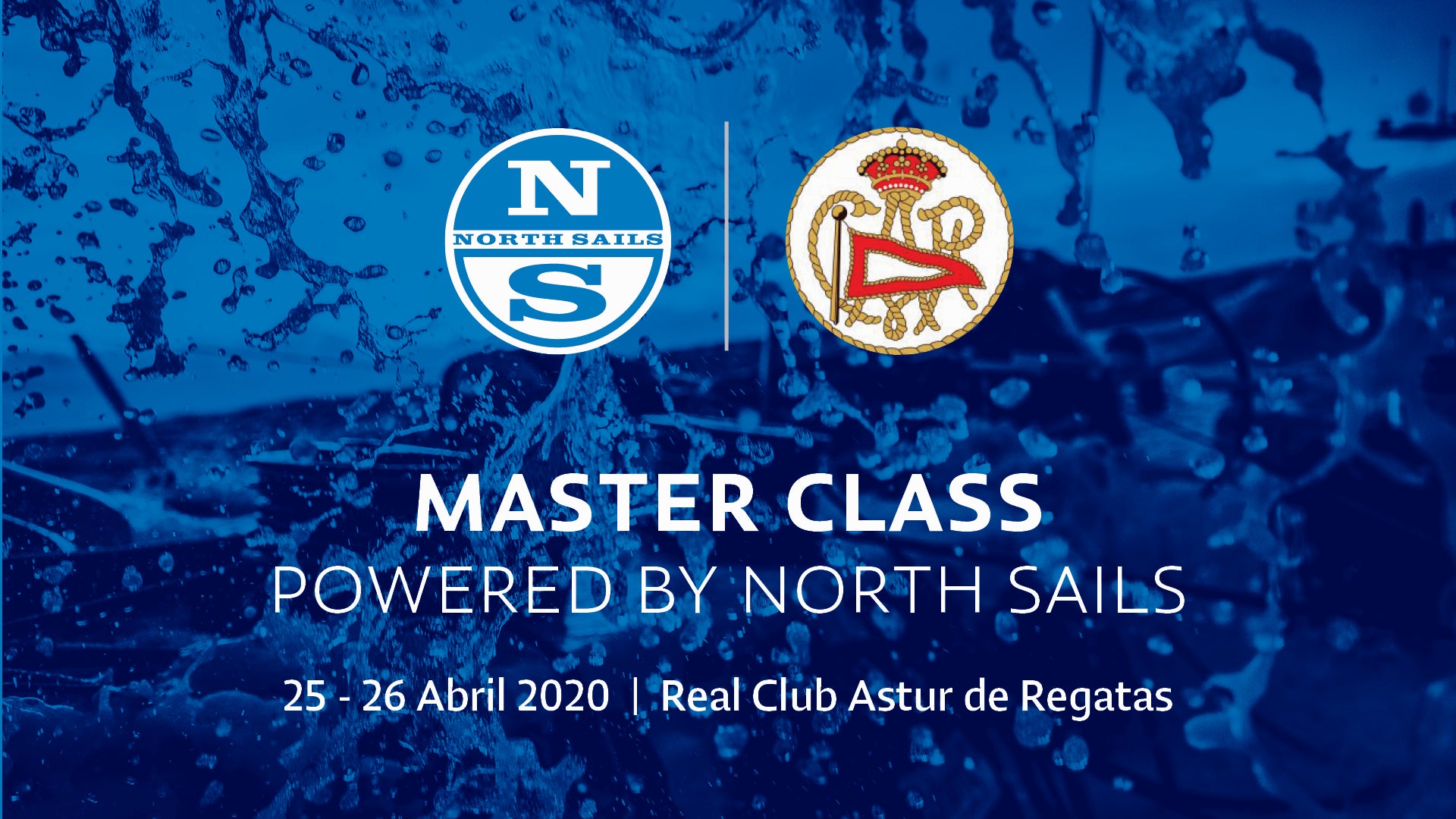
MASTER CLASS EN GIJÓN
MASTER CLASS EN GIJÓN
25 - 26 Abril 2020 | Real Club Astur de Regatas
En esta nueva edición se explicará el proceso de diseño de una vela y el análisis posterior una vez instaladas en el barco.
SÁBADO, 25 ABRIL: Charla diseño y análisis de las velas | DOMINGO, 26 ABRIL: Trofeo Primavera
Contacto: jorge.martinez-doreste@northsails.com | vela@rcar.es
Real Club Astur de Regatas | Avenida de La Salle, 2, 33201 Gijón
READ MORE
READ MORE
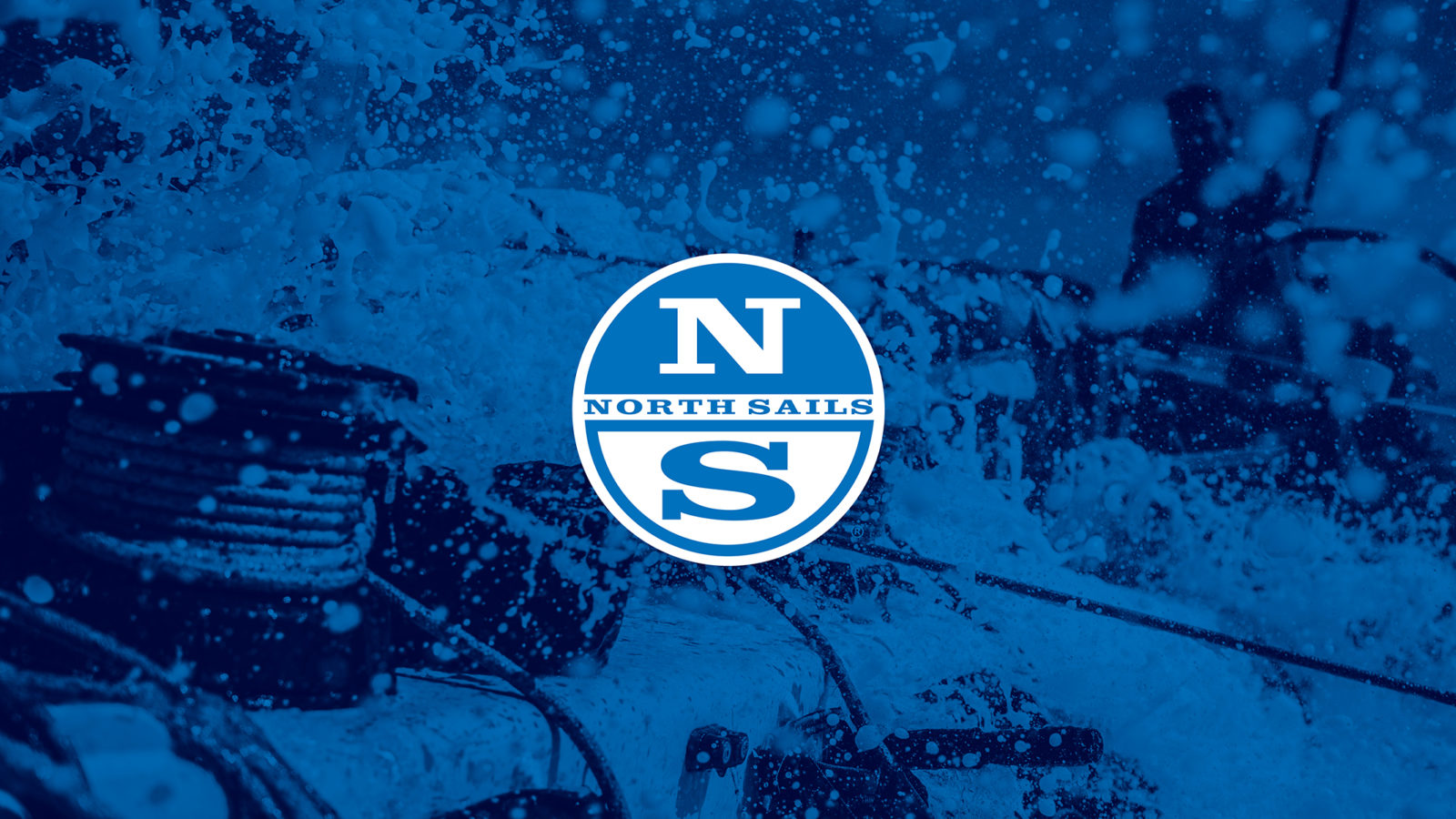
ANOTHER EXCITING SEASON
ANOTHER EXCITING SEASON
We'll Be There. Will You?
Our North Sails Toronto crew will be on the water and walking the docks at the following events this season. Look for our team in their trusty North Sails cap and gear. Don’t hesitate to ask us questions about tuning, rigging, and sails. We are here to help and we are looking forward to seeing you.
READ MORE
READ MORE
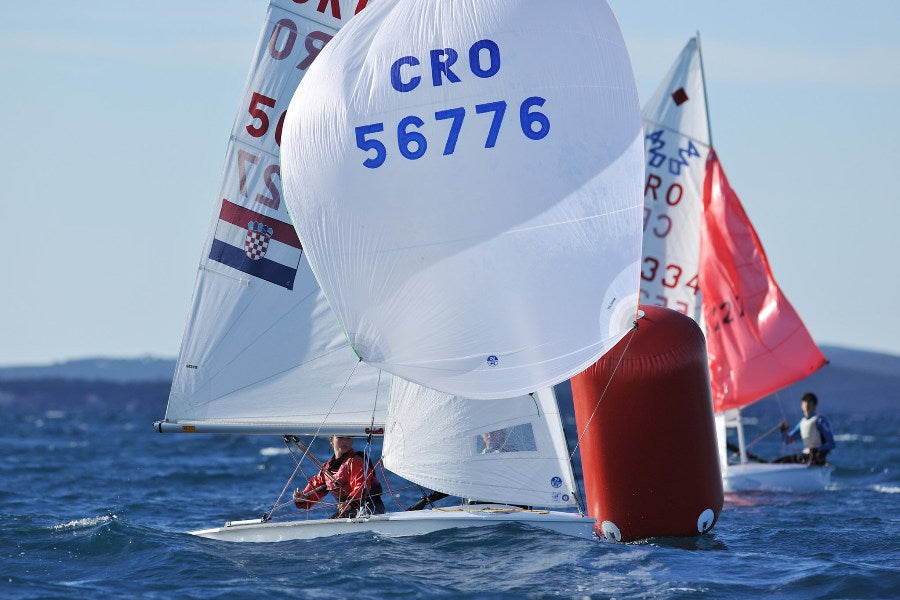
420 ZADAR OPEN
420 Zadar Open
FOTO: NIKOLA ŠIŠKO
Izgleda da se dešava veliki povratak dvosjeda na hrvatsku stranu Jadrana! 16 jedrilica je sudjelovalo što u cjelotjednom kampu, a što na kriterijskoj regati koja se jedrila nakon istoga. Od tih 16 jedrilica klase 420 čak 14 je bilo s CRO registracijskom oznakom na jedrima.
Sedam hrvatskih jedriličarskih klubova je imalo svoje predstavnike u ovoj lijepoj i vrlo atraktivnoj klasi, koja je u jednom periodu čak totalno nestala iz službenog kalendara HJS-a. Uz JK Uskok, koji je bio domaćin kampa i regate, a i koji je dosta godina praktički bio jedini klub koji je njegovao jedrenje u dvosjedima, svoje predstavnike su imali i JK Sv.Nikola - Zagreb, JK Galeb - Kostrena, JK Labud - Split, JK Istra - Lovran, JK Jugo - Mali Lošinj i JK Briva - Biograd. Preostale dvije posade su bili gosti iz Slovenije, članovi JK Olimpic iz Izole.
U Zadru je bilo prva liga! Prvo su bile pripreme koje je vodio trener Marko Morgan iz Slovenije. Svi koji su jedrili na regati su bili i na pripremama... radili su od prethodnog vikenda, pa sve do regate koja je startala u petak. Inače je riječ o službenom kampu HJS-a, a također je i riječ o rekordnom kampu jer je sudjelovalo 14 hrvatskih posada, a toliko ih nismo imali desetljećima! NA regati je također bilo izvrsno. Prvi dan je vjetar malo kasnio, ali uspjeli smo izvući dvije regate, po nekom laganom vjetru iz smjera maestrala. Drugi dan su bili fenomenalni uvjeti. Puhalo je 10-15 čvorova tramuntane, bilo je vala... i tri regate su odjedrene jedna za drugom. A u nedjelju nismo ništa odradili jer je bila apsolutna bonaca.
Karlo Krpeljević, JK Uskok
Sad za juniore počinje ozbiljan posao jer kreće skupljanje bodova za nastup na ISAF Youth-u. Svi bodovi koje će skupljati na idućim regatama klase, naravno zajedno s bodovima koje su sad dobili u Zadru, računaju se za formiranje rang ljestvice na osnovu koje će najbolji na kraju godine jedriti na ovoj velikoj regati mladih. Drugim riječima, pravo nastupa će steći čak tri posade, najbolja muška, najbolja ženska, a od ove godine i miješana posada. Kako nemamo baš miješanih posada onda je dogovoreno da će najbolje plasirani kormilar ili kormilarka, a koji nisu osvojili pravo nastupa na ISAF Youth-u, izabrati flokistu suprotnog spola... bez obzira da li postoji neka miješana posada niže na kriteriju. I prilikom kombinaranja ovakve posade klub više neće biti bitan, već samo da se kormilar/ka i flokist/ica dobro slažu.
A za Europsko i Svjetsko prvenstvo, bodovi se skupljaju do regate koju će organizirati JK Labud, 15-17. svibnja.
Do Labudove regate još je u programu regata koju organizira JK Jugo na Malom Lošinju, a za Uskrs će se jedriti u Izoli.
FOTO: NIKOLA ŠIŠKO
Prije SP i EP bit će organiziran i još jedan kamp na kojem će se dodatno pripremati, a treba napomenuti da na ove dvije velike regate može nastupiti veći broj posada. Na Europskom će to ipak biti donekle ograničeno, ovisno o dobnim kategorijama, a najveća gužva se očekuje u konkurenciji U17. S druge strane za Svjetsko prvenstvo nisu najavljeni limiti za prijavljivanje jer klasa slavi veliki jubilej, pa s masovnošću žele proslaviti svoj pola stoljeća dug neprekinuti rad.
Ali vratimo se regati u Zadru.
Čak četiri posade su se u pet održanih jedrenja mogle pohvaliti pobjedama. Jedine koje su pobijedile u dva plova i to posljednja dva, bile su pobjednice 420 Zadar Open-a, jedriličarke JK Uskok, Noela Petešić i Maris Bašić. Ovaj kratki pobjednički niz im je ujedno bio i presudan za pobjedu, jer su imale jednak broj bodova kao drugoplasirana posada Martin Fras - Toni Rebec iz JK Olimpic.
Na trećem mjestu završavaju ujedno i najbolji u konkurenciji U17, a riječ je o Bubi Puleku i Lorensu Lokasu. Inače, i Noela i Buba su još u rujnu jedrili na Prvenstvu Hrvatske za klasu Optimist, a Buba se od te klase oprostio s pobjedničkim naslovom.
Da je ova klasa postala popularna među juniorima može se vidjeti iščitavanjem ostalih imena u rezultatima regate. Osim što je dosta njih imalo vrlo zapažene karijere u klasi Optimist, aktivni su i u nekim drugim klasama, pa je tu npr. i Bruno Marević, najbolji junior na Svjetskom prvenstvu klase IOM jedrenom u Brazilu prije par mjeseci, trenutno flokist Adrianu Peoviću.
FOTO: NIKOLA ŠIŠKO
Ono što je regatu činilo posebno zanimljivom je što nije bilo apsolutne dominacije neke od posada. U rezultatima se može vidjeti dosta šarenila, odnosno i oni koji su bili u vrhu su oscilirali, pa je napeto bilo do samog kraja, a s druge strane nije bilo ni nekih koji su se bili izrazito lošiji od ostalih. Najbolji dokaz neizvjesnosti i natjecateljskog naboja su dva UFD-a podijeljena u posljednjem plovu.
Mix kombinacija koju je Karlo spomenuo u svojoj izjavi bila je konkretno prisutna na regati u Zadru. Četiri posade su bile kombinirane. Najbolji od njih su bili Tajana Filipaš i Nikola Smaić, tandem s Malog Lošinja koji je zauzeo 9. mjesto generalno.
Što se pobjedničke posade tiče treba spomenuti da na prošlom Prvenstvu Hrvatske, one nisu jedrile u ovoj kombinaciji, već su bile u različitim brodovima, a Maris je u kombinaciji s Antoniom Kuštera odnijela titulu najboljih za 2019.
Bogate foto galerije g.Nikole Šiška možete pronaći na Facebook stranicama JK Uskok.
READ MORE
READ MORE
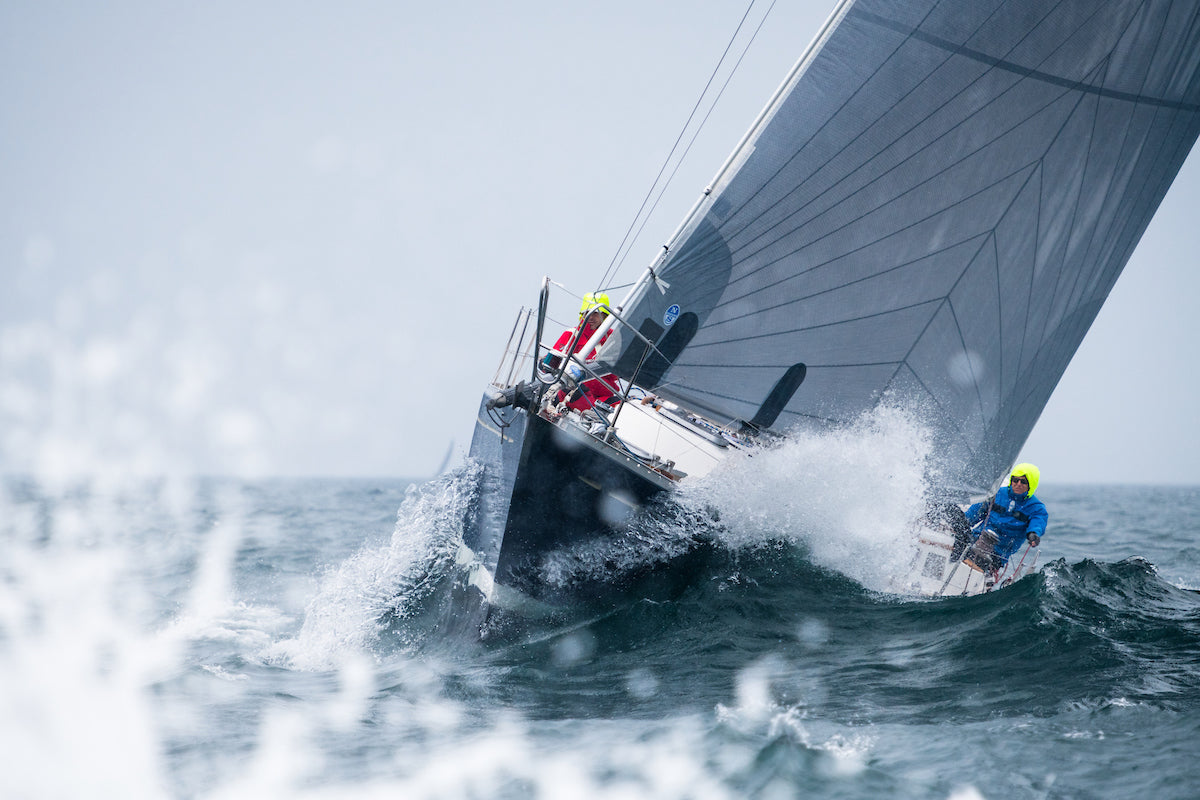
BEDSTE SEJL TIL KLUBKAPSEJLADS
HVILKE SEJL ER DE BEDSTE TIL KLUBKAPSEJLADSER?
North Sails eksperten Tom Davis kommer med forskellige bud til din sejlgarderobe
For nogle sejlere betyder klubkapsejlads en uformel aftenmatch med storsejl og rullegenua i en båd der ikke er lettet for al turgrejet. For andre er det en toptunet Melges 24 med fuld besætning. Der er ikke noget universalt svar på spørgsmålet "Hvilke sejl er bedst til klubkapsejlads"? De fleste sejlere passer ned i kategorien "lidt-af-hver-kapsejlere". Dem tager vi udgangspunkt i med denne artikel. Hvis du passer i denne kategori, er langt de fleste kapsejladser i lokale farvande omkring din hjemhavn. Måske krydret med en enkelt god distancekapsejlads eller to. Men dine sejlgarderobe skal også gerne passe til dagture, weekender og ferie med familie og venner. Hvis du ønsker at deltage i kapsejladser, uanset på hvilket niveau, er der nogle ting du bør fokusere på, før du tænker på de rigtige sejl. Er din bund ikke ren, så kan selv de bedste sejl ikke kompensere for det. Masten skal sættes lige op og være spændt rimeligt op. Dine skødepunkter skal være i orden og markeret. Du bør også have mærker på dine fald. Det kan du læse mere om i vores Trimguide til Cruising. Måske skulle du også se på din propel, hvis ikke det er en foldpropel, om det er tid til af skifte den ud. Når du har fået disse ting på plads, så er det tid til at tænke på sejlgarderoben. Artiklen forsætter på engelsk her.
READ MORE
READ MORE
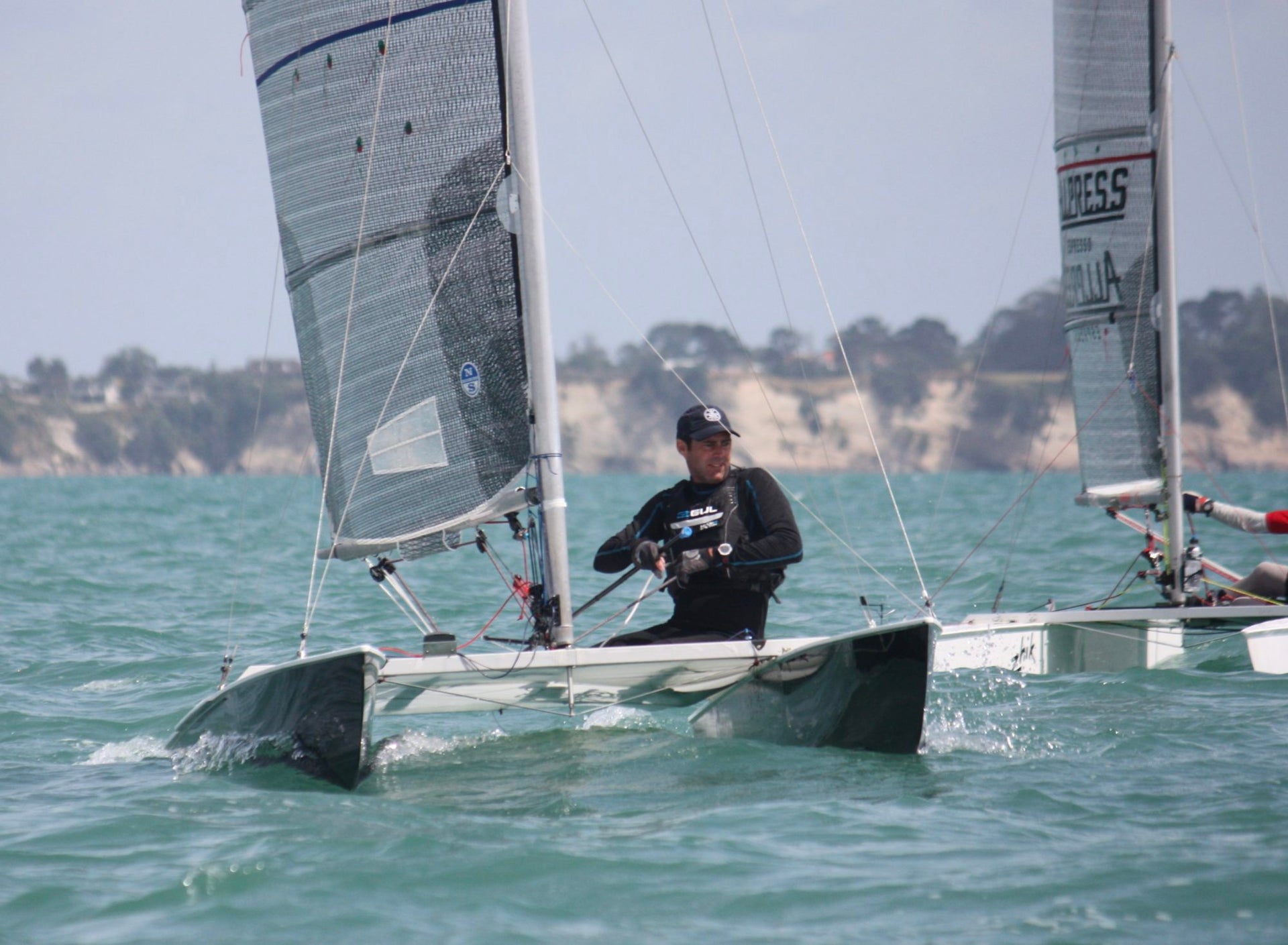
PAPER TIGER S-5 MAINSAIL WINS NATIONALS
PAPER TIGER S-5 MAINSAIL WINS NATIONALS
Mark Orams Takes the Top Spot
North Paper Tiger expert Derek Scott setting up for the start 📸 Tim Nichols
The S-5 Mainsail proved its power at the Paper Tiger New Zealand National Championships as the new design claimed eight of the top 10 positions. Winning the regatta with eight top-five finishes, veteran sailor Mark Orams returned to the class after living and working overseas for several years.
North Sails New Zealand One Design manager Derek Scott, who was heavily involved in the design and development of the sail, was satisfied with a second-place finish at this year’s nationals:
"The S-5 sail has proven itself in a wide range of conditions once again. With a mix of weights within the fleet, ranging from 70kg to over 90+kg, using this design brings fantastic results. Mark's result is a testament to the S-5 sail. "
The four-day event brought a range of conditions, testing both the sailors and the new sail design. Orams, Scott and former national champion Hayden Percy had a close battle throughout the regatta, all using the S-5 sail. However, it was the last day that determined the winner when a black-flag disqualification saw Scott knocked out of the running for the top spot.
The S-5 is made from the same Contender Max sailcloth used for earlier ‘Stealth’ designs. It has an improved corner patch to reduce wear and fatigue in the tack and clew as well as has the benefit of being lighter than earlier models. While initially designed as a more powerful sail for heavier sailors, it has proven to be an excellent all-round sail throughout the weight range of the fleet.
Full list of results.
Hayden Percy 📸 Tim Nichols
Mark Orams 📸 Tim Nichols
READ MORE
READ MORE
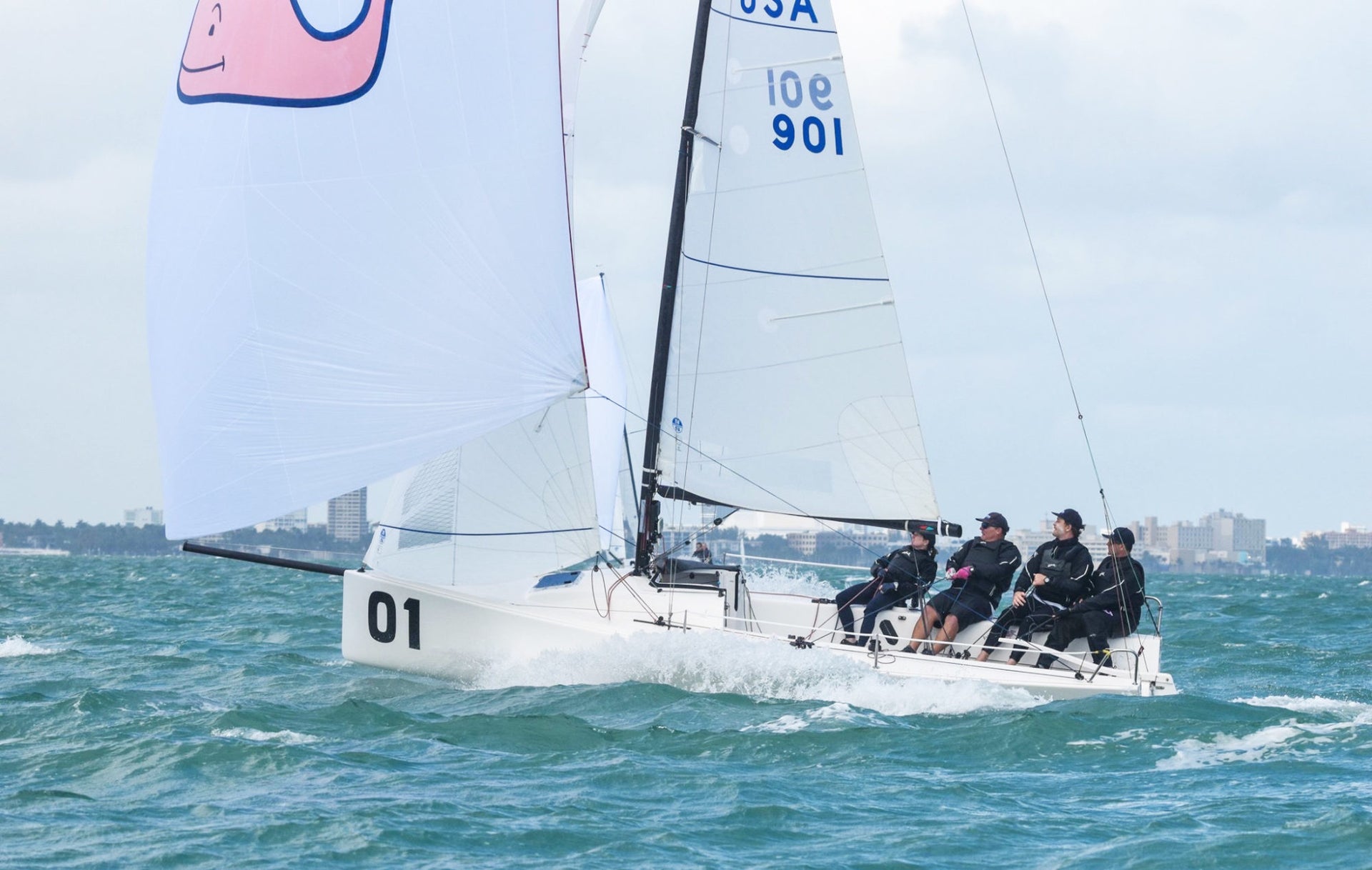
BAXTERS PREVAIL AT THE J/70 MIDWINTERS
BAXTERS PREVAIL AT THE J/70 MIDWINTERS
When the Game is Close, North Delivers.
2020 J70 Midwinter Champions 📸 Chris Howell
Team Vineyard Vines John and Molly Baxter, Ben Lamb, and North Expert Allan Terhune are the 2020 J/70 Midwinter Champs after a relentless eight-race battle in a variety of testing conditions. On the final day, they snagged two bullets using the 2019 J/70 Worlds winning inventory: F-1 Mainsail, J-6 High Clew Jib and AP-1 Asymmetrical kite.
We caught up with John Baxter for a quick interview.
Team Vineyard Vines had not sailed for a few months leading up to the Midwinters. What did you guys do to prepare and get back up to speed so quickly?
We have tried to be diligent about keeping good team notes and having repeatable settings, since we don’t get to practice a lot before regattas. We had two days of practice prior to the regatta with our training partners on 3 Ball JT and Savasana, along with our coach, Grant “Fuzz” Spanhake. Fuzz was a big factor in getting us back up to speed by looking at our sails and boathandling, and our training partners pushed us with great line-ups and open dialogue throughout the week. Also, it is huge that we get to sail with Ben Lamb and Allan Terhune. They are both great sailors and have been racing a lot in J/70s since our last event together in Cleveland last September, so they helped kick us back into shape as a team.
Not many teams sail as a husband-wife team and also bring the family with them. Why is this so important to you both?
Molly and I met in college on the St. Mary’s College Sailing Team and have loved racing together ever since. We both enjoyed cruising and sailing with our own families when we were kids, and love continuing that tradition with our own two boys. Charlie (6) and James (3) race with us for summer beer can club racing at Riverside Yacht Club, and they love coming to our J/70 regattas.
The J/70 seems like such a simple boat, but there is clearly a lot to it. What are a few things you focus on?
We agree it is a simple boat and we do our best to not over-analyze all the variables. We try to keep our focus on refining our boathandling and technique.
Why do you choose North Sails?
We have been sailing with North Sails for many years. We don’t think it’s an accident that the top of most of the Grand Prix classes are dominated by North Sails. They continually strive to refine and enhance the designs, and Tim Healy and Allan Terhune have worked closely with us to optimize the sails for our style.
See also: Heavy Air Tips – Allan Terhune Explains What Worked for Team Vineyard Vines at the 2020 J/70 Midwinters.
The North AP-1 Spinnaker, a J/70 must-have. 📸 Chris Howell
Team Empeiria, 5th Place. 📸 Chris Howell
The champs. 📸 Chris Howell
READ MORE
READ MORE
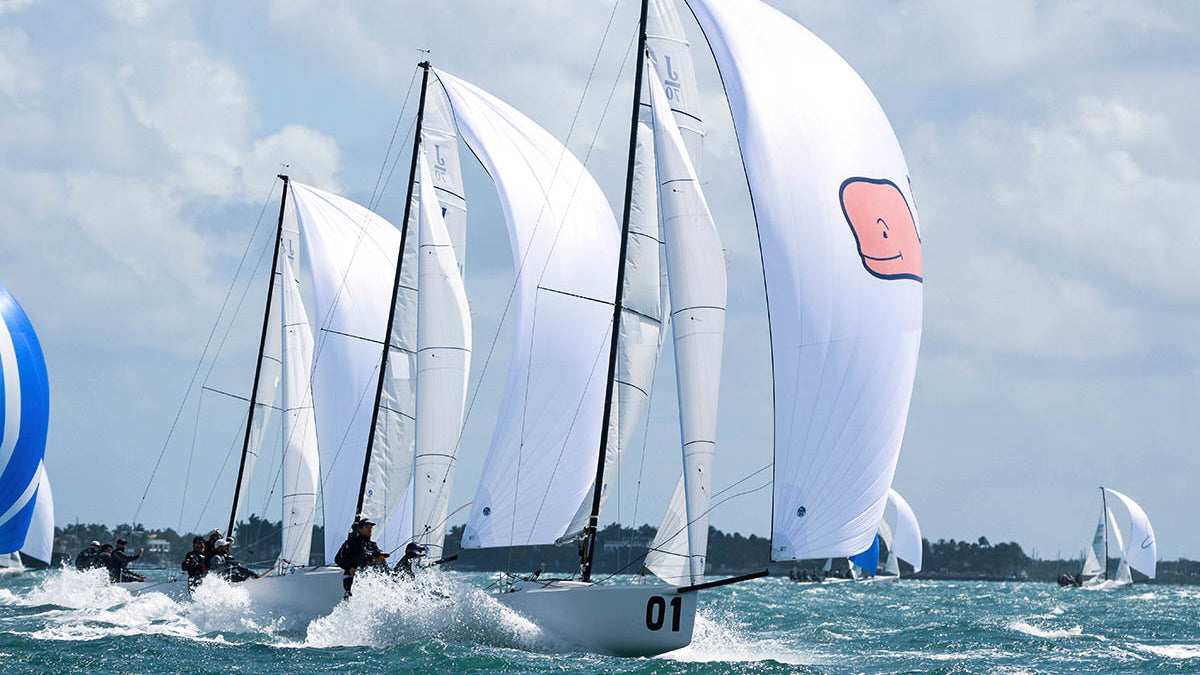
J/70 TIPS: HEAVY AIR
J/70 TIPS: HEAVY AIR
Allan Terhune Explains What Worked for Team Vineyard Vines at the 2020 J/70 Midwinters.
When the breeze increases, a different set of skills are required. We caught up with North Sails expert Allan Terhune, who called tactics on the winning team at the J/70 Midwinters in Miami, for some lessons learned from a windy weekend.
Sailing in Breeze – Upwind
The key to speed upwind is keeping the boat flat and balanced. This is achieved two ways: rig tune and trim.
Rig Tune
We were at the top of our tuning guide most of the weekend to keep our headstay tight. One key factor is the backstay gross tune; make it TIGHT. You need to have enough throw to pull backstay on, in order to flatten out the main. Many teams took the slack out of their gross tune but didn’t make it tight. Also I heard many people did not go to the top of the tuning guide. If this was not the weekend to go there, I don’t know what would be!
Trim
Once the rig is tuned, the goal is to keep the helm balanced, and also to be able to burp the main in the puffs to eliminate heel. The key to this is the jib sheet. If you have the sail max in-hauled like you would in lighter conditions, the main would immediately luff in puffs, forcing the bow to go down. To compensate for this, we sailed with less inhaul, and moved the lead forward one hole. This may seem counter-intuitive, but it keeps the leech correct and makes the foot powerful enough to get through the chop. We made sure the leech was close to the middle band on the spreader at all times.
We then played the in-hauler to get through waves and puffs. Our main luffed very few times, and we talked all the time about keeping the boat balanced.
As for mainsail trim, it was easy to over-tighten the outhaul and not have enough power through waves. We found that having max backstay was always faster and having enough vang on made it easy to play the sheet. We tried to NEVER let the main luff or flog. You have to be using both sails to be balanced and fast.
Sailing in Breeze – Downwind
Wow was that fun or what! Seriously though, it was HARD work!
A few things to remember off the wind in big breeze:
Keep a constant angle of heel. Too much heel and you wipe out, too little and you slow down and bear off too much. You have to keep the apparent wind forward.
Jib trim is crucial. Molly did a great job of always keeping the jib full, but also knew when to blow it if I lost the kite.
Jibing: Speed is your friend. The worst thing you can do is bear off and slow down and load the boat up right before a jibe. That is when you wipe out.
Steer around waves and surf whenever possible. Finding a good rhythm with the trimmer and talking about the angles is the best way to identify the path of least resistance.
Stay in the puff. We all work so hard upwind to go .1 or .2 knots faster, but if you miss a puff downwind you will be 2-5 knots slower. The tacticians who keep their eyes out for the next puff make HUGE gains.
This regatta was a great reminder that the J/70 is truly a team boat. Everyone has a role, and if one person is not carrying their weight, the boat does not succeed. For success in heavy air, you need to develop a different set of skills. And practicing with your team when it’s windy is the only way to get better.
Team Vineyard Vines John and Molly Baxter, Ben Lamb, and Allan Terhune are the 2020 J/70 Midwinter Champs after a relentless eight-race battle in a variety of testing conditions. On the final day, they snagged two bullets using the 2019 J/70 Worlds winning inventory: F-1 Mainsail, J-6 High Clew Jib and AP-1 Asymmetrical kite. | Full story
Awesome job team Vineyard Vines. 📸 Chris Howell
John Brim’s Rimette leading the pack 📸 Chris Howell
READ MORE
READ MORE
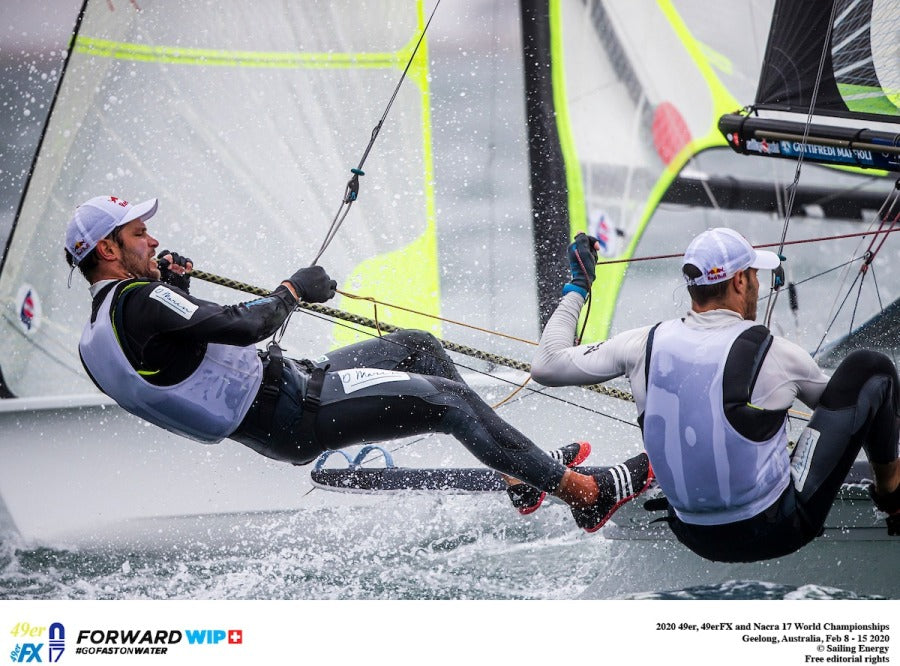
MALO O 49ERIMA NA SP
Malo o 49erima na SP
Stvarno je teško bilo izabrati naslov za izvještaj o nastupu dvije hrvatske posade u skifovima 49er i 49erFX. Muška posada, braća Fantela, teoretski su trebali braniti naslov svjetskih prvaka, ali s obzirom na tešku ozljedu mlađeg brata od prije nekoliko mjeseci bilo je nerealno razmišljati o borbi za postolje, ali na kraju plasmanom u medal race sigurno je sigurno bio ispunjen jedan od ciljeva. S druge strane, ženska posada je na ovom SP imala pretposljednju šansu za plasman na ovogodišnje Olimpijske igre.
Pa krenimo od Šime i Mihovila Fantele.
Njih dvojica nisu imali previše vremena za pripreme, jer je Mihovil s treninzima mogao krenuti tek u prosincu. Što se njih tiše, najvažnije je bilo vidjeti da li je ozljeda ostavila psihološkog traga i može li se Mihovil vratiti na jedrilicu sa 100%, odnosno da ne jedri s mentalnom kočnicom zbog straha od ponavljanja neugodne situacije.
Po prikazanom na regati u Geelongu izgleda da su sve stvari sjele na svoje mjesto i sad ostaje samo da momci nastave s treninzima, jer odavno nemaju presinga vezanog uz plasman u olimpijsku reprezentaciju. Svoju normu su ispunili prilikom osvajanja svjetskog naslova, tako da na ovoj regati definitivno nisu imali rezultatski pressing.
S druge strane Enia Ninčević i Mihaela Zjena De Micheli Vitturi otišle su u Australiju s nadom u uspješne kvalifikacije.
I muške i ženske posade su imale regatu organizirane na istom mjestu, a u blizini su regatno polje imali i katamarani klase Nacra 17. Stvarno hrpa najbržih olimpijskih jedrilica na jednom mjestu, a da bi organizatori imali malo laganiji posao, program je predviđao jedrenje različitih klasa u druga doba dana.
Prvi dan regate nije se jedrilo. Razlog je bio previše jak vjetar. Puhalo je s istoka između 25 i 30 čvorova. Drugog dana vjetar je bio upola slabiji i djevojke su odjedrile svoje plovove kroz jutro, dok su momci na regatno polje izašli u poslijepodnevnim satima. Nakon toga regate su se nizale jedna za drugom.
Obje flote su odjedrile po šest kvalifikacijskih jedrenja, a u finalu su muške posade uspjele napraviti također šest plovova, dok su djevojke imale samo po pet finalnih jedrenja. A za kraj su obje flote imale još i medal race.
FOTO: DREW MALCOLM
Malo detaljnije o događanjima u Geelongu ispričao je trener ženske posade, Karlo Krpeljević:
Prvog dana se nije jedrilo zbog nevere, a kasnije su puhali srednji i jači vjetrovi... od 12 do 17 čvorova. Cure su taj prvi dan kad se jedrilo bile dobre, ali bilo je previše trave na regatnom polju. Svima je zapinjala za peraje, pa se moralo puno čistiti. Inače je nema toliko, ali je ta nevera dignula s dna i stvarno nije bilo ugodno... iskreno, katastrofa. Tu su izgubile dosta bodova. Bile su u jednom plovu prve, pa su ušle kao osme. U idućem su bile treće, pa su završile kao pete. Stvarno su izgubile dosta važnih bodova zbog tih problema. A drugi dan su dobile jedan penal na startu. To im je bio dosta jak udarac, a kasnije su zaredale loše starteve nakon kojih se nisu izvukle. To su bili oni dani kad ti jednostavno ne ide, kad se svaki put odlučiš na krivu stranu. Tako da je stvarno šteta što nisu ostvarile bolje rezultate. Mislim, bili su njihovi uvjeti, dosta je puhalo, a po tome su one najbolje. Ta tri puta su svaki put bile na kraju oko desetog mjesta, a to ipak nije bilo dovoljno.
Karlo Krpeljević, JK Uskok
Finalni dio natjecanja otvaraju s još jednim desetim mjestom, zatim je uslijedio jedan kiks s 19. pozicijom, nakon koje ulaze u cilj kao 4., 1. i 8. Konačna suma ih je smjestila na 28. mjesto.
Prva iduća regata na koju posada 49erFX-a planira ići je Trofej princeze Sofije na Palmi, a nakon toga posljednja šansa za Rio na Svjetskom kupu u Genovi. Utješno je to što u Genovi ne bi trebalo biti trave na regatnom polju, ali s druge strane se ne očekuje da će to biti baš vjetrovit jedriličarski događaj.
S druge strane, braća Fantela su izgleda mnogo bolje pogađala pravu stranu na regatnom polju. U kvalifikacijama im je forma konstantno rasla i nakon dva uvodna 10. mjesta uspijevaju u cilj ulaziti sve bolje i bolje.
Dobar prosjek im osigurava jedenje u zlatnoj skupini.
Otvaranje finala im nije bio baš dio regate kojeg će se puno sjećati, ali su ga bar mogli odbaciti. Potom su se trgnuli, ušli u cilj kao drugi, a potom do kraja slijede lagane oscilacije i izmjene po jednog dobrog i jednog lošeg finiša. Na kraju skupljaju dovoljno bodova da se plasiraju u samo završnicu prvenstva, plov za odličje.
U toj konkurenciji, praktički stvarno najboljoj na svijetu, završavaju pretposljednji i u konačnici im to osigurava solidno deseto mjesto. Inače, da je bilo malo više sportske sreće i doslovno par bodova manje, mogli su završiti i nekoliko mjesta visočije.
A po pitanju mega drame oko Korona virusa, jedriličarima je bio zabranjen odlazak u Melbourne. Tih dana se u tom gradu identificiralo nekoliko oboljelih, pa su organizatori tako htjeli sačuvati zdravlje jedriličara.
READ MORE
READ MORE

WHAT ARE THE BEST SAILS FOR CLUB RACING?
For some sailors, “club racing” means a casual jib-and-main evening race aboard a well-stocked cruising boat carrying roller furlers and its anchor and chain in the bow.
READ MORE
READ MORE
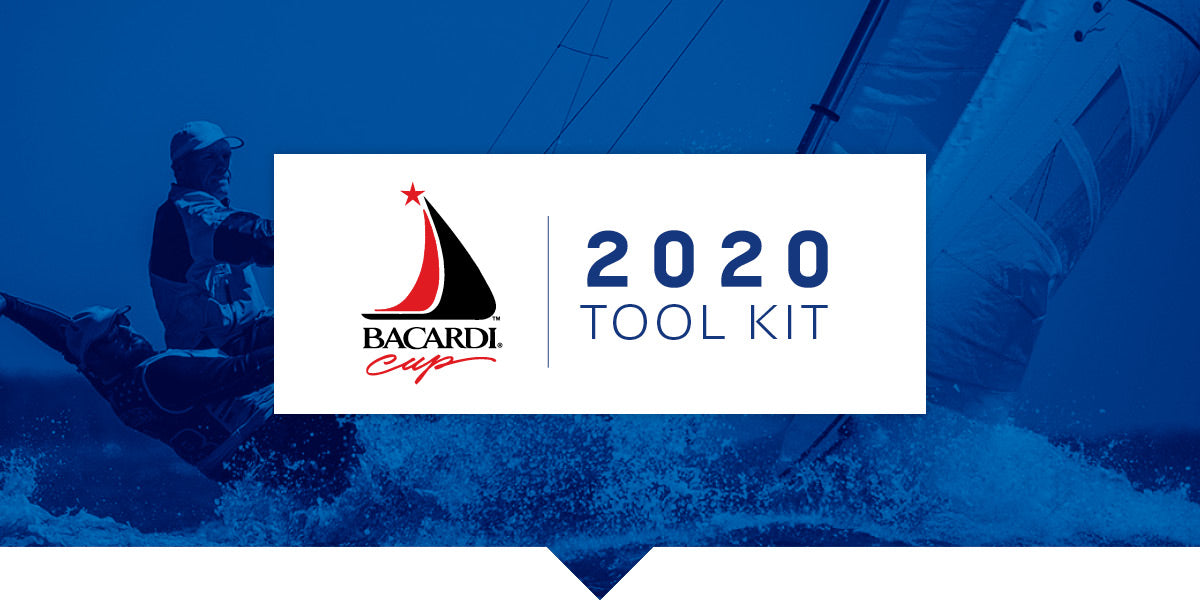
BACARDI CUP INVITATIONAL REGATTA TOOL KIT
Get The Most From Your Racing Experience!
Biscayne Bay is a great place to sail in March. Whether you’re a newbie to sailing in South Florida or a seasoned veteran, we’ve collected some of our best advice—both class-specific and general—to help you have your best Miami regatta, ever.
What To Expect in Biscayne Bay
We asked the local Star and Snipe World Champion Augie Diaz to explain what sailors should expect when they leave the docks. Learn more from Augie as he shares his secret to success.
Learn to Love Sailing in Heavy Air
It is not unusual to feel intimidated by a strong breeze, so we have put together three key pointers to help your team feel more prepared in these testing conditions.
Can the New Star Designs Repeat History?
Eric Doyle and Payson Infelise claimed Star fleet victory at the Bacardi Cup 2019 with new M-25 Mainsail and J-115 Jib designs. Hear how they came to beat seven World Champions and multiple Olympic medalists in Miami.
Jibing Like A Hero
A successful jibe is vital when racing in all conditions. We’ve broken down each step to help you successfully accomplish these maneuvers that can make or break your race result.
Perfecting 3Di for the Melges 24
As the world leader in One Design sailmaking, North Sails recently introduced a latest generation M-2 mainsail and J-3 jib. Learn more from Melges 24 Class Sail Expert Giulio Desiderato on how these regatta-winning designs came to be.
Lessons Learned from Rounding First
Mike Marshall explains two mental traits that will help you maintain the top spot amidst the pressure of rounding first.
Define Your Speed
Pulling all the pieces together can be challenging. Our Speed Guides will help you leverage our expertise to make the most of your sailing at the Bacardi Cup.
Viper 640 | Melges 24 | J/70
Why is Headstay Sag Fast Upwind in Light Air?
One design expert Tim Healy, describes how headstay sag affects sail shape and why manipulating these controls can be a risk worth taking.
Five Downwind Modes
Displacement mode, wing-on-wing, or full plane? Understanding the J/70’s different downwind modes will help you make the right move at the right time.
Speed Reading: Setting Goals
Setting goals is important for success, regardless of your experience. Hear more from sail expert Zeke Horowitz as he explains how to put your winning formula to work this sailing season.
Need Overnight Repairs?
The Fort Lauderdale team is here for you with overnight sail service and repairs during the regatta. Call the service team to arrange a sail pick up at 631-805-4949.
READ MORE
READ MORE
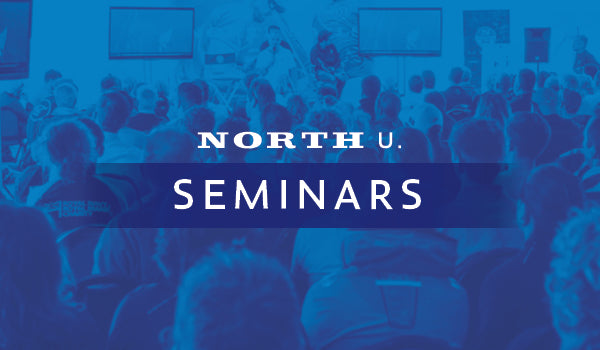
THE EDUCATION CONTINUES
THE EDUCATION CONTINUES
Expedition Software How-To With North U's Bill Gladstone & America's Cup Winning Navigator Peter Isler
Saturday February 15th North Sails Detroit welcomed Bill Gladstone and Peter Isler into the loft to conduct a full day Seminar on the tactical and navigation software Expedition. Bill is the owner of North U and Peter is a two-time America’s Cup Winning Navigator. This seminar was brought on following last year’s Mackinaw Seminar presented by Bill Gladstone and Karl Kuspa from North Sails. During that Seminar Bill touched briefly the Expedition Software. After the event there were many inquiries about how to learn more about the software. The customer asked and North delivered. Apparently the Detroit Area is not the only area looking for a seminar like this. The North Detroit Seminar drew participants from Texas, Canada, New York, Massachusetts and Ohio with several Michigan Participants traveling several hours to attend. Thankfully Michigan’s Winter Weather blessed us with a great weekend for travel.
This was a hands on event. If a participant did not own the software, they were able to download it on a trial basis to use for the class. Peter and Bill sent out homework and tasks for the participants to complete prior to the seminar and also sent out post seminar notes and tasks. “What a great opportunity to learn from one of the industry's best navigators. The pre-work coupled with the hands-on all-day course proved to be a fantastic learning environment and was truly one of the best classes I've attended in quite some time”- Lynn Kotwicki- Rear Commodore, Bayview Yacht Club. Lynn wasn’t the only one feeling this way. “It was a great class and huge learning experience. It was always great getting a chance to meet and talk with sailors!”- Andrew Wescoat- Houston, TX
“I have been using this software for about a dozen years. What I learned this weekend is that I had only scratched the surface of the capabilities of this software”- Karl Kuspa, North sails
The night before the full day Seminar, North hosted an open house. Why not take advantage of having Peter is town. Despite it being Valentine’s Day, there was still a group of about 20 people. Participants ate pizza and enjoyed adult beverages while Peter gave a high level look at Expedition and the software’s capabilities. After the presentation, Bill and Peter mingled and answered one on one questions. “Thank you for organizing, and to Peter for presenting and Karl and Chelsie for hosting the Friday Open House and Saturday Hands-On Training.”- Mike Staker.
--Our pleasure Mike!
This Seminar was the third of six hosted at North Sails Detroit. For more information about the remaining schedule please click here. We hope to see you at the next one!
READ MORE
READ MORE
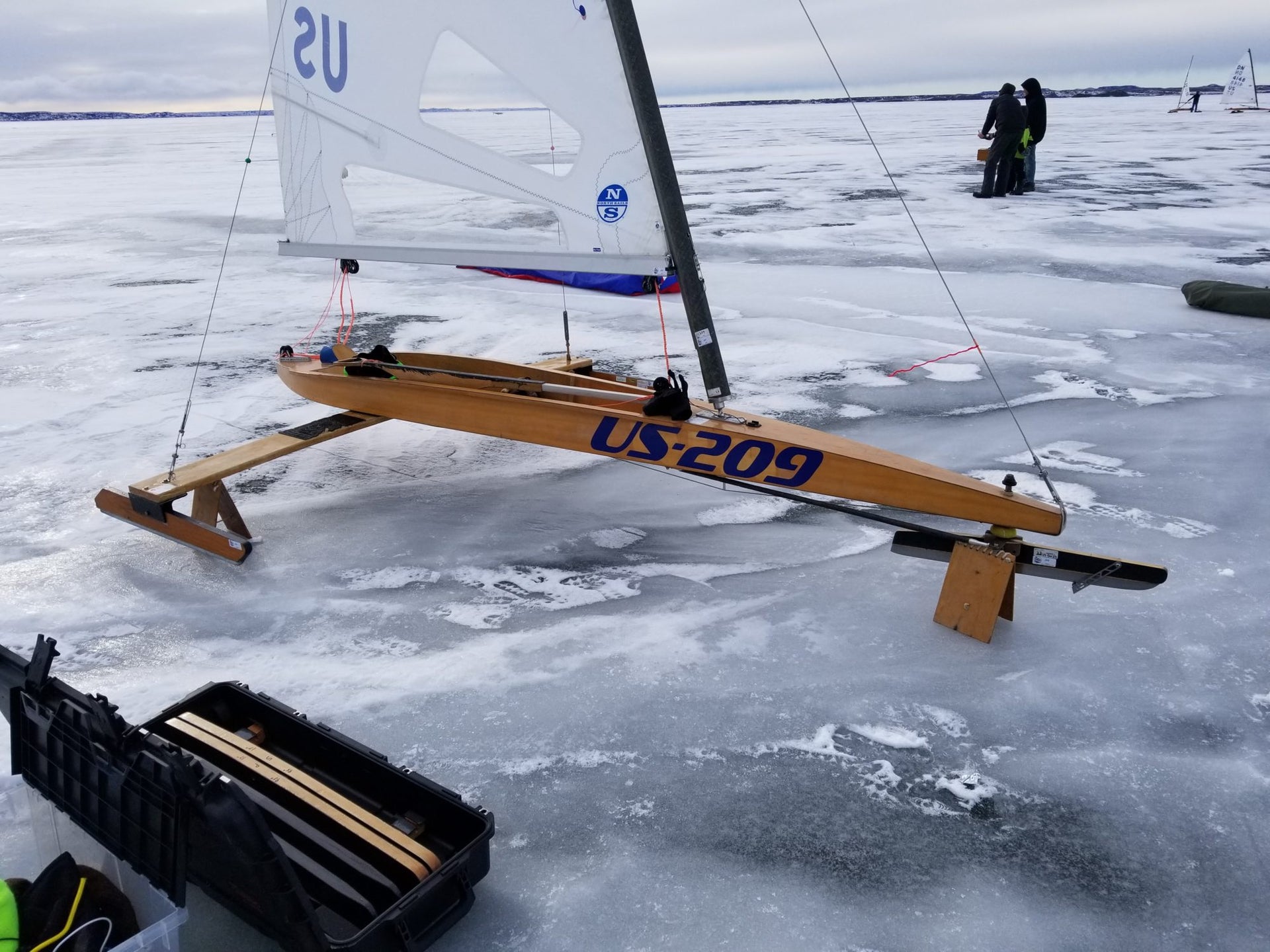
CATCHING UP WITH DN ICEBOATER TREY ROSE
CUSTOMER SPOTLIGHT: TREY ROSE
Catching Up With Trey Rose After The 2020 North American DN Iceboat Championships
For those that are unaware, Iceboating, simply put, is sailing on ice. There are many different types of iceboats, but current designs tend to have three runners or blades that support the main body of the craft. There are international and local competitions and the sport flourishes in the northern regions of both Europe and the US.
We got a chance to speak to a local Detroit area customer, Trey Rose, who recently returned from Fort Peck Montana after competing in this year’s DN Iceboat North American Championship Regatta. As with any sport there are certain characteristics that challenge participants and make the sport unique.
“The sport is difficult in the aspect of good wind, good ice and no snow on the ice” says Trey when asked about his participation in the sport. Finding this trifecta requires ice boaters to be flexible on time and location of any ice boating events. “These guys will say hey, we have a regatta this weekend and they’re like ok. And Thursday an email will go out and you find out it’s in Minnesota or Wisconsin” A lot of ice boaters have the ability to take time away from work with little to no notice, or people are retired from work.
Often times, soft water sailors are drawn to the sport because it’s similar to warm weather sailing and it keeps Great Lakes boaters active year round. However, Ice boats are known for their sometimes extreme speed and differences in maneuverability. When asked what’s different between soft and hard water sailing, Trey had this to say: “The components and how to de-power. Talking about bending your rig how many feet versus hey can I get an inch or two of mast over here….everything is a lot more extreme, speed, etcetera” For Trey, Ice boating keeps him intrigued for more than one reason. “It’s been fascinating to me. I’m really into sailing and it was a new challenge, and it certainly is all of that. I’m hoping as I comprehend and excel at this I can convert it over to soft water.”
For locals, there are several different groups that get out on the ice together whenever possible, including the Iceboating in Michigan and Ohio Facebook Group. According to Trey, “It’s a pretty active page for people posting hey, my backyard lake looks like this and they have get-togethers.” Trey has a few locations that make it easier to get out more often and have spots where people can take a break, warm up and get back out there for more action. “My favorite location, I suppose is Walled Lake. There’s a nice little beach area there that we can utilize. There’s a bar and grille right next to the beach. Its where I have been able to easily go. And I can bring new people into the sport and rotate them in a warm environment. The best place locally, I think is Maumee Bay, just because there’s so many people that sail there. There's a little shallow water area and a cove and you get a lot of great ice conditions frequently.”
The DN Iceboat was created first here in Michigan, spurred by an active community of skilled craftspeople and the Detroit News taking notice. Trey shared his knowledge on the history of the craft and how it all got started. “The intent was for anybody to get these plans and build it in their garage. I believe what was going on was a lot of people were building boats. There was this arms race of engineering almost. Kind of like the Americas Cup where design might actually win versus the sailor. So at one point, what they did was say let’s make one design. You can build your own boat and all that, but be within these certain parameters. And that way you can compete and say at least we’re in the same realm as each other. I believe it was an article placed out by the Detroit News, which is why it’s called the DN”. The DN Iceboat is currently sold internationally, and is the most popular Ice Boat in the world.
Trey got his first DN Iceboat from a co-worker who was trying to get rid of the boat after the owner of the boat, his Grandfather, had passed away. “He wanted it to be used but didn’t know anything about it. He knew I sailed. We made a great deal and since then it’s been a roller coaster of upgrades. I don’t think I have any part of that boat, that’s part of my race program now.” Ice boaters can spend a lot of time working on and tweaking their boats for optimal performance. According to Trey the type and quality of your equipment and sails can make or break your sailing experience. “Equipment is really, really important. In iceboating I have noticed a tremendous difference the equipment makes. You can buy speed. With the right conditions, the right materials, the right sails, the right runners make a big difference.”
Trey purchased a North Sails One Design Power-Max mainsail a few days prior to the regatta. He explains how that sail effected his light air sailing. “I’m a little bit heavier and there’s a slight worry about my light air performance. But we had a lot of practice and I was just killing these guys off the line, at least. I got my speed up and I got point faster than anybody around me on all 4 or 5 starts. I would say that sail is very helpful.”
The location of the regatta was chosen a bit later than usual and much farther away than usual, due to a weather system that came through the mid-west just days prior to when the regatta was set to take place. Trey details, “We had this crazy weather system that came by and dumped a bunch of snow, like 6 inches or so and more north. All of our North Americans thus far have been between Minnesota and Maine and we have different regions. The west region goes all the way up to Minnesota but not past that. That weather system took any safe ice that we had in the region and put 6 inches of snow on it. You can’t do an even on that.
Thankfully, some Iceboaters from Montana reached out with good ice conditions and with little other options, the race was scheduled for a water basin in Fort Peck Montana. “The water basin that we sailed on is a dam with a reservoir that feeds the Missouri river. The Army Core of Engineers manages it. The ice was great, well, ok and they sent all these videos of people sailing on it. So we packed our bags and headed out west and there was no wind.”
It was a difficult task finding a specific location to set up the course. “We were scouting ice, and the people managing the reservoir made the decision to lower the water level which ended up cracking some of our ice. Which made some of the areas we might want to go sail off limits; very inaccessible and obviously cracking and making some pressure cracks elsewhere. Luckily this reservoir has more surface area than the coastline of California.”
The rules of the regatta require that 3 races be held within a division to qualify as an event. This can be difficult if the weather conditions do not cooperate. This year, the weather was not cooperating. After delays in finding ice and in having conditions that were good enough to run qualifying races it came down to Friday which was the final scheduled day of the 2020 NA Championships. “Unfortunately, the end of the day happened and we only had 2 in on Silver that were legal within the time limits. The event does have a stipulation that you go until Saturday if you have not been able to complete the event by Friday sundown. Saturday was supposed to be blowing anywhere from 10 knots to 30. All of the sudden this is going to be a big air event. And once you start a race day, it’s a race day. They had us out till sundown there. I think we did 3 races. Boats still were whole. The wind just kept piping up and piping up, we ended up having a squall line come through. But the ice conditions weren’t great. They still had cracks in them and we were in really windy conditions so it started getting on the edge. At least for me. I know some of the more seasoned guys were saying, no, it’s just getting fun.”
Trey is considering competing again in next year’s North Americans depending on where they take place and how things go with his new schedule of raising his new baby girl, Claire.
Here is a video clip taken by Sean R. Heavey on the last day of the regatta.
If anyone is interested in trying the sport, you can contact Trey at Trey_Rose@hotmail.com. Or check out the Facebook page for Ohio and Michigan Iceboating to see what’s happening in your area. If you have questions about Sails for the DN Iceboat, feel free to contact the Detroit Loft.
READ MORE
READ MORE
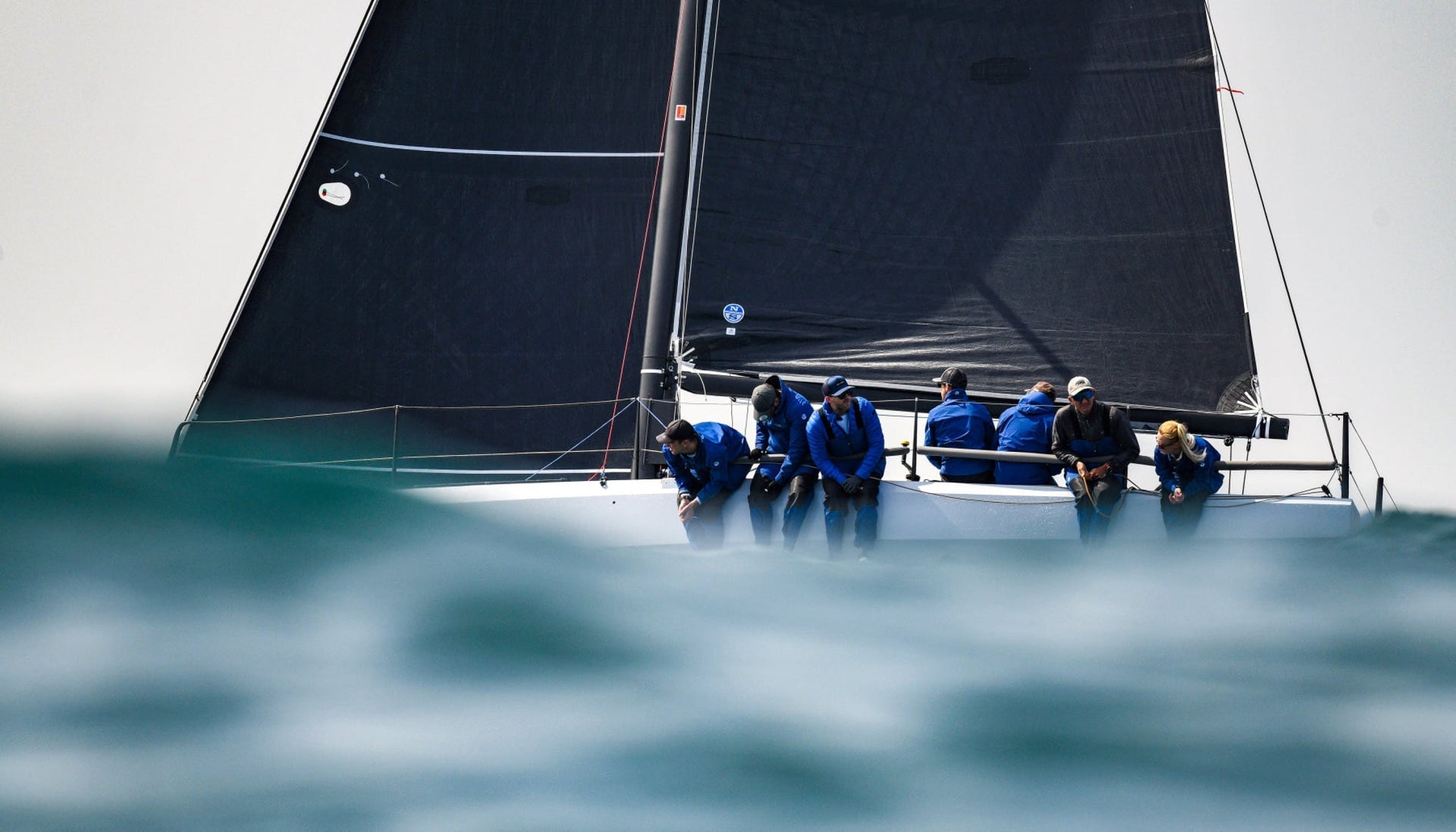
THE DIFFERENCE BETWEEN RACING SAILS AND CRUISING SAILS
People use sailboats in many ways, but we broadly define them as cruising or racing. Here is the North Sails Expert advice on what to look for when it comes to performance, design, and materials
READ MORE
READ MORE
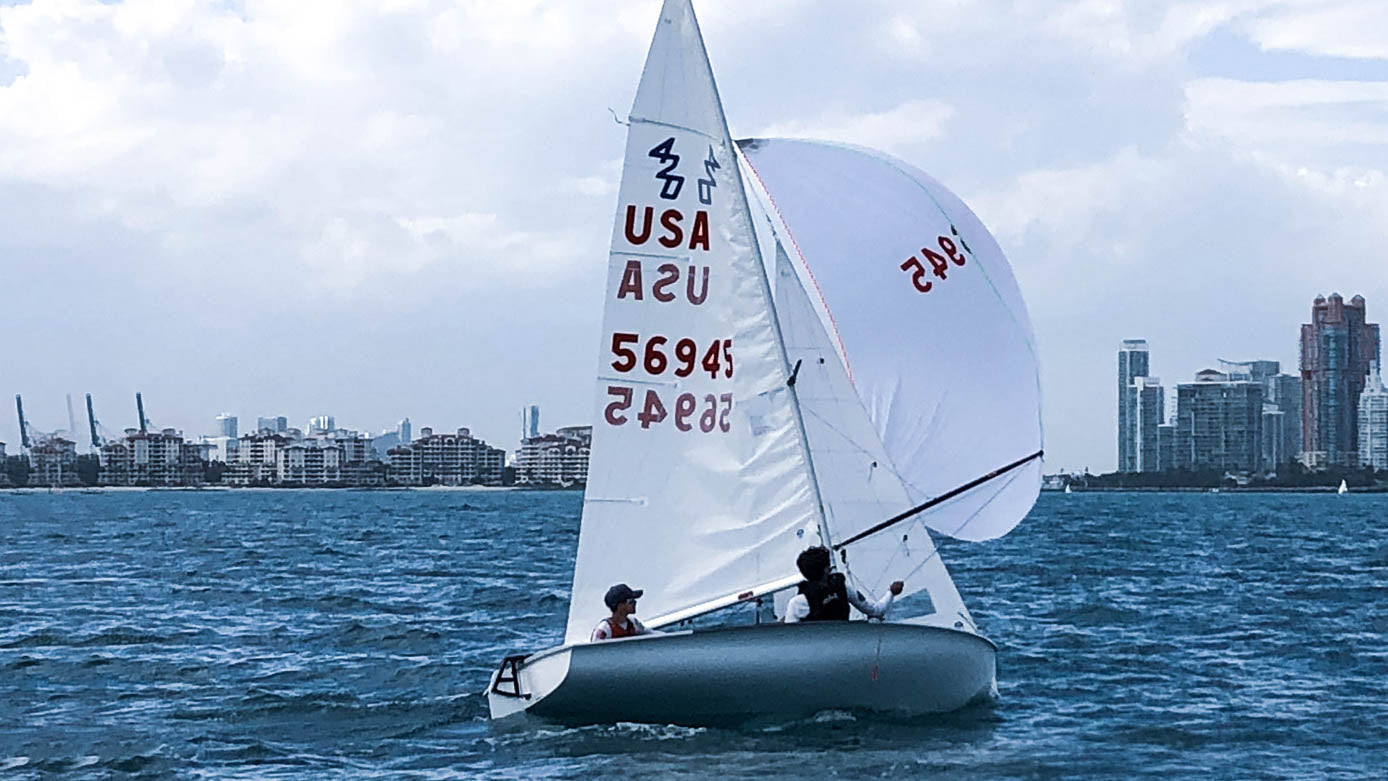
420 MIDWINTERS: COACH NOTES
420 MIDWINTERS: COACH NOTES
Key Tips To Up Your Game
35 teams from around the country gathered at the Miami Yacht Club for the 2020 International 420 Midwinter Championship. Out of the high caliber of talent, Justin & Mitchel Callahan prevailed with outstanding sailing and a convincing win at this event. North Sails powered boats fared very well, showing speed and versatility in a range of conditions, ultimately placing seven of the top ten boats in the overall results.
Here are some coach notes from North expert Tom Sitzmann:
Know your own boat
As much as we’d love to think that our hulls, spars, foils, sails, and individual tuning measurements are exact, the reality is that each boat, and all gear associated with it, is unique. With a tuning partner, experienced coach, or both, make sure you get out on the water before racing to check your rig settings and sail trim – no two boats are exactly alike! Use tuning guides as a starting point, experiment when able, but proof of concept is only validated on the water.
Spinnaker trim on the reach legs
There are LOTS of gains to be made on the “outer” reach and in the final sprint to the finish. Again, it is critical to know the design philosophy of your spinnaker and trim accordingly. Pole height, often set and forgotten about, can be a big difference-maker for an i420 on the wire reach. Experiment and improve!
Learn more about 420 sails.
Re-tuning for the lighter wind prediction on the final day.
Haul to the open-water sailing east of Key Biscayne
READ MORE
READ MORE
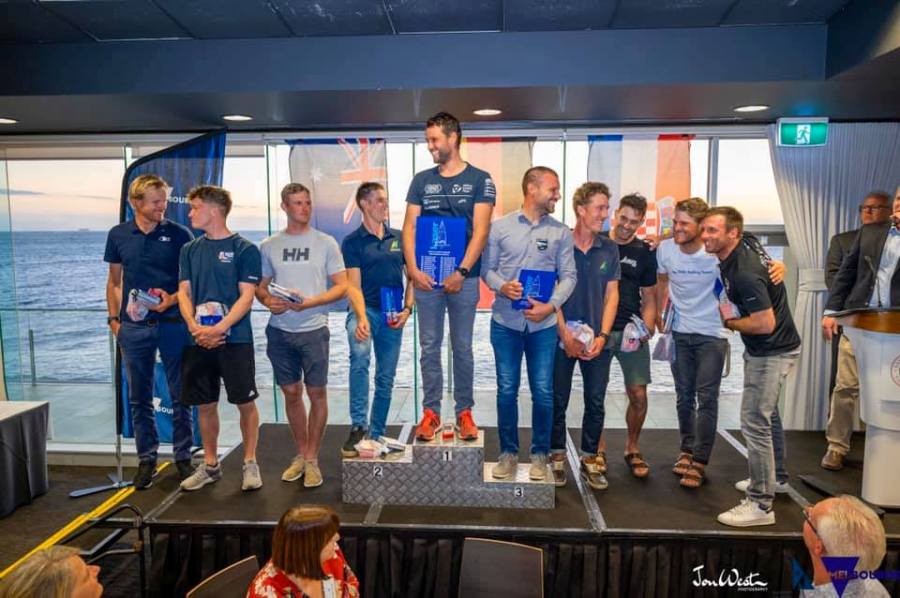
TONČI STIPANOVIĆ, BRONČANI NA SP ZA LASER STANDARD
Tonči Stipanović, brončani na SP za Laser Standard
FOTO: JON WEST
Zar može biti bolje otvaranje sezone od medalje na Svjetskom prvenstvu? A još ako se k tome doda da te za pola godine čeka nastup na najvažnijem sportskom natjecanju na planetu! Stvarno izvrsna, a s ovom medaljom u džepu i iznimno motivirajuća kombinacija.
Sigurno već svi koji prate jedrenje znaju da medalja brončanog sjaja i da ju je osvojio Tonči Stipanović, jedriličar u klasi Laser Standard iz JK Mornar.
Ova medalja je samo još više učvrstila njegov status našeg najboljeg jedriličara u ovoj klasi, a kroz cijelu njegovu karijeru bilo ih je i u nekim drugim klasama... pa prisjetimo se:
1999. - 2. na SP klase Optimist u team raceu
1999. - 2. na SP klase Optimist u pojedinačnoj konkurenciji
2001. - 3. na SP klase Optimist u team raceu
2002. - 1. na SP klase Laser 4.7
2003. - 1. na SP mladih u klasi Laser Radial
2010. - 1. na EP klase Laser Standard
2011. - 1. na EP klase Laser Standard
2012. - 2. na SP klase Laser Standard
2013. - 1. na EP klase Laser Standard
2014. - 1. na EP klase Laser Standard
2016. - 2. na Olimpijskim igrama u Laser Standardu
2020. - 3. na SP klase Laser Standard
Ja sam došao malo kasnije od ostalih, tako da kad sam prvi dan došao dočekao me je lagani vjetar, a to najviše volim... kad dođem na neku novu lokaciju da krenem postupno, od slabijeg prema jačem vjetru. Tako da sam imao vremena da uhvatim ruku na novom brodu. Već od početka sam imao dobru brzinu, pa sam odmah od početka bio zadovoljan. Zadnje treninge sam napravio po vjetru s kraja, onakvom kakav smo imali posljednji dan prvenstva. To su bili stvarno teški uvjeti. Po tom vjetru stvarao se chopy val (kratak i visok, op.a.), a od kanala, nama s desne strane, dolazio je velik val iz zaljeva, tako da smo imali taj neugodan swell s boka. Po pitanju konkurenvcije mogu odgovoriti da je bila najbolja koja je trenutno moguća u Laser Standardu. Jedino Burton nije bio u formi jer 3-4 mjeseca nije sjeo u brod, već samo petnaestak dana prije starta regate. I to se i vidjelo... ali svi ostali su bili u top formi. Svi ostali su manje više proveli cijeli prosinac i siječanj u Australiji i bili su na maksimumu. Tako da mislim da sam sve izvrsno odradio s obzirom koliko malo vremena sam proveo u Melbournu. Što se tiče taktike, tu nije bilo nikakvih kalkuliranja. U svaku regatu sam ulazio kao da je prva. Možda sam jedino predzadnji plov mogao taktički malo drugačije odigrati... držati se bliže njima, ali sam išao jedriti jednako kao i prvu, koju sam završio četvrti. Međutim, bio je jedan oblak koji se u pola regate počeo micati i tu se desila jedna promjena vjetra na strani na kojoj ja nisam bio i tu sam malo ostao iza i nisam uspio biti bolji od 21. mjesta. U svakom slučaju taktika da u svakom plovu idem na što bolji rezultat mi se isplatila. Moram izraziti zadovoljstvo i s opremom, s njom nisam imao nikakvih problema. Za razliku od Pavlosa koji je morao tri puta unutar regate mijenjati donji dio jarbola koji mu se stalno krivio! Ja s tim nisam imao problema, a i sve ostalo mi je funkcioniralo besprijekorno. U svakom slučaju, pripreme koje smo odradili na Malti su se definitivno isplatile! Istina, ovdje nismo imali tako brutalan val kao na Malti, ali tamo je bio dosta jak vjetar i to nam je stvarno dobro došlo. Stvarno smo i ja i Filip ovaj put došli fizički i mentalno spremni. A čini mi se da je ovaj put presudnija bila fizička sprema za konačan rezultat. Npr. ovaj nijemac koji je pobijedio je svjesno došao na regatu s 87kg. Bio je brz i išao je na to da će svaki dan biti jak vjetar i da će morat puno visiti.
Tonči Stipanović, JK Mornar
Tonči sad ima mali odmor, a iduće okupljanje ekipe je 1. ožujka. prije dvije domaće regate, Velike nagrade Mornara i Prvenstva Hrvatske. Nakon toga slijedi nastup na Palmi, a preskočit će Genovu u kojoj će se dijeliti preostale norme za Tokio.
Zatim u travnju ekipa putuje za Francusku i nakon toga je fokus na Japan i Olimpijske igre.
Što se tiče same regate, flota je bila podijeljena u tri skupine. Dvije su imale po 41 natjecatelja, a jedna 42... ukupno 124 najbolja jedriličara iz cijelog svijeta. Prva tri dana regate su se jedrile kvalifikacije, svakog dana po dva plova.
FOTO: JON WEST
U kvalifikacijama Tonči osvaja po dva prva i dva druga mjesta, a lošiji ulasci su mu 6. i 13. mjesto. S takvim rezultatima nije bilo nimalo straha da li će finalni dio prvenstva nastaviti u zlatnoj skupini.
Slična situacija je bila i s njegovim klupskim kolegom i našim drugim predstavnikom u Melbournu, Filipom Jurišićem. Filip je također kvalifikacije odjedrio na vrlo visokom nivou i jednom pobjeđuje, osvaja jedno treće, dva četvrta i 15. mjesto.
Jednako kao i Tonči, Filip nastavlja Svjetsko prvenstvo u zlatnoj skupini gdje zajedno jedre idućih šest jedrenja u dva dana.
Tamo je situacija dosta ozbiljnija, jer je sad tu koncentrirani svi najbolji. Jedrenja se nastavljaju iz dana u dan, a naši momci jedre s promjenjivim uspjehom. Tončevi najbolji rezultati su dva četvrta mjesta, ali vrlo dobri ulasci u kvalifikacijama donekle anuliraju 11., 15. i 18. mjesto. Srećom bilo je dovoljno jedrenja da može odbaciti svoj najlošiji rezultat, 21. mjesto. Taj kiks se desio u drugom plovu posljednjeg dana i tada Tonči uspijeva zadržati mentalnu snagu i ne dozvoljava da mu taj rezultat utječe na prikazano jedrenje u posljednjem plovu.
Da je u tim trenucima situacija po pitanju medalje za našeg jedriličara bila poprilično opasna govori podatak koji se može vidjeti u finalnim rezultatima, a to je da su jedriličari koji su završili na 4. i 5. mjestu imali dva boda više od Tonča!
Mjesto iza Tonča je završio vjerojatno najveći tragičar SP-a, francuski jedriličar Jean Baptiste Bernaz. On je u 12 jedrenja imao čak 6 prvih mjesta i po jedno 3., 4. i 7., a od čega su dvije pobjede bile u finalu! Međutim, kad je zeznuo, zeznuo je do kraja... U konačnoj sumi medalje su ga koštala 21. i 32. mjesto, dok je BFD iz drugog finalnog plova odbacio.
Što se tiče Filipa, njega je bod dijelio od 9. mjesta, a tijekom prvenstva je jedan od finalnih dana završio čak i na vrlo visokom 6. mjestu. Najbolje je završio u posljednjem plovu kad je ciljnu ravninu presjekao 7. po redu, dok su se ostali rezultati vrtili između 12. i 32. mjesta.
Nadao sam se malo bolje, ali eto... bilo je gusto... Došli smo u Australiju malo ranije da bi se prilagodili na tu opremu koju su nam oni dali. Naime, za jedrenje na SP je bilo obavezno da koristimo njihovu opremu. Stvarno se osjećalo da je ta oprema dosta drugačija od one koju inače koristimo. Na samom početku priprema nisam bio baš zadovoljan, ali iz dana u dana kako je prolazilo vrijeme pomalo sam poboljšavao sve što nije bilo dobro. A najviše mi je smetalo to što mi je brzina na treninzima na Malti bila izvrsna, a ovdje mi je to stvarno škripalo. Uglavnom, u tih tjedan i pol što smo bili dolje prije početka svjetskog, nastojao sam se prilagoditi što bolje mogu i kroz regatu sam uspijevao nadoknađivati taj manjak brzine u odnosu na Maltu. To mi je bilo nužno da bi opstao u vrhu... i eto, uspio sam sebi dokazati da unatoč takvom hendikepu mogu jedriti u samom vrhu, a u tom dijelu ljestvice u ovoj našoj klasi je vrlo gusto. Što se tiče Tokija, regata je završila loše za mene, ali Tonči je s ovom medaljom itekako potvrdio da je on taj koji nas tamo treba predstavljati! Uglavnom, ne žalim za ničim jer sam dao svoj maksimum. Rezultat na ovom svjetskom je moj najbolji plasman ikada, a sigurno je razlog u tome što sam jedrio apsolutno neopterećen rezultatom. Na prošlom sam propustio ovakav rezultat zbog opterećenja našim kvalifikacijama, a sad sam uspio jedriti bez ikakvog mentalnog opterećenja i bez fokusa na kvalifikacije, već sam se uspio koncentrirati samo na kvalitetu jedrenja. Uvjeti na moru su nam bili dosta teški. Na mjesto gdje smo jedrili dolazio je val iz zaljeva, iz dubokog dijela u dosta pliće, pa je posljedica stvaranje dosta visokog i kratkog vala. Također je i bila dosta vjetrovita regata i u kombinaciji s visokim levelom konkurencije mogu reći da sam stvarno zadovoljan svojim rezultatom. Tako da su se težak rad i vrhunske pripreme na Malti definitivno isplatile. Mislim, u uvjetima koje smo imali na dva ciklusa priprema na Malti, razvili su mi snagu s kojom sam se mogao nositi s konkurencijom. Što se regatnog polja tiče primijetili smo tri različite kombinacije uvjeta... od slabog, srednjeg i jakog sea breez-a, pa do ciklona i nešto jačih nevera i do vjetra s kraja koji je puhao u stilu naše bure. U početku je taj sea breez, dok smo trenirali, imao najjednostavniji obrazac ponašanja. Njega smo relativno dobro svladali. Onda se ta ciklona pojavila s tim neverama... a i tu smo se dosta dobro snašli, svi smo dobro jedrili. I zadnje je bilo to s kraja i mislim da je realno govoreći to svima bilo najteže. Stvarno su to bili nestabilni uvjeti, pogotovo zadnjeg dana kad se svatko pozicionira na osnovu svojih rezultata... u odnosu na konkurente koji su najbliži... Ja tu prvu regatu nisam odvozio najbolje, završio sam 24. ali drugu sam bio dosta bolji i u posljednjem plovu ulazim kao 7. Najlošije sam u tom finalu jedrio u prva tri plova i tada stvarno nisam bio zadovoljan brzinom. Mislim, nema logike da kažem da sam bio spor, a jedrio sam u samom vrhu... ali vidio se manjak brzine u duelima, a pogotovo je to dolazilo do izražaja neposredno nakon starta. To je bilo nešto gdje sam kaskao za ostalima, ali s druge strane sa snagom, spremom i koncentracijom bio sam na vrlo visokom nivou i s tim sam se uspio izvući. U svakom slučaju ja sam zadovoljan svojim napretkom, a siguran sam da mogu još puno bolje, jer sad igraju samo nijanse!
Filip Jurišić, JK Mornar
FOTO: JON WEST
Pobjednik ovogodišnjeg Svjetskog prvenstva je njemački jedriličar Philipp Buhl. Briljirao je u uvodu s četiri pobjede i jednim 2, mjestom, dok je 4. odbacio. U finalu mu je najbolji finiš bio prilikom otvaranja, na drugom mjestu, a u ostalima kao da mu je forma pomalo padala. Ali prosjek mu je bio vrlo dobar i činjenica da je iz finala odbacio 10. mjesto osigurali su mu zlatnu medalju s 12 bodova prednosti ispred drugoplasiranog australca Matt Wearna koji je imao prednost od 28 bodova ispred našeg Tonča.
Nastavak sezone je sad cijeli u znaku priprema za Olimpijske igre u Tokiju. Glavni zadatak Filipa Jurišića je da bude sparing partner Tonču Stipanoviću, ali uz regate na kojima će zajedno nastupiti bit će ih i nekoliko koje će imati poseban Filipov fokus. Zajedno će jedriti na Palmi i u Hyresu, dok Filip možda nastupi i na Europskom prvenstvu.
Nakon toga slijedi regata Svjetskog kupa u Japanu i nekoliko pripremnih regatica pred Olimpijadu gdje će uz naš dvojac jedriti i Pavlos Kontides. Uglavnom, do ljeta u Japan će putovati čak tri puta!
Što drugo, nego ekipi JK Mornar zaželjeti puno sreće u nastavku sezone i da ne zaborave da se svi potajno nadamo dobrim vijestima iz Tokija ovog ljeta :)
S ovom Tončevom broncom, Jozo Jakelić, trener Mornarevog Laser Standard tima, potvrdio je svoj status jednog od najboljih svjetskih trenera u ovoj klasi, a sigurno spada u najtrofejnije Hrvatske jedriličarske trenere ikada!
READ MORE
READ MORE
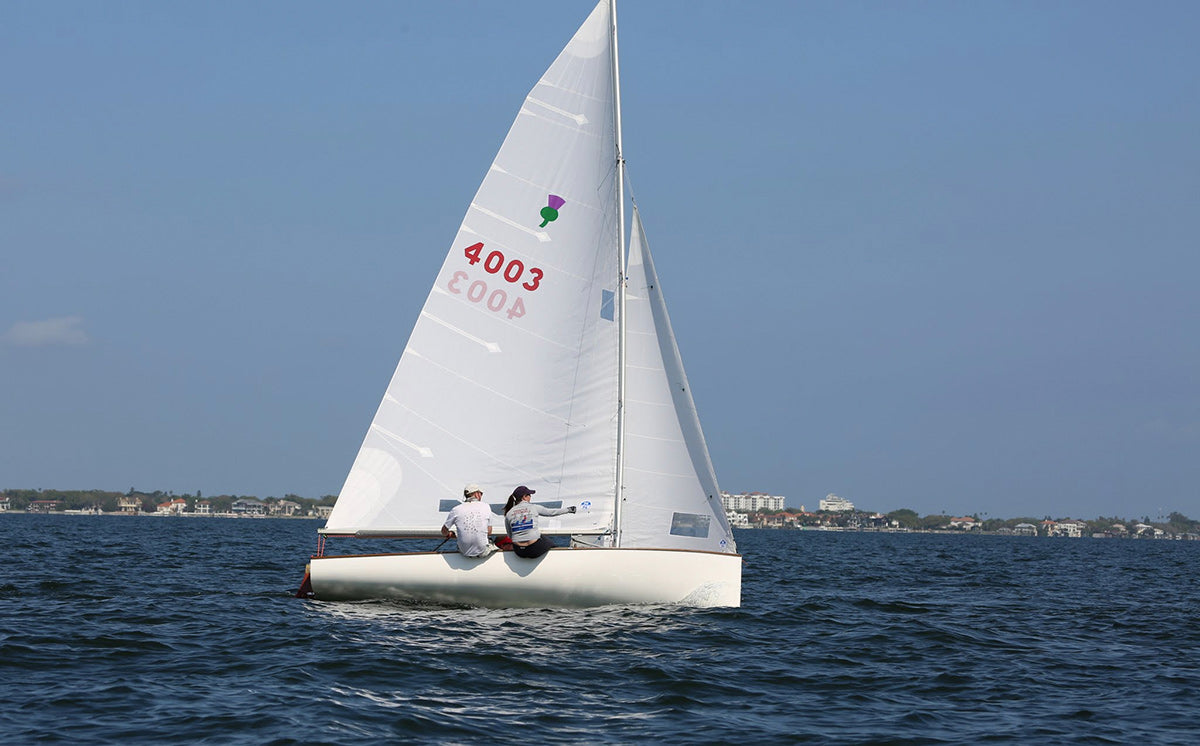
THISTLE MIDWINTERS WEST: COACH NOTES
THISTLE MIDWINTERS WEST: COACH NOTES
North Expert Mike Ingham Shares Clinic Tips
📸 Tina Deptula
North Sails expert Mike Ingham hosted a one-day clinic for over 20 Thistles in preparation for the 2020 Midwinters West in San Diego, CA. Boats were overpowered at first, but later in the day, the wind softened.
“It was nice to see both wind ranges,” Mike says. “Reviewing the on-the-water videos, I found some common threads that were well worth talking about with the group.”
If you couldn’t be there, here’s what Mike saw.
Flat, Flat
The Thistle likes to sail flat, especially in Mission Bay where there are no waves.
Depowering
To keep flat when overpowered, you need to depower. Here are a few thoughts on how to do that in flat water:
Outhaul – Tight the outhaul until the foot looks stretched. That shelf is important.
Cunningham – Make sure your main halyard is up all the way and your cunningham is reasonably snug. Wrinkles are great in lighter wind, but as it builds, pull it on to smooth them out.
Pinch – In flat water when overpowered, it is okay to pinch.
Jib Trim
A great starting point is to trim the jib leech in until it lines up with a zip tie taped to the middle spreader 10 ½” away from the mast. A lot of people did not have that zip tie, and their jib trim was inconsistent.
In Heavy Wind: If you have to ease the main out to keep the boat flat, ease the jib as well until there is just a hint of backwind in the main.
In Lighter Wind: When underpowered, if the jib leech tell tale near the middle spreader is stalled, you are trimmed too tight. If it is flowing, you may be able to trim tighter.
Mainsail Trim
When overpowered:
Vang sheet. Pull hard on the vang, and then let the mainsheet out to keep the boat flat.
If you have the North Proctor mainsail, traveler sheet.
When underpowered:
Keep the vang floppy loose so you can control the leech tension with the mainsheet.
As a starting point, try to keep the top main leech telltale flowing 50% of the time (if it stalls behind the main for a few seconds, then flows straight back for a few seconds, that’s 50%)
In flat water, you can have it flow less, say 30%
In waves or chop you will want it to flow more, say 75%
Mike’s next stop – the Thistle Midwinters East in St. Pete.
Learn more about North Sails Thistle sails.
READ MORE
READ MORE
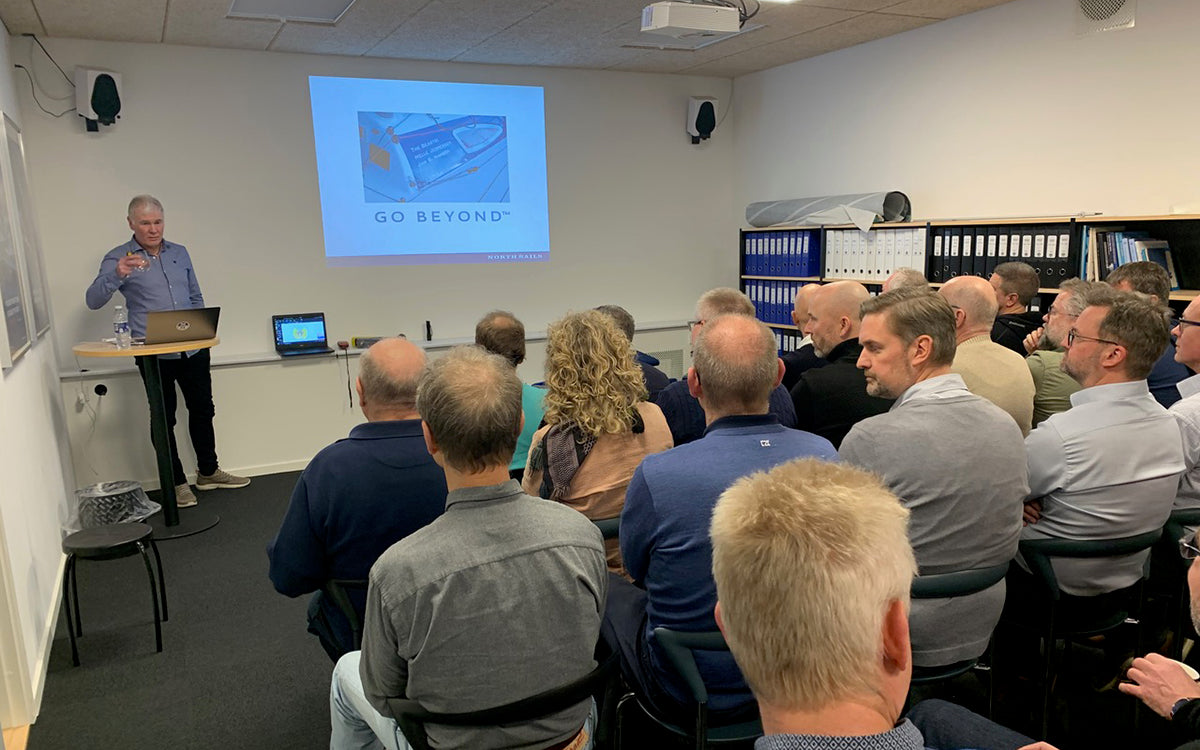
VELBESØGT AFTEN HOS NORTH SAILS
VELBESØGT AFTEN HOS NORTH SAILS
Med Jan B. Hansen, skipper på "The Beast"
Jan Hansen fortalte om sine erfaringer fra sæson 2019 med sin nyindkøbte Figaro 2, "The Beast".
North Sails have oprindeligt indbudt til en enkelt aften med Jan Hansen, single- og doublehand sejlads. Arrangementet blev overtegnet i løbet af en dags tid, så det blev i stedet til to aftener med fuldt hus. Knap 90 sejlere kom forbi sejlloftet i Herlev.
De fik en aften, hvor de indledningsvis kunne få en snak med flere af vores kompetente sælgere, som alle er sejlere på topplan.
Derefter underholdt Jan Hansen i et par timer med erfaringerne fra sæson 2019 med sin nyindkøbte Figaro 2, "The Beast". Vi kom vidt omkring: Fra valg af bådtypen, sejlene, sejladsplanlægning, fysik, sikkerhed og planerne for 2020.
Der blev uddelt af såvel gode, som mindre veldisponerede oplevelser på vandet og alle gik herfra lidt klogere og med et smil på læben.
North Sails glæder sig til at indbyde til lignende arrangementer. Hold øje her på hjemmesiden samt tilmeld dig vores nyhedsbrev for at holde dig opdateret.
READ MORE
READ MORE

ANNAPOLIS SEMINAR SERIES
ANNAPOLIS SEMINAR SERIES
Immerse Yourself In Our Upcoming Educational Opportunities
North Sails Annapolis is pleased to announce their Winter Seminar Series schedule. Connect with your local experts and make this season one of your best with our many educational opportunities. March 3 | Fawcett's Speaker Series Off the wind sailing presentation by Austin Powers. A modern guide to off wind sails featuring racing and cruising sail technology. This even is open to the public at Fawcett Boat Supplies. March 4 | An Evening With Ken Read It’s time to have fun again! Hear how the state of perfection, wasting time, and monotonous windward-leeward racing has taken the edge off of our sport. Join us for Ken Read's presentation about real ways to have more fun on the water, as well as share our precious time between the sport, activities and family. This event is for Annapolis Yacht Club members only* March 14 | Annapolis to Bermuda talk Join North Sails and local experts Austin Powers and Jonathan Bartlett for a discussion on off of the wind sails and sail trim. This talk is to educate racers as to the gear and trim settings they will need for the Annapolis to Bermuda race. This is event is open to registrants with the club at Eastport Yacht Club* March 23 | BBSA Off The Wind ** POSTPONED ** Learn about downwind sailing and double headsail sailing with North sails expert Austin Powers. Registration is required. Don't miss out on this great evening presented by the Broad Bay Sailing Association. April 14 | Opti talk for USODA Austin Powers will talk all things optimist tuning with the USODA Optimist development team at Annapolis Yacht Club. April 30 | AYC One Design Talk North Sails Experts Zeke Horowitz, Austin Powers, and Allan Terhune will visit the Annapolis Yacht Club to lead a seminar on a successful season of One Design racing. They will discuss everything from the broad picture of planning your schedule, maintenance, and crew list to the intricacies of starting strategy and tactical decision making.
READ MORE
READ MORE
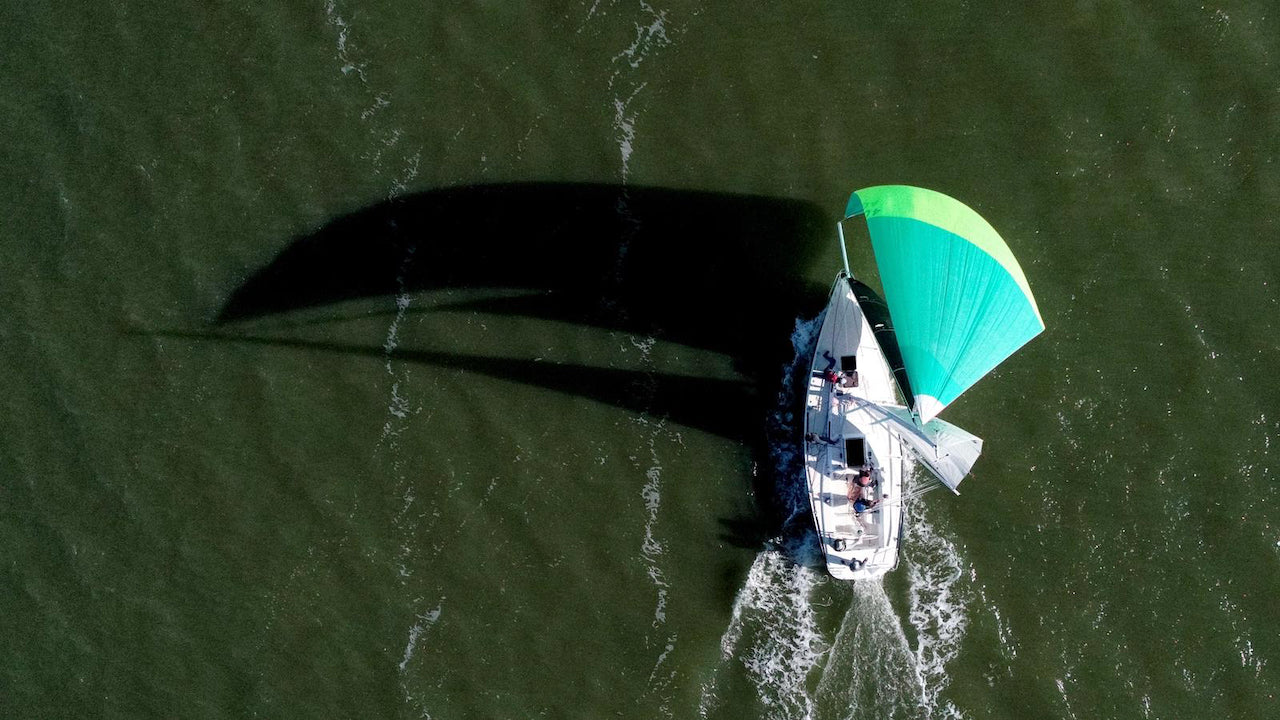
EVENT SPOTLIGHT: SCOR REGATTA
EVENT SPOTLIGHT: SCOR REGATTA
A Weekend To Remember
Photo Credit: Michael Wiser
On Friday, North Sails Sponsored a practice/tune up for visiting schools competing in the Southern Collegiate Offshore Regatta. Teams ran through practice starts for an hour while acclimating themselves to their borrowed equipment. All teams had an owner's representative onboard and crews were coached on the water by North Sails experts John Bowden, Rich Bowen, Ervin Grove and Tripp Fellabom. After several practice starts we ran 2 short course races allowing teams to perfect their boat handling and crew work around the marks. This practice would prove vital for Saturday's conditions.
Saturday morning an A and B Fleet were met with nuclear conditions in the morning and a slight decrease in pressure throughout the day. The starting line was set in the Ashley River in a flood tide(with the wind) and a windward mark 1.3 miles in the vicinity of Ft Sumpter/Sullivans Island. Two windward leeward/ twice around races were run on the incoming tide. Later in the day the tide switched for race three, which made for lumpy conditions. The final race of day one was a distance race around the harbor with a finish off the Carolina Yacht Club dock.
The race track on Sunday matched that of Saturday. The first race started in 12 knots and the wind built throughout the day with guests to 20. Again three Windward/Leeward Races were completed before a distance race finishing at the Carolina Yacht Club.
The team at North Sails Charleston takes the future of our sport very seriously. Tripp Fellabom an industry expert for over 45 years works tirelessly with many other volunteers to pull off this event. Participants of this regatta are continually graduating and moving on in life, but it is always refreshing to see them at other regattas throughout the world.
For full results, see here.
READ MORE
READ MORE
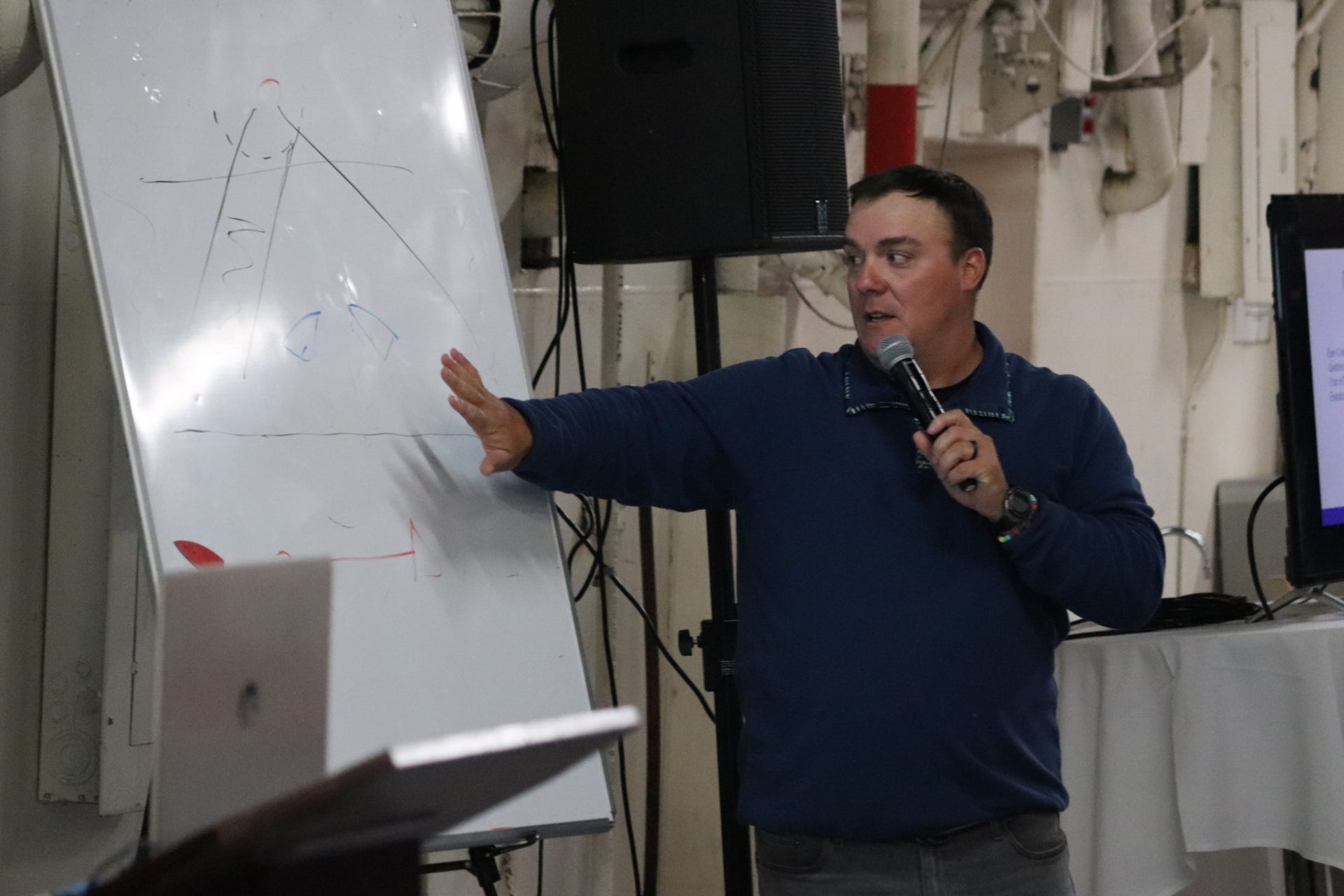
EVENT SPOTLIGHT: RACE COURSE TACTICS WITH ALLAN TERHUNE
EVENT SPOTLIGHT: CHICAGO SEMINAR SERIES
North Sails Expert Allan Terhune Explains Race Course Tactics
Sudden snow and winter winds didn’t stop sailors from gathering for the first of three winter North Sails seminars this past Wednesday. North Sails Expert Allan Terhune shared his knowledge of race course tactics to a full house at Columbia Yacht Club. He noted the importance of good boat communication and practising starts, among others things, and he made sure to touch on key differences and similarities between One Design and Mixed Fleet racing. Seminar attendee Nicole Scardigno shares how Allan's tips will help her on the race course this season.
What did you hope to learn from the Race Course Tactics seminar?
When you have not been sailing for a few months you start to lose knowledge of sailing. During the summer it is repetitive, but during the winter months its nice to have ways to stay sharp when you can't be on the water.
What was something you weren't expecting to learn but did.
Mental Tactics: I have been on boats where the captain/owner was a screamer and didn’t really care about he/she treated you. There was just a very bad vibe. I once was doing a delivery back from a very prestigious race and the captain was yelling and was so mentally and verbally abusive that I was about to take my PFD off and slide into the cold waters.
How will what you learned help you in the upcoming sailing season?
Starting. There have always been problems with the start on EVERY single boat I have sailed on. Pinging the starting line and so forth. I have sailed on some very big programs when I lived out in Newport and the professional sailors who are paid couldn’t get it.
Tell us about how you got into sailing and what you're currently racing.
I moved back to Chicago in the spring of 2018 and got involved right away with the Chicago sailing community. I have many friends who work for North so I am extremely excited when there is a training or if I can get one of my friends out on a boat to just explain everything better regarding the sails.
In Chicago, I am currently on Free Agent (Schock 35) and a few others. I help when someone needs extra hand or when the boat that I am on isn’t doing a race or beer can and I hop onto another boat. When I am in Newport, RI I sail on Jambo (First 40), Raven, International210 and a few others over 40 meters.
I started in Newport, RI learning out of Sail Newport in 2013 on brand new J22's donated by Ron O'Hanley who was CEO of Fidelity at the time, Ensigns, Rhodes 19, Shields, Herreshoff. He also has a program the boats name is Privateer and they are a Cookson 50 w/ Canting Keel. I have raced on the boat many times... Sailed on so many different types of boats when I lived out there.
A big thank you to the 90 sailors who came out to learn valuable tips for the upcoming season. Come talk sailing with us this winter! We look forward to seeing everyone soon at the upcoming seminars.
READ MORE
READ MORE
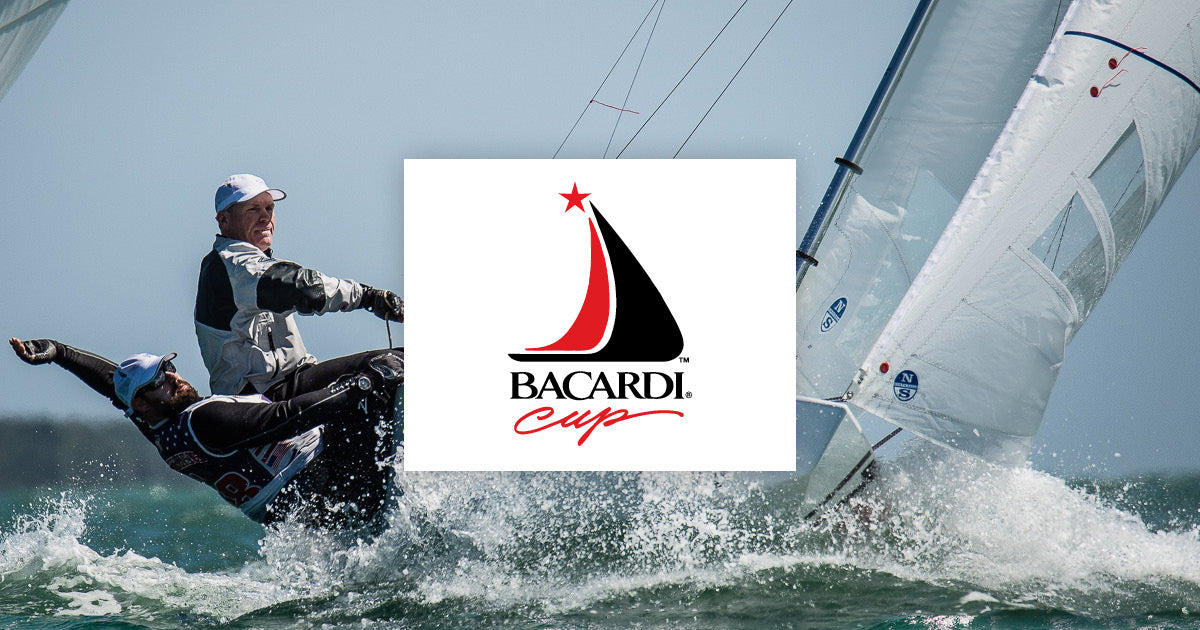
BACARDI CUP LOCAL KNOWLEDGE
BACARDI CUP LOCAL KNOWLEDGE
Get To Know Biscayne Bay
To help you prepare for the 2020 Bacardi Cup, we asked the local Star and Snipe World Champion Augie Diaz to explain about his home waters of Biscayne Bay in Miami, FL.
Biscayne Bay is I think pretty straightforward. The weather is driven by cold fronts approaching, and we don't get as much breeze as we used to because the city's grown so big. But generally, any breeze from the northeast around through the southwest is great sailing. From this direction, the breeze is usually under fifteen knots, with relatively flat water (chop but no swell). Spring and fall are the best seasons, because we don’t get many fronts.
Dominant wind direction: easterlies
The old rule of thumb is still the case: if the wind's to the left of the south end of Key Biscayne, you go left. Near the Key, from 120-160 degrees, there is a little more pressure closer to the end of the Key, and also a geographical shift off the land. How favored is somewhat current-dependent; from 70 degrees to 160 degrees with an outgoing current, then left is really good, what we call the "Old Man Expressway". At the top of the beat on the J/24 Worlds course, the Old Man Expressway could be important.
On what I call the Cuba Course, where the Etchells sail, way down south of Matheson Hammock, there's less left down there than there is closer to the point of Key Biscayne. So you have to keep in mind where you are on the Bay.
Current
Understanding the current is very important. People think the current comes in and out of the Bay from the east, but it actually runs in and out from Bear Cut. If you get close to what we call the Valves, which are the channels through the shallow areas that on the chart are labeled Biscayne Flats, there is a component of current going in and out of there. But you have to be very close to the Valves for that to be the net effect. Otherwise, the current basically ebbs from the southwest to the northeast, and goes the opposite way when it floods.
As for the timing relative to high and low tide, I've seen it as much as an hour off, so I just use tide change as a gauge and then keep checking the buoys, all the time. Sometimes seaweed will show lines of current, but I've never really seen a change in the color of the water.
Other wind directions
Once the wind gets to about 170-180, it's pretty important to protect the right. That’s true all the way to 220 degrees. Anything right of 220-230, it's going to march quickly to the northwest because that's a frontal-driven direction, which doesn't doesn't have the ability to stick.
If the wind’s right of 230 degrees, I like coming in from the top left because you get some really nice puffs off the left shore. It depends where you are on the Bay; on the J/24 course, close to the west shoreline, you’ll definitely want to come in from the top left.
Northwesters are like you're on a lake: very shifty, very up and down. But in late October, it's actually less frontal, so that’s less likely.
Secret to success
Focus on what the current's doing, and in the easterly understand how important it is to go left.
Thanks Augie!
READ MORE
READ MORE
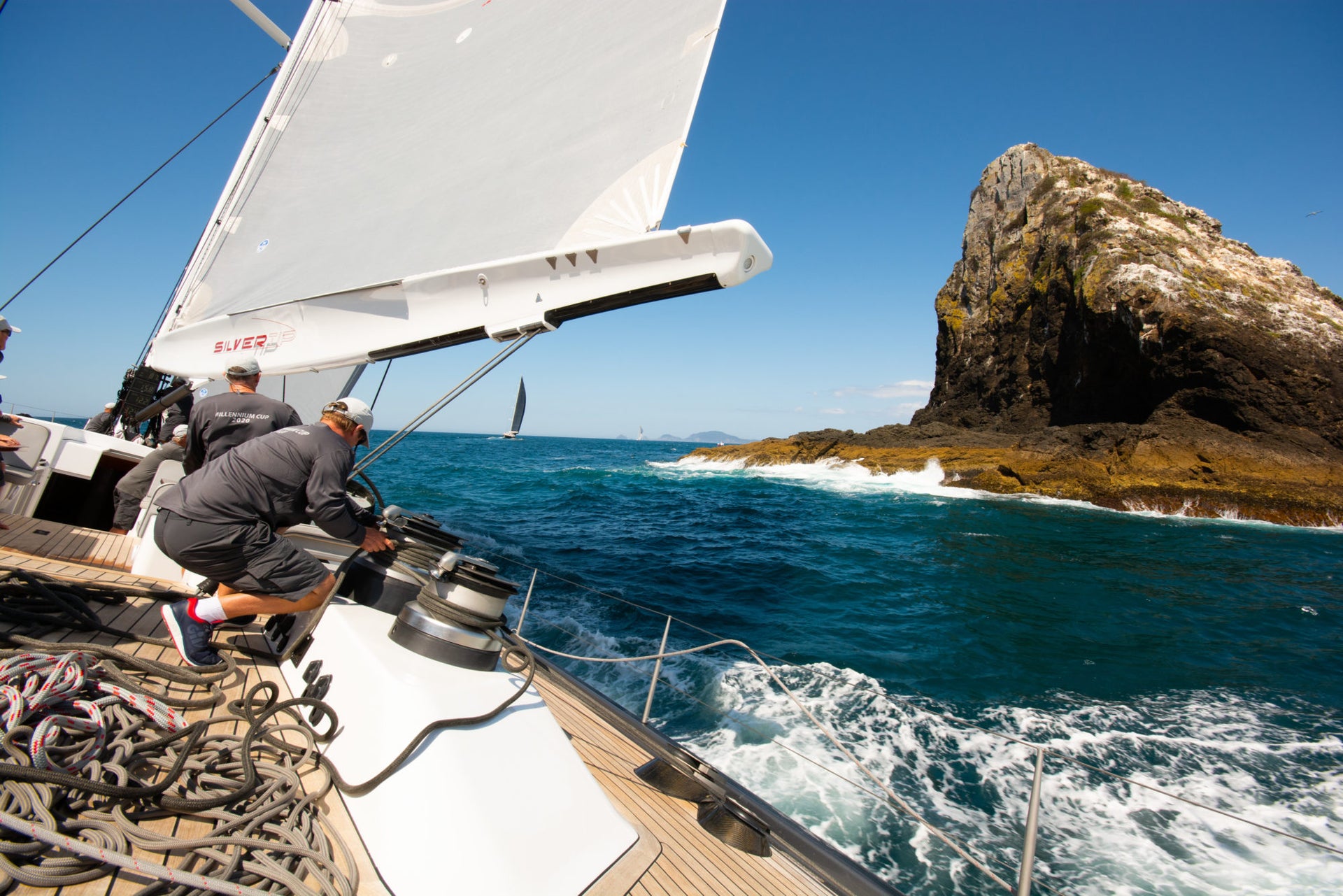
2020 MILLENIUM CUP
2020 MILLENIUM CUP
Clients Dominate in Numbers
The 2020 Millenium Cup had an outstanding showing of North clients. Client entries included Sassafras, 34.2 m Royal Huisman-built sloop. Silvertip, which was built in New Zealand by Yachting Developments, 54.6m classic-lined Adele, new entry Kawil, designed by Sparkman & Stephens, and the 40m Janice of Wyoming, which has competed in almost every Millennium Cup event since the inaugural regatta in 2000.
The 34.1 m Kawil dominated the results on corrected time, winning four of the five races, but Wills says the regatta is about more than just competition. The social side of the event also makes it one of the most enjoyable of the calendar, with the casual, holiday atmosphere of Russell and opportunities for owners and crews to mingle, giving it a point of difference to overseas regattas. Another popular event is the Tawera rum-barrel challenge, where yacht crews have the chance to race each other in rowing skiffs off the beach.
“It’s more of a shorts-and-sandals type thing, rather than long pants and collars,” Wills says. “The owners seem to really enjoy the atmosphere and the Kiwi hospitality.” The 2020 regatta was sailed in prime Bay of Islands conditions, with bright sunshine, warm temperatures, and daily afternoon sea breezes. With the natural beauty of the bay and the islands themselves, the scene was complete with regular sightings of dolphins and other sea life.
“There was some really great close racing, too. Although the boats start on a staggered grid, a few minutes apart, on the racecourse, they were quite often close together,” Wills says. “The owners particularly enjoy that aspect of the racing.”
All five entries this year were carrying a North Sails inventory, and representatives from the company sailed on each of the boats, including international guests Kimo Worthington and Mike Toppa. North Sails local experts also raced, including Andrew Wills and Matt Smeaton, superyacht project manager for the Pacific aboard Sassafras. America’s Cup and big-boat legend Tom Dodson, who works with superyacht clients around the world from his New Zealand base raced with Silvertip.
“The regatta is important to North Sails because so many of major clients are taking part,” Wills says. “It’s an opportunity for us to sail with them, talk to them about their needs and make sure they are getting the best possible service.” Sassafrass was also sporting a new set of 3Di OCEAN sails for the regatta.
“It gave the boat a whole new look, with the black sails,” says Smeaton. “OCEAN has been developed not for grand-prix racing but specifically for superyachts, but being able to make the sails in black can give quite a race look.”
The new main, genoa and staysail, plus a new gennaker, were all designed by America’s Cup expert and North Sails designer Burns Fallow and finished at North Sails’ Auckland loft.
“This regatta was the first time the new sails were used in a high-profile regatta, and we noticed an improvement in the boat’s performance,” Smeaton says. “Our speed was above polars from the year before on all points of sail.”
Smeaton says North 3Di sails are becoming the industry standard for superyachts, respected for their durability and reliability. OCEAN has the highest Ultra PE fibre content of any 3Di product, reducing bulk, weight, and stiffness while retaining ultimate breaking strength.
“It’s a big purchase, so owners want to be sure they’re getting it right,” he says. “We and the other companies in the North Technology Group, such as Southern Spars and Future Fibres, have spent a lot of time in development to make sure we can deliver the best possible rig and sails package.”
To support customers at the regatta, North Sails was able to use its Opua loft to perform quick repairs between race days and sent up its Auckland-based crane-truck to help move the large sails around.
“We were able to get sails into the loft within an hour. One of the owners commented to me how impressed he was by how quickly we could get them off the boat and to the loft to get fixed,” Wills says.
Next year’s Millennium Cup superyacht racing event in the Bay of Islands is going to be a showstopper, judging from the 2020 event, held in late January. While just five yachts took to the racecourse this year, more than five times as many are expected to grace Northland waters before the 2021 America’s Cup. North Sails New Zealand Sail Expert Andrew Wills says next year’s regatta will be both longer and held slightly later in the season, and will include the J Class classic yachts also coming to New Zealand for the America’s Cup.
“They’re talking about 25 superyachts for next year, maybe more, plus the J Class fleet,” he says. “We’re a long way down the line with planning now we have an idea of how huge it’s going to be. For anyone who is around in the Bay in February next year, it’s certainly going to be a must-see.”
READ MORE
READ MORE
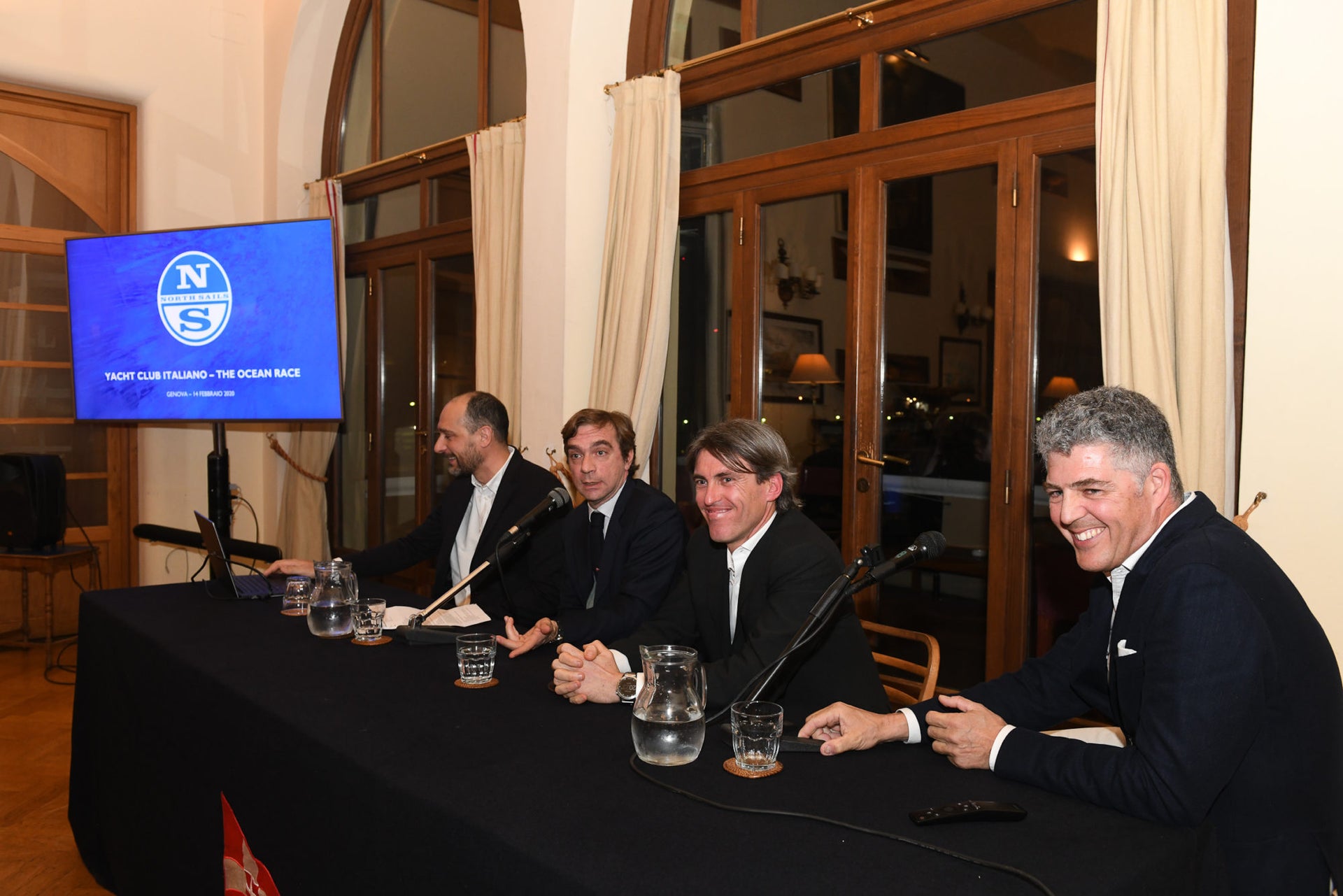
NORTH SAILS E THE OCEAN RACE
NORTH SAILS e THE OCEAN RACE
Alberto Bolzan con la Squadra North Sails allo Yacht Club Italiano
Ospiti delle grandi occasioni alla serata North Sails a tema Ocean Race Sotto la sempre ottima egida dello Yacht club italiano e del suo Presidente Gerolamo Bianchi ed il Segretario generale Nicolò Caffarena , Alberto Bolzan velista con all'attivo 2 giri del mondo in equipaggio ha parlato della sua esperienza , dei momenti difficili e delle emozioni che una regata di questa difficoltà gli ha trasmesso. Graditissimo ospite speciale il Sindaco di Genova. Marco Bucci competente ed appassionato velista. Ing. Michele Malandra uno dei migliori tecnici fluido-dinamici del gruppo North Sails ha interessato gli ospiti della serata con nozioni tecniche in merito alle peculiarità delle vele North Sails 3Di utilizzate da tutti i team della Ocean Race nelle ultime edizioni. La serata e stata anche l'occasione per ricordare Genova come tappa finale della prossima Ocean Race, un'occasione che siamo sicuri la vela italiana non si lascerà scappare.
READ MORE
READ MORE
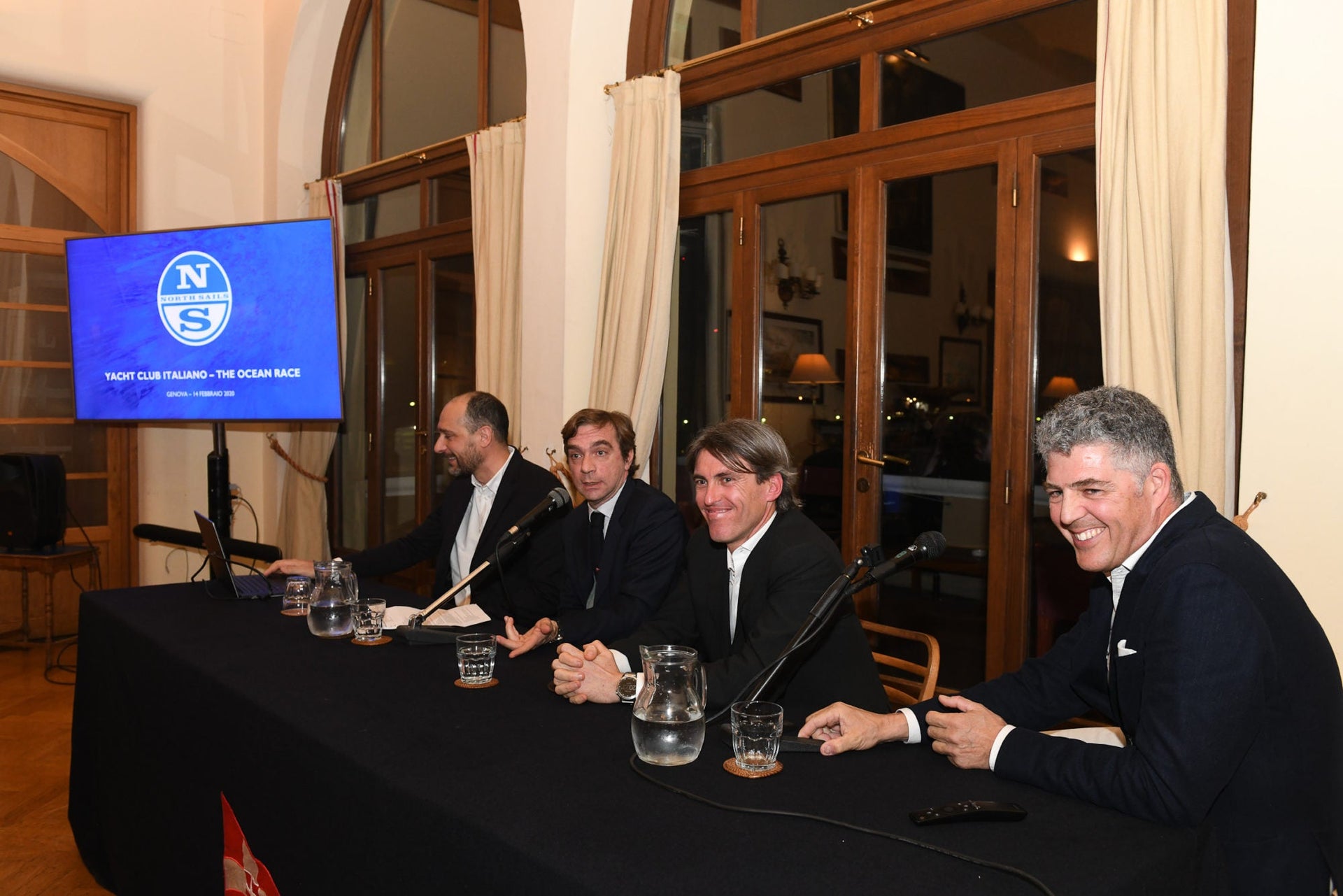
NORTH SAILS E THE OCEAN RACE
NORTH SAILS e THE OCEAN RACE
Alberto Bolzan con la Squadra North Sails allo Yacht Club Italiano
Ospiti delle grandi occasioni alla serata North Sails a tema Ocean Race Sotto la sempre ottima egida dello Yacht club italiano e del suo Presidente Gerolamo Bianchi ed il Segretario generale Nicolò Caffarena , Alberto Bolzan velista con all'attivo 2 giri del mondo in equipaggio ha parlato della sua esperienza , dei momenti difficili e delle emozioni che una regata di questa difficoltà gli ha trasmesso. Graditissimo ospite speciale il Sindaco di Genova. Marco Bucci competente ed appassionato velista. Ing. Michele Malandra uno dei migliori tecnici fluido-dinamici del gruppo North Sails ha interessato gli ospiti della serata con nozioni tecniche in merito alle peculiarità delle vele North Sails 3Di utilizzate da tutti i team della Ocean Race nelle ultime edizioni. La serata e stata anche l'occasione per ricordare Genova come tappa finale della prossima Ocean Race, un'occasione che siamo sicuri la vela italiana non si lascerà scappare.
READ MORE
READ MORE
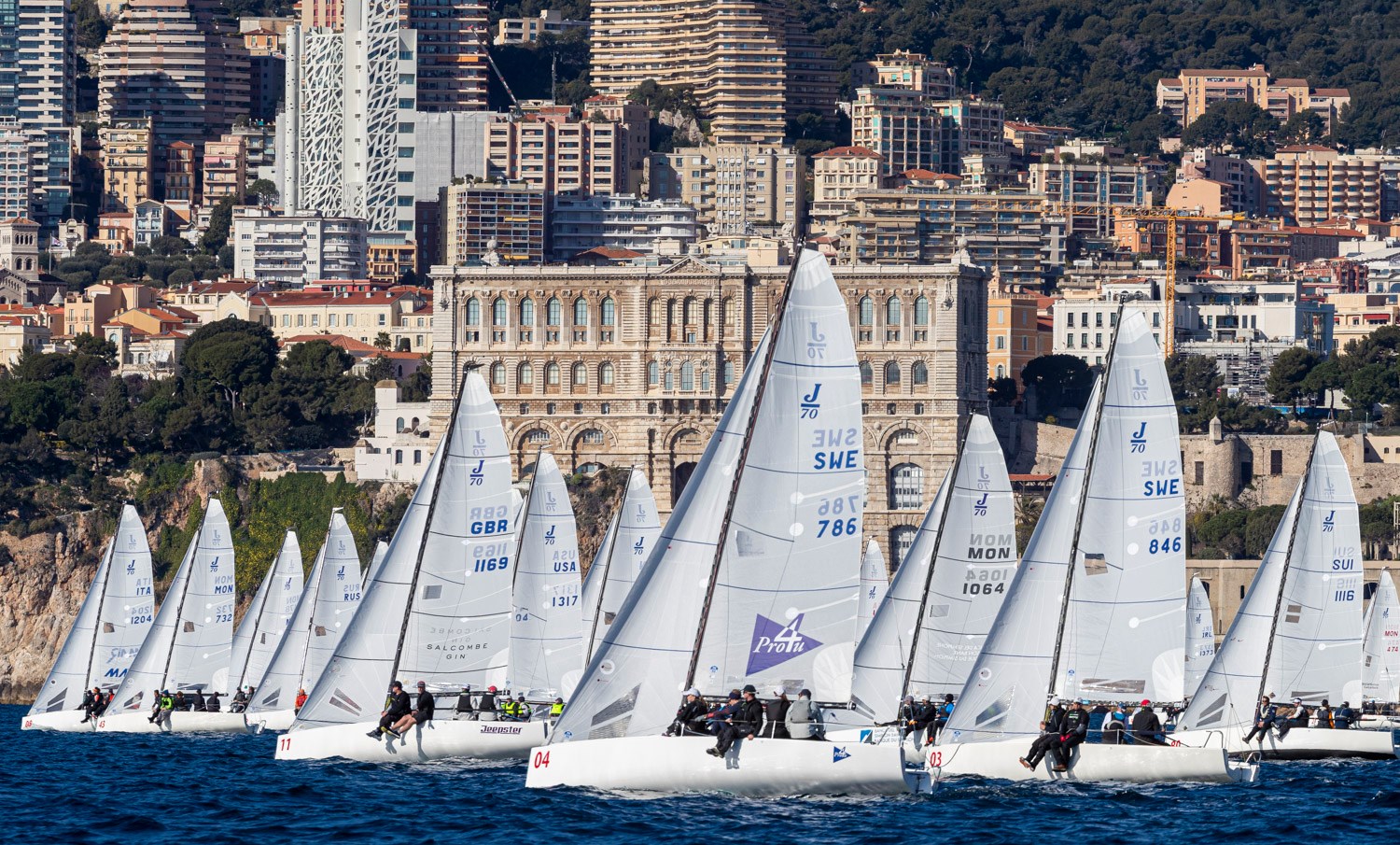
J/70 MONACO PRIMO CUP: PODIUM SWEEP
J/70 PODIUM SWEEP AT THE PRIMO CUP
A Preview of the 2021 J/70 Worlds Venue
📸 Yacht Club de Monaco
Beautiful Monaco Yacht Club hosted the 36th Annual Primo Cup, the 4th act of the European Circuit. North Sails expert Alex Curtiss sailed on Good to Go and shared his experience about the regatta, and also took some notes about the 2021 J/70 World Championship venue.
North Sails clients couldn’t be happier with their results. The top four boats used the fast North J/70 designs. Congratulations to the Russian team ELF for winning the 36th Primo Cup using the North F-1 Mainsail, J-6 Jib and AP-1 Spinnaker.
Here are Alex’s notes about the venue for the 2021 J70 Worlds in Monaco for those planning to attend:
Breeze Conditions
The dominant wind directions are E, SE, ESE, SW, WSW, and W. If the breeze is directly onshore, it has a tough time climbing the mountains that line the bay so it is a very fickle wind. If the breeze comes from offshore, the breeze will land about 10 miles away so there is hardly any wind in the bay.
Sea State
Expect a lot of chop. The city sits in a horseshoe-like part of the ocean. When waves roll in, it’s like a washing machine. There are no beaches and only concrete walls that reverb water. Expect to keep the bow down!
The Yacht Club
Monaco Yacht Club is extremely hospitable. They sectioned off large parts of the club for competitors to take advantage of. We spent a lot of time at the Sports Bar, which has an epic view of the city. Everyone who works in the sailing portion of the club is super helpful to all competitors. They are generous with lending tools when needed — and we needed a lot!
Accommodation
The Fairmont is walking distance from the club. There are great restaurants in the hotel and you can walk to the casino. Bring your sports jacket and you will fit anywhere in the city!
If you are planning on sailing in the 2021 Worlds, it would be very advisable to sail the winter series. There were 65 boats on the line this past weekend at the Primo Cup. It is a very tough fleet with high-profile teams, and mixing that with the challenging conditions is going to keep everyone working hard the entire time. Based on what Alex experienced, doing your homework and making sure you spend some time sailing at this venue will be key.
Interested in a new main or jib for your Worlds inventory? Contact your local expert today. Have questions about the Worlds venue? Alex Curtiss is here to help.
Congratulations to the Russian team ELF for winning the 36th Primo Cup powered by North Sails! 📸 Yacht Club de Monaco
📸 Yacht Club de Monaco
READ MORE
READ MORE
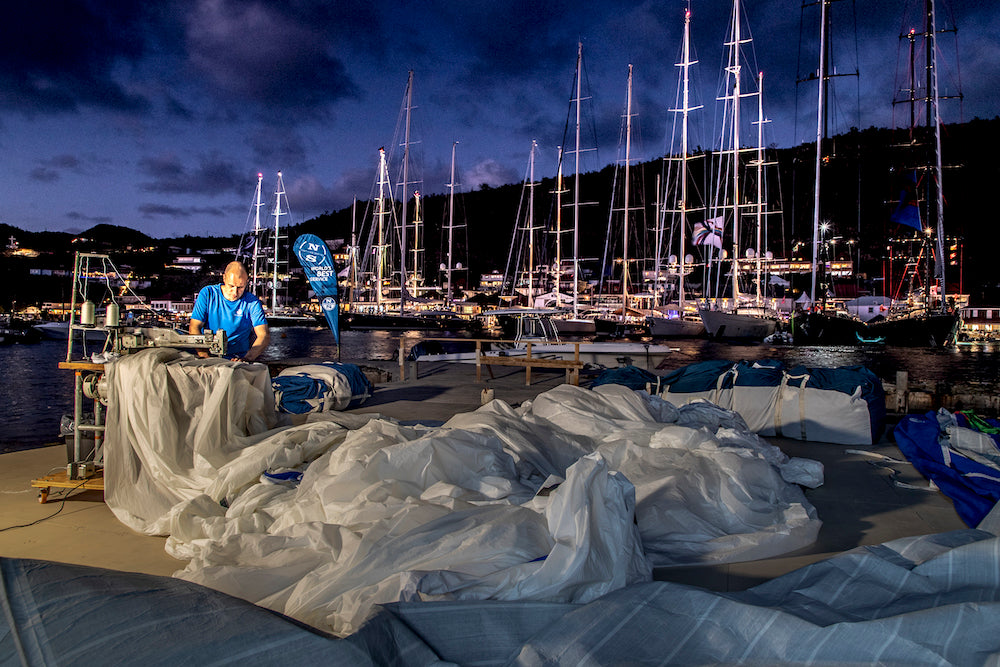
2020 SUPERYACHT EVENT SERVICE SCHEDULE
NORTH SAILS 2020 SUPERYACHT EVENT SERVICE SCHEDULE
Regatta Repair and Support On The Global Race Circuit
North Sails Certified Service gives Superyacht crews and boat owners the benefits and convenience of experience through a global network of sail lofts and Regatta Repair pop-up lofts. With unparalleled experts, technology and 14 dedicated Superyacht service lofts across five continents, North Sails is uniquely positioned to handle the logistical needs to repair Superyacht sails.
There are 10 regattas on the 2020 global Superyacht racing circuit where North Sails is equipped for overnight repairs. Our team of service experts will be onsite to offer an easy and accessible solution for all boats competing. See the event list below for specific dates and locations.
Beyond the 2020 season, the North Sails team in New Zealand is ready to welcome the many Superyachts who will travel to Auckland for the 36th America’s Cup. Our team of sales and service experts is available to support you with all your Superyacht service needs.
READ MORE
READ MORE
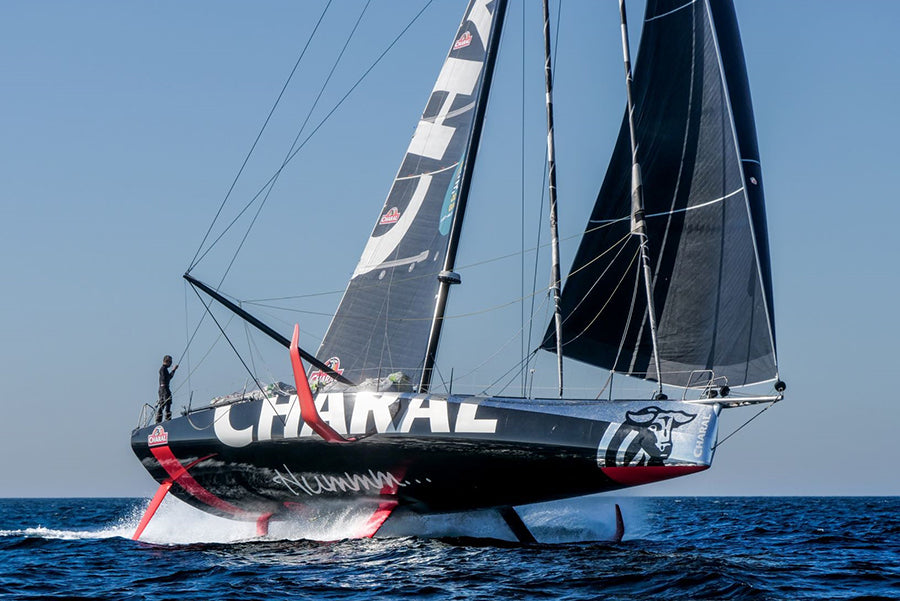
LE CONCEPT HELIX : LA VITESSE D’ABORD
LE CONCEPT HELIX : LA VITESSE D’ABORD
En vue de la préparation au Vendée Globe 2020, certains IMOCA ont bénéficié de nouvelles technologies dont la voile Helix.
© Gauthier Lebec / Charal
Plus de la moitié des IMOCA qui ont disputé la Transat Jacques Vabre en novembre 2019 portaient une garde-robe North Sails. Parmi ces IMOCA, six voiliers récents à foils ainsi que d’autres plus anciens ont bénéficié, en vue de la préparation au Vendée Globe 2020, de nouvelles technologies dont la voile Helix. Cette dernière redéfinit sans aucun doute la performance en course au large. Alors que ces bateaux dernière génération sont encore en rodage, la structure Helix semble un atout encore plus intéressant qu’on aurait pu l’imaginer. Gautier Sergent, responsable R & D chez North Sails, qui travaille en étroite collaboration avec les équipes IMOCA, nous fait le point.
Quelles sont vos impressions aujourd’hui sur les voiles Helix en IMOCA ?
Le potentiel de ces voiles est flagrant. Les charges sur le gréement monotype en IMOCA sont explicitement limitées. C’est précisément là que la technologie Helix intervient. Dans les premières confrontations réelles comme le Défi Azimut et la Transat Jacques Vabre, les bateaux équipés par North Sails, tels qu’Apivia et Charal, ont dominé les podiums comme les places d’honneur.
La voile Helix n’est pas nouvelle à North Sails. Nous en avons fabriqué des centaines (plus de 500 même) et nous ne nous lançons pas dans l’inconnu. Néanmoins, nous ne sommes qu’au début de la préparation au Vendée Globe. En effet, nous apprenons énormément des bateaux dernière génération et comment tirer la quintessence du concept Helix sur chaque type de voile dans diverses conditions. L’équipe North Sails France et moi-même avons passé d’innombrables heures à travailler avec les teams et les concepteurs / designers pour affiner les modèles numériques et comprendre les critères de performance. Nous avons désormais entamé la phase de confrontation à la réalité, du développement du bateau sur l’eau.
Les IMOCA seront menés en solitaire pour le Vendée Globe et en équipage pour la Ocean Race (ex Volvo Ocean Race). Il peut être difficile d’identifier les implications qui découlent des modèles numériques. Où met-on le curseur ?
La question n’est pas de savoir si les voiles seront Helix ou non. La question est de savoir quel pourcentage de charge fait-on passer par la voile et ce qu’il reste sur le nerf de guindant pour chacune des voiles en prenant compte de tous les paramètres de dessin de voiles : creux, position de creux, rond de guindant, vrillage de chute etc.
Pouvez-vous décrire la technologie de partage de charge ?
On parle de partage de charge pour évoquer le ratio de charge d’amure distribuée dans le guindant de la voile par rapport à celle qui passe par le nerf de guindant ou l’étai. La structure et la forme de la voile sont conçues en conséquence. Cela semble simple, et ça l’est à vrai dire. L’astuce consiste à trouver le bon rapport pour l’utilisation envisagée et ce que cela implique pour la forme de la voile. Il s’agit également de trouver la bonne raideur de câble afin qu’il interagisse harmonieusement avec la forme volante sur l’ensemble de la plage d’utilisation.
Pourquoi Helix et le partage de charge sont-ils avantageux pour un programme IMOCA ?
Nous savions que la structure Helix conviendrait à la classe IMOCA à plusieurs égards. Premièrement, Helix permet d’accroître la plage d’utilisation d’une voile. Les changements de voile en IMOCA sont très pénalisants, comme nous l’avons vu dans le Défi Azimut et la Transat Jacques Vabre, riche d'enseignements pour les allures portantes notamment. Avec le système Helix, vous pouvez vous concentrer sur la vitesse du bateau dans un éventail de conditions accru et ne pas perdre des milles à cause de changements de voile coûteux. La deuxième raison est la limite de charge imposée par les gréements monotypes alors que les foils peuvent générer un couple de redressement dynamique nettement supérieur. En transférant une grande partie de la charge de drisse / amure dans le guindant de la voile, on diminue les tensions dans le gréement sans compromettre le devers de guindant. C’est particulièrement bénéfique quand le bateau vole sur ses foils, accélère et génère de plus en plus de couple de redressement. Enfin, compte tenu de la nature dynamique, pour ne pas dire instable de ces bateaux, il est important d’avoir très peu de devers de guindant pour que la forme volante soit stable et convertisse tout changement de vent apparent en force propulsive et non latérale. Les IMOCA ne sont pas autorisés à se doter de plans porteurs arrières sur les safrans, et naviguer dans une mer formée au large est un véritable rodéo, avec des accélérations brusques suivies de décélérations tout aussi nettes, un tangage et un roulis très dynamiques. Être capable de maintenir les forces aérodynamiques projetées vers l’avant atténue les mouvements du bateau et augmente ainsi les vitesses moyennes.
© Jeremie Lecaudey / BPCE
Quels sont les gains de performance permis par Helix ?
La vitesse ! La vitesse ! Et plus de vitesse ! Helix apporte de la polyvalence, c'est à dire une capacité de réglage via la charge d'amure réduite, offrant la possibilité d'adapter la forme volante à vos conditions. La jauge IMOCA n’autorise que 8 voiles à bord et les changements de voile sont très pénalisants. C’est d’autant plus vrai que les nouveaux bateaux sont beaucoup plus rapides que la génération précédente à certains angles. Les milles défilent lorsque vous naviguez à 90 degrés de la route et que vos adversaires sont sur le cap à plus de 25 noeuds…
Le 3Di est particulièrement adapté à la technologie Helix en raison de son ratio élasticité / poids inégalé. Un petit ajustement entraîne un changement notable de la forme volante. Le 3Di a aussi la capacité à supporter des charges élevées tout en gardant les voiles légères. Sans parler de la répartition minutieuse de la densité et de l’orientation des filaments permettant de gérer les charges secondaires sur le biais lors de l’enroulement. L’autre paramètre majeur est que les bateaux naviguent selon deux modes distincts : en archimédien (non volant) et en vol (en appui sur les foils). Cela signifie de grandes variations de vent apparent. Les voiles Helix délivrent une puissance constante et propulsive au bateau. On atteint alors des moyennes élevées plutôt que des accélérations furieuses qui se terminent dans un nuage d’embrun, l’étrave sous l’eau.
Que nous réserve la classe IMOCA et comment North Sails assiste ses clients dans leur préparation ?
Les équipes ont commencé à s’entraîner avec leur nouveau jeu de voiles l'été dernier pendant de nombreuses sessions assistées par l’équipe de North Sails France, puis à régater dans un premier test en compétition lors du Défi Azimut et sur la Transat Jacques Vabre en novembre 2019, première véritable course au large de ce cycle. Nous les avons aidés à mieux appréhender le concept et la performance des voiles Helix pendant les entraînements, ainsi qu’à affiner les détails propres à chaque bateau et à chaque marin. Nous avons collecté des données de navigation, échangé avec les navigants, identifié des gains et des améliorations à apporter et avons recalibré les modèles afin de poursuivre l’optimisation et atteindre le vrai potentiel du bateau. Tout cela nous permet aussi de mieux comprendre le comportement des bateaux en action et dans diverses conditions. L’équipe de service North a tout mis en œuvre pour assurer le contrôle des voiles et des derniers ajustements avant la Transat Jacques Vabre, une course majeure et très prisée. Pour nous comme pour les équipes, l’idée est de capitaliser sur les enseignements que l’on peut tirer de cette course. Le temps en mer, surtout en compétition est précieux. D’autant qu’en double, la cadence peut être un peu plus constante et la façon de naviguer plus agressive, notamment avec une pénalité à la manœuvre légèrement réduite. Mais ce n’est qu’un tremplin sur la route du Vendée Globe, et souvent le vrai premier test au large pour les bateaux nouvelle génération ainsi que les bateaux dotés de nouveaux foils. Après ces premiers enseignements, les équipes mettent à profit la saison hivernale pour effectuer des modifications sur leur machine et leurs équipements. Les prochains tests grandeur nature seront The Transat en mai et New York - Vendée en juin, deux courses en solitaire cette fois pour s'approcher un peu plus encore du format du Vendée Globe.
READ MORE
READ MORE
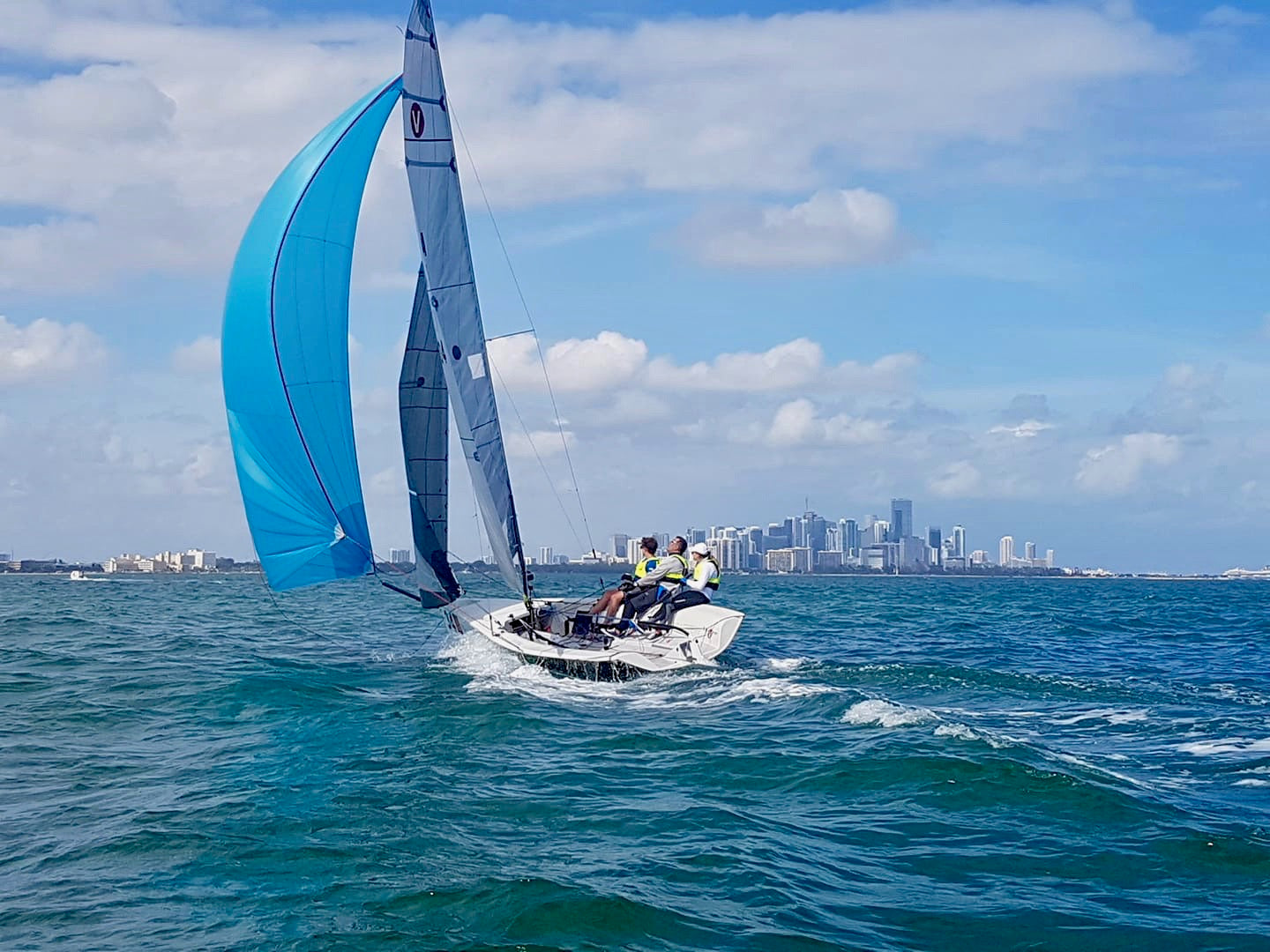
BENVENUTTI WINS VIPER 640 WINTER SERIES
BENVENUTTI WINS VIPER 640 WINTER SERIES
Key Tips for Sailing in Heavy Hair
The third regatta of the Viper and VX One Winter Series in Sarasota, Florida delivered excellent weather, friendly competition, and a great onshore atmosphere. After enjoying a Saturday debrief led by our experts, North Sails customers took all but two of the top ten places in both classes. In the Viper, Peter Ill won with North Sails expert Austin Powers on board, while the VX One class was won by Esteban Forrer and Hayden Bennet.
The Viper class also concluded its three regatta winter series, which was won by Jackson Benvenutti with help from Jesse Fielding, Jan Majer, Nick Ward, and Chris Morgan.
Sunday’s 18-22 knots allowed teams to test out their heavy air prowess upwind, while going for top personal speeds downwind. (One VX One posted a 19.2 knot 10 second average). While straight line speed was fun, many Vipers and VX Ones wiped out while jibing. Gybing in big breeze takes lots of practice and crew coordination, but here are some tips to help keep the boat on its feet.
Keep the boat moving into the jibe
Time and time again, I see crews take their attention off going fast when setting up for a jibe. If you slow down before jibing, the boat loads up as the apparent wind increases on the sails and gets knocked over as soon as the boom crosses. Instead, heat up to increase boat speed just before you jibe and minimize the apparent wind. This keeps the boat under a more consistent load, making it much easier to keep the boat underneath the sails. Picking a wave to jibe on always helps as well.
Use a blow-through jibe
When the driver starts the turn, overtrim the sheet until the clew comes back to the shrouds. As soon as the kite backwinds, the driver should slow the turn to allow the trimmer time to pull the new kite sheet through. Once the kite fills, the driver slowly heads up to the final course.
“When you do wipe out”
We’ve all been there. When you do wipe out, blow the spinnaker halyard halfway until the boat is back on its feet again. Overtrim the jib to turn downwind, and then rehoist the kite to get moving again. If the boat stays on its side even after the spinnaker halyard is dropped halfway, try pulling the clew around the headstay to help get the boat pointed downwind and in control again. Then re-hoist the spinnaker.
Next Viper stop: Gulf Coast Championship in Fairhope, AL. See you there!
Left-right: Viper Winter Series champions on Psycho Tiller! | 2nd Place Winter Series Peter Beardsley on “Great Scott” | 3rd Place Winter Series 3 Peter Ill (winners of event 3)
READ MORE
READ MORE
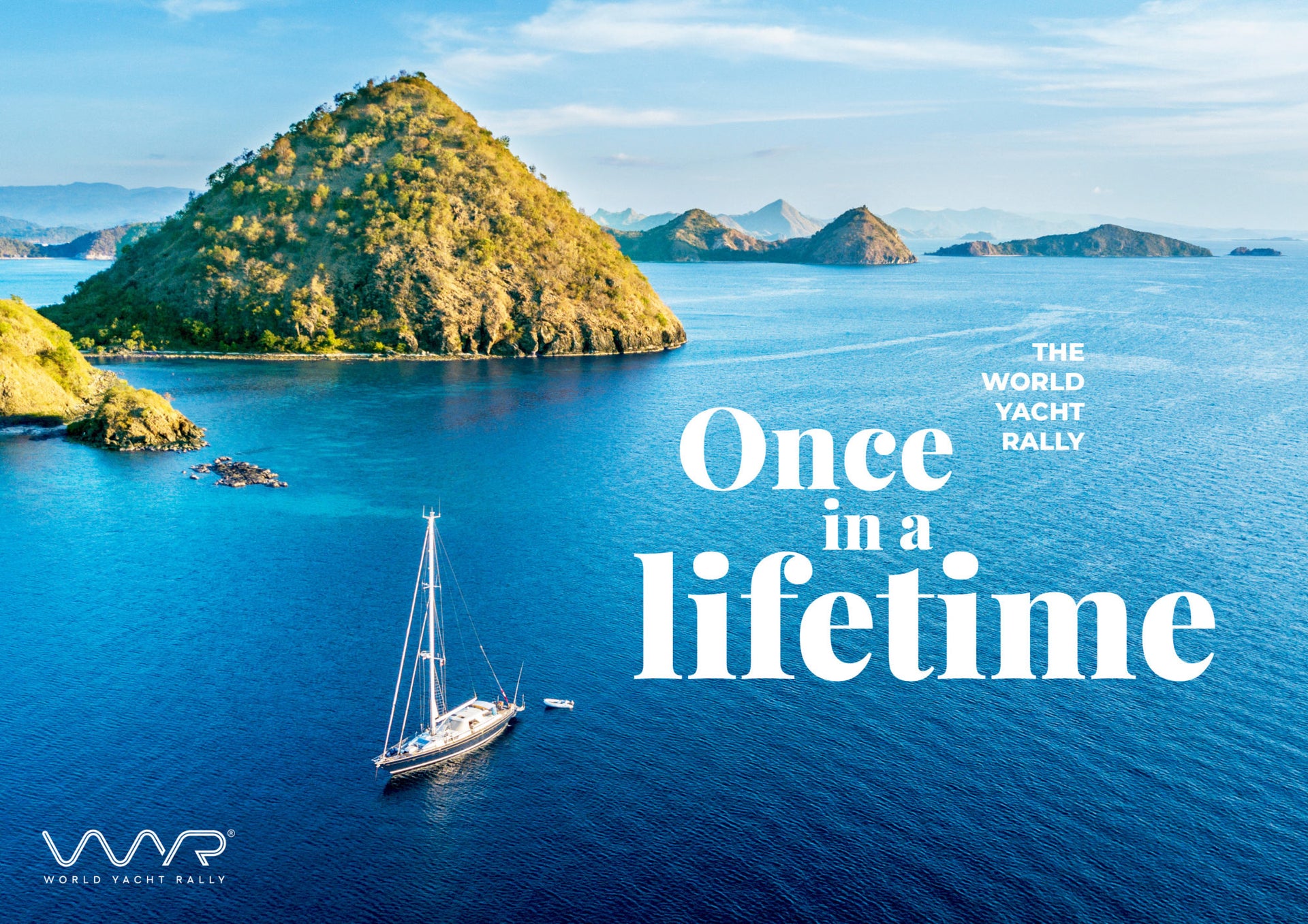
REGISTRATION IS OPEN FOR THE WORLD YACHT RALLY
NORTH SAILS IS A TECHNICAL PARTNER TO THE WORLD YACHT RALLY
Registration is Open for an Exciting New Cruising Rally Concept
North Sails is excited to partner with the World Yacht Rally to bring a new concept cruising rally to life. Developed by Volvo Ocean Race shore team veterans, the World Yacht Rally aims to bring the best of professional race team support and route planning to the participating cruising yachts. North Sails is signed onto the rally as a Technical Partner to provide race participants with unmatched sail care through the almost 40,000-mile route.
Set to start in Alicante, Spain, the World Yacht Rally is a seventeen stop, two and a half year adventure for cruising boats 50’ and above. There are two slots open to begin the rally; November 2020 and November 2021. Participation is limited to 30 yachts and, the rally entry fee includes weather routing, security assessment, berthing, medical support, safety training, administrative support, social events and the yacht service support needed to sail around the world worry-free. Participants will also have the option to access the World Yacht Rally crew pool of professional sailors, charter their vessel for legs and benefit from logistics, travel and supply support from the rally organizers.
Commenting on the partnership, Nick Bice of the World Yacht Rally, “Having worked alongside North Sails for many years during our Volvo Ocean Race days, there is no better solution to cover all the bases when setting out on such an adventure. Built on a foundation of Grand Prix sailing, North Sails is a fantastic addition to the professional level of service the World Yacht Rally is aiming to deliver.”
North Sails President Ken Read concluded, “Like the rally management team, North Sails has experience helping sailors get around the world safely. The World Yacht Rally is an exciting concept for our company as we now have an opportunity to show our offshore experience to a new and important group of sailors. Many people in the sailing world know North Sails as a racing company, and the same reliability and sailor support we provide for racers are the same requirements cruising sailors need to make their passages safe and enjoyable. The World Yacht Rally concept is unique in that the level of support participants will receive through their experience is unlike any cruising rally to date.”
Learn more about how to register for the World Yacht Rally.
About the World Yacht Rally:
The World Yacht Rally is a once in a lifetime adventure taking you to breathtaking locations and several impressive metropolises. An adventure in which you are supported and where you can take the time to enjoy and explore each location you cruise to. An adventure where you’ll meet new cultures, new friends and finally get to fulfill that dream – sailing round the world.
We provide the support to ensure you have everything you need to sail safely, comfortably and as worry-free as possible. Each of our team has worked as part of the Volvo Ocean Race – running the Boatyard, directing all on water-matters, managing race teams or preparing stops. We were responsible for providing all of the support elements we offer as part of the WYR to the best ocean sailors in the world and know what to expect from a circumnavigation, how to prepare for it and handle the unexpected.
READ MORE
READ MORE
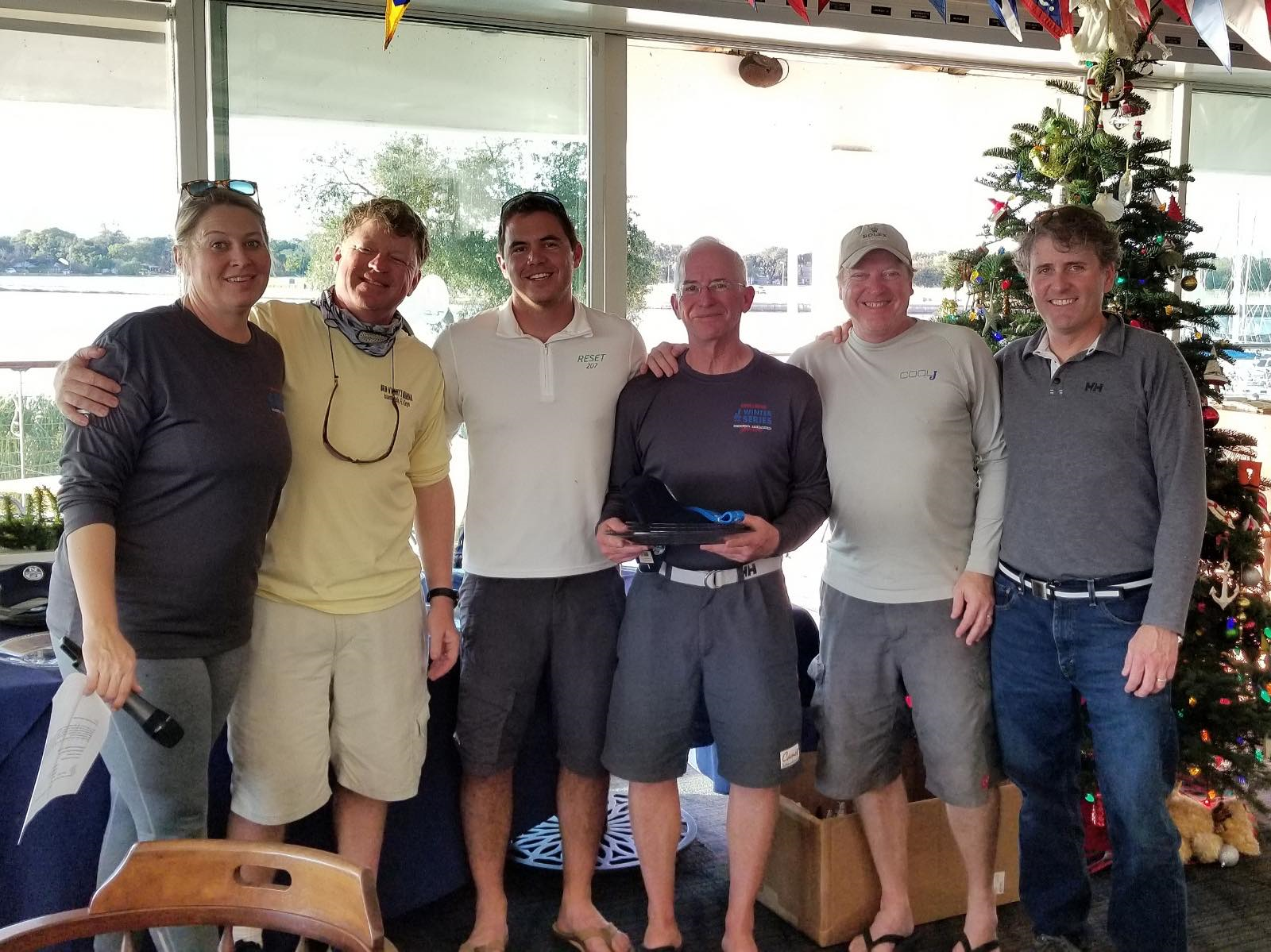
WINTER SERIES WRAP UP
WINTER SERIES WRAP UP
Sailors Fly South For The Winter Series Events
When sailors want to compete in the winter months, they head to Florida to sail in the winter series events since there are plenty of one design sailing fleets that are actively racing. Florida offers an astounding number of Winter Series events in various locations, so no matter what your flavor of One Design Racing, there is a series for you. No surprises here but it's just great to see our local sailors from Annapolis representing down there all winter long. Check out how many of our local sailing heroes have made the trip down to FL to race this winter.
J70 Davis Island Series
Ayacucho - James Gary, Travis Carlisle, Edward Gary, Pat Isherwood, Lexi Foos
Building A - (Crew) Allan Terhune, Cate Terhune, Austin Powers
Columbia - (Crew) Ian Moriarty
Danger Mouse - Taz Coffey, Kristen Berry
Down the Line - Dave Manheimer (JWorld)
Phoenix - Peter Firey and Team
Planet Claire - (Crew) Zeke Horowitz and Mike Coe
Viper640 Sarasota Series
Evil Hiss - Mary and Geoff Ewenson
Caterpillar - (Crew) Austin Powers
Gnixe - Bill Vickers / Chip Steiner
J70 Bacardi Miami Series
NINE - (Crew) Ian Coleman
Empeiria - (Crew) Zeke Horowitz
Rimette - (Crew) Allan Terhune
Bazinga! - (Crew) Kristen Berry
Weight Up! - Harry Brigham, Keith Hahn, Shannon Lockwood, Ian Moriarty
Etchells Miami Series
Playmaker- Allan Kelly
Goombay Smash - Chris Larson
Shades- Geoff Ewenson
VX One Sarasota Series
Alternative Facts- Paul Murphy
READ MORE
READ MORE


